MINING IN CANADA
Advanced critical minerals projects in Ontario
MINING IN THE DIGITAL AGE
MAKING THE UNSEEN SEEN MINES ARE UNDERGROUND SMART CITIES
AUTONOMOUS TECHNOLOGIES
RESHAPING THE MINING TRUCKS
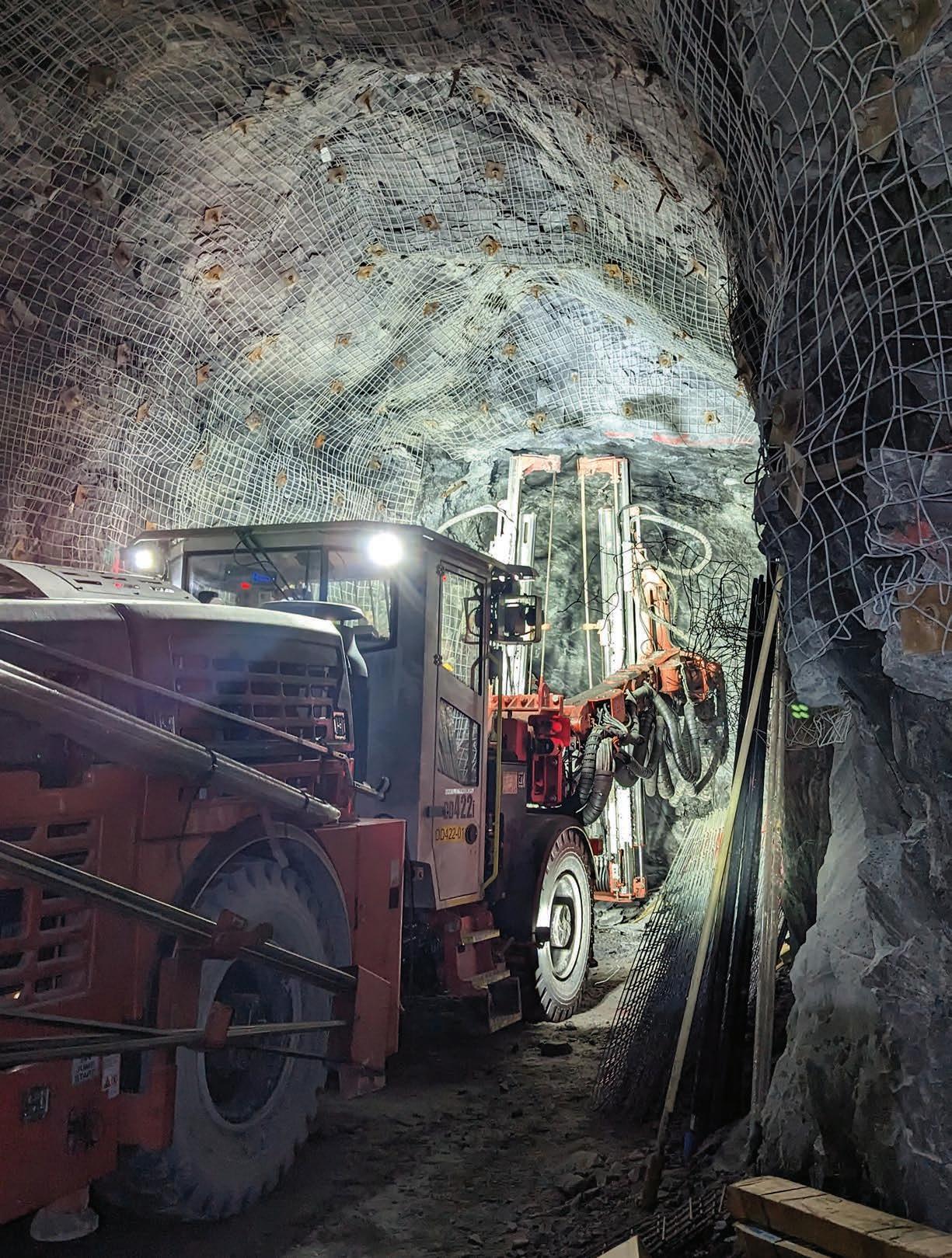
AUTONOMOUS DRONES ARE CHANGING THE MINE MAPPING GAME
MIN(E)D YOUR BUSINESS
FOREIGN INVESTMENT IN CRITICAL MINERALS
MAY 2023 | www.canadianminingjournal.com | PM # 40069240
Join Our Monthly Mining Newsletter
Long-term solutions for sustainable mining


No spam here, just quality content to help your mining operations excel.
Get expert-level features covering in-depth topics that will answer some of your burning questions - emailed directly to your inbox.
Matching the dump body to the payload
Over the past 30 years, SMS Equipment has designed, fabricated, and assembled hundreds of custom dump bodies for off-road mining trucks.
Recruiting
skilled workers in remote regions
A career in Heavy Equipment Maintenance provides benefits and growth opportunities that few industries can match.

FEATURES
MINING IN CANADA
14 British Columbia’s exploration sector hits 10-year expenditure high.
16 Updates on advanced critical minerals projects in Ontario.
24 Why government transparency matters for B.C.’s mining sector.
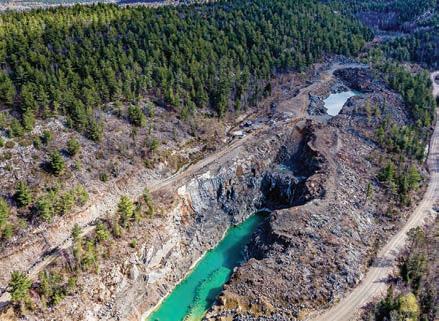
MINING IN THE DIGITAL AGE

26 Autonomous technologies reshaping the trucks mining depends on.
34 The future of core logging.
46 Mines are underground smart cities.
ARTIFICIAL INTELLIGENCE AND MACHINE LEARNING
28 Veracio: A bigger vision for better use of the Earth’s resources.
36 Making the unseen seen: Interview with Yair Frastai, CEO and co-founder of VerAI Discoveries.
DRONES
40 Autonomous drones are changing the mine mapping game.
41 Using drone technology to improve water testing at mines.
MAINTENANCE
43 Tips for selecting the best modern fuel storage solution.
48 A world of records: Overland conveyors go the distance.
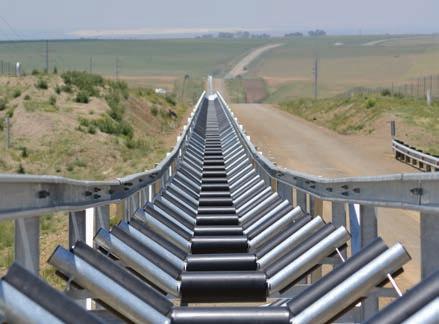
60 Screens: Make the old new again and save money.
AUTOMATION AND ROBOTICS
52 Automation provides solutions for sustainable mining.
INDIGENOUS PEOPLES
54 Indigenous engagement is transforming the future of mining.
RECRUITMENT, TRAINING & CAREERS
56 Electric mining in the digital age: A workforce revolution.
HISTORY OF MINING
58 Mining the Americas in deep time.
DEPARTMENTS
4 EDITORIAL | Mining in the digital age: Adapt or get left behind.
6 FAST NEWS | Updates from across the mining ecosystem.
8 CORRECTION |
9 LAW | A glance into recent changes impacting miners in Zambia.
11 MIN(E)D YOUR BUSINESS | Foreign investment in critical minerals: Key considerations for mining companies and investors.
61 ON THE MOVE | Tracking executive, management, and board changes in Canada’s mining sector.
www.canadianminingjournal.com

More Information
visit www.canadianminingjournal.com
regular updates on
happening
mining companies
their personnel
here and abroad.
digital version of the magazine
available at https://www.canadianminingjournal.com/digital-edition/
in June/July 2023 Canadian Mining Journal’s June/July issue will report on mine closure and reclamation, equipment maintenance and repair, and mining in Saskatchewan, Manitoba and Alberta.
For
Please
for
what’s
with Canadian
and
both
A
is also
Coming
Front cover image: Sandvik’s DD422i Jumbo bolter in action. CREDIT: SANDVIK
16 46 MAY 2023 VOL. 144, N O .4
CANADIAN MINING JOURNAL | 3 48
Mining in the digital age: Adapt or get left behind
Tamer Elbokl, PhD
The mining industry requires constant innovation to optimize production, lower costs, and improve the safety for workers. The industry is changing, and artificial intelligence (AI) and machine learning (ML) technologies can make a big difference and help mining companies adapt, especially when facing unpredictable events. AI has many benefits for the industry; however, it is still very new and there is a lot of work that needs to be done while applying it, which requires a robust foundation of planning, research, communication, and change management.
The implementation of AI, ML, and autonomous technologies in the mining industry started more than a decade ago with autonomous trucks. These technologies provide many economic benefits through cost reduction, efficiency, and improving productivity, reducing exposure of workers to hazardous conditions, continuous production, and improved safety. However, this implementation has faced economic, financial, technological, workforce, and social challenges.
Several articles in this issue discuss the status of various technologies’ implementation in the mining industry and highlight potential applications. There are also two interviews with AI and ML industry leaders (pages 28 and 36) that discuss the technology offered by their companies/start-ups and what their perceptions are for the future. On page 56, an article in the Careers section discusses the threats, challenges, benefits, and potential impacts of these advanced technologies on the workforce. It is important to highlight that inefficient implementation can result in revenue loss, system failures, and other potential risks, resulting in labour’s resistance to the change.
I should mention that AI and ML start-ups in the mining sector could benefit from a recent announcement that the federal government is launching a new Crown corporation to help businesses commercialize their research and protect their intellectual property. The Canada Innovation Corp. (CIC) is a renamed version of a plan first announced in the 2022 budget, where it was called the Canadian Innovation and Investment Agency. The budget said it would have $1 billion in funding over five years, but Ottawa announced it would allocate $2.6 billion to the new corporation over four years and promised annual funding, thereafter, promising that it “will not be just another funding agency.”
We launched a new department called “Min(e)d your business” in this issue (see page 11). As the name suggests, the new department will discuss investments in the mining sector and potential risks associated with them.
I also invited John Sandlos, who is a professor in the History Department at Memorial University of Newfoundland, to contribute a series of articles on the history of mining (especially in the Americas) to the Canadian Mining Journal. The first article is published on page 58 of this issue, and several more will follow in upcoming issues.
Finally, if you are planning to attend the CIM Expo in Montreal at the beginning of May, please swing by The Northern Miner Group’s booth #1405 to collect a hard copy of this May issue. CMJ
MAY 2023 Vol. 144 – No . 04
225 Duncan Mill Rd. Suite 320, Toronto, Ontario M3B 3K9
Tel. (416) 510-6789 Fax (416) 510-5138 www.canadianminingjournal.com
Editor in Chief Dr. Tamer Elbokl TElbokl@CanadianMiningJournal.com

News Editors
Marilyn Scales mscales@canadianminingjournal.com
Moosa Imran mimran@canadianminingjournal.com
Production Manager
Jessica Jubb jjubb@glacierbizinfo.com
Advisory Board
David Brown (Golder Associates)
Michael Fox (Indigenous Community Engagement)
Scott Hayne (Redpath Canada)
Gary Poxleitner (SRK)
Manager of Product Distribution
Allison Mein 416-510-6789 ext 3 amein@glacierrig.com
Publisher & Sales
Robert Seagraves
416-510-6891 rseagraves@canadianminingjournal.com
Sales, Western Canada
George Agelopoulos
416-510-5104 gagelopoulos@northernminer.com
Toll Free Canada & U.S.A.: 1-888-502-3456 ext 2 or 43734
Circulation Toll Free Canada & U.S.A.: 1-888-502-3456 ext 3

President, The Northern Miner Group
Anthony Vaccaro
Established 1882
Canadian Mining Journal provides articles and information of practical use to those who work in the technical, administrative and supervisory aspects of exploration, mining and processing in the Canadian mineral exploration and mining industry. Canadian Mining Journal (ISSN 0008-4492) is published 10 times a year by Glacier Resource Innovation Group (GRIG). GRIG is located at 225 Duncan Mill Rd., Ste. 320, Toronto, ON, M3B 3K9 Phone (416) 510-6891.
Legal deposit: National Library, Ottawa. Printed in Canada. All rights reserved. The contents of this magazine are protected by copyright and may be used only for your personal non-commercial purposes. All other rights are reserved and commercial use is prohibited. To make use of any of this material you must first obtain the permission of the owner of the copyright. For further information please contact Robert Seagraves at 416-510-6891. Subscriptions – Canada: $51.95 per year; $81.50 for two years. USA: US$64.95 per year. Foreign: US$77.95 per year. Single copies: Canada $10; USA and foreign: US$10. Canadian subscribers must add HST and Provincial tax where necessary. HST registration # 809744071RT001.
From time to time we make our subscription list available to select companies and organizations whose product or service may interest you. If you do not wish your contact information to be made available, please contact us via one of the following methods:
Phone: 1-888-502-3456 ext 3; E-mail: amein@glacierrig.com
Mail to: Allison Mein,
225 Duncan Mill Rd., Ste 320, Toronto, ON M3B 3K9
We acknowledge the financial support of the Government of Canada.
4 | CANADIAN MINING JOURNAL www.canadianminingjournal.com
FROM THE EDITOR
“REDUCE BLAST CLEARANCE TIME, GREENHOUSE GASES AND INCREASE ENERGY SAVINGS WHILE REDUCING CAPEX COSTS BY 50% COMPARED TO TRADITIONAL ANALOG SYSTEMS.” Automated airflow that’s a breeze to control.


MaestroFlex™ Regulator
The MaestroFlex™ Regulator automatically adjusts airflow on operating levels. Installed at the fresh air raise, return air raise or both, our automated regulators replace drop board manual regulators that cannot be adjusted from the control room. Finally, surface operators now have the ability to control ventilation as required either manually or using VoD software.
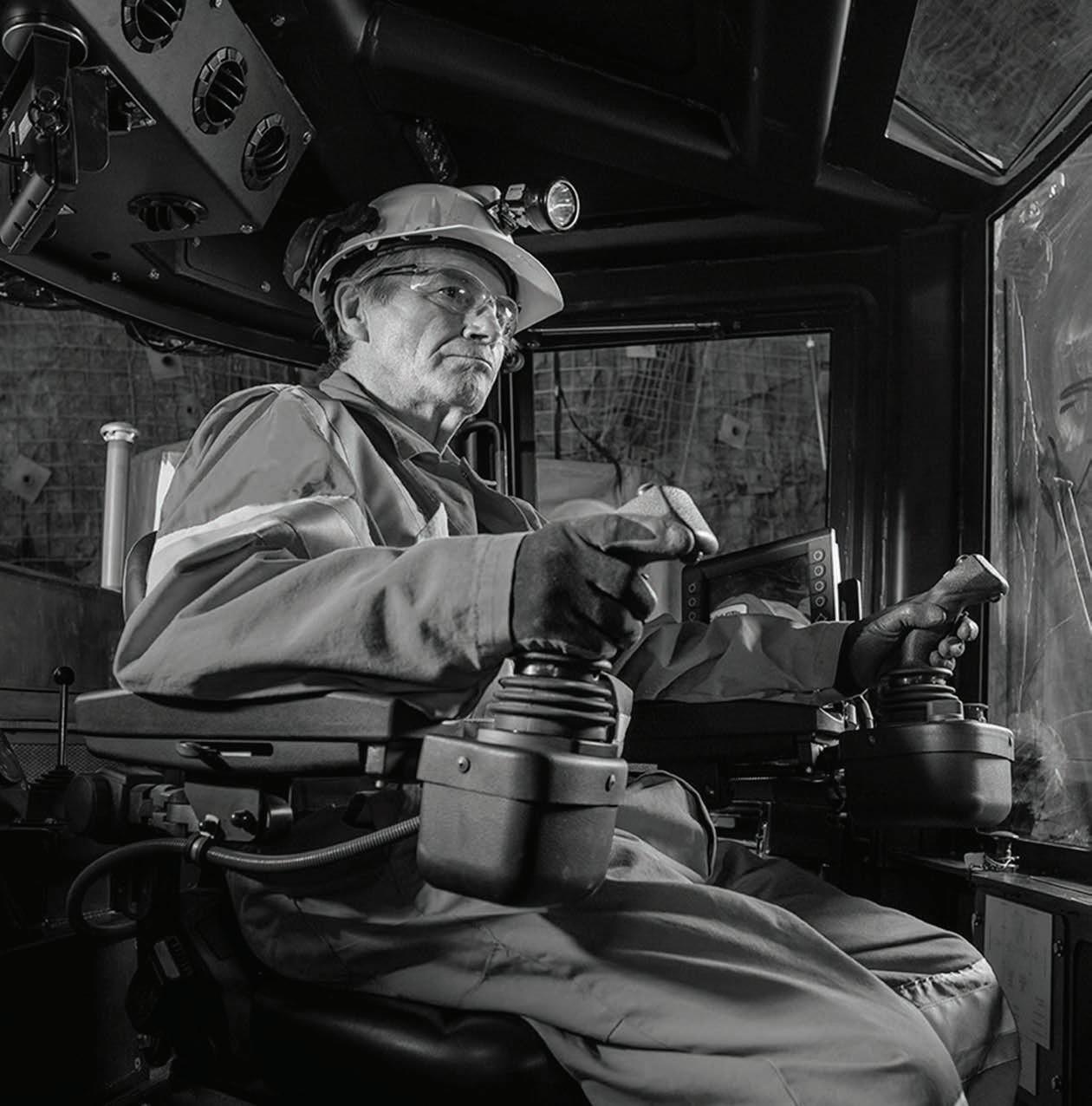
Booth 1415
maestrodigitalmine.com
Air
Throne. See you at the Northern Ontario Mining Showcase at CIM.
to the
Updates from across the mining ecosystem
• MERGER | Hudbay, Copper Mountain merger to create Americas-focused copper miner

Hudbay Minerals and Copper Mountain Mining have entered into a definitive agreement to create a copper producing powerhouse with projects across the Americas. Together they will produce 330.7 million lb. of copper annually, making Hudbay the third largest Canadian copper producer.
The all-share combination will see Hudbay acquire all the common shares of Copper Mountain. The transaction represents a US$439 million equity value. Copper Mountain shares will be valued at $2.67 each, which represents a 23% premium to its shareholders based on the company’s 10-day volume wighted average share price on April 12, 2023. Existing Hudbay and Copper Mountain shareholders will own about 76% and 24% of Hudbay, respectively.
After the arrangement closes, the Hudbay board will include two seats for Cop-
per Mountain representatives, and the Hudbay executive team will include select members from the Copper Mountain team. In light of the transaction, Copper Mountain president and CEO Gil Clausen has postponed his retirement until the deal closes. Both companies’ officers and directors have entered into voting support agreements and will be voting their shares in favor of the merger.
After the transaction, Hudbay will have three long-life operating mines with exploration upside, three large-scale development projects, and one of the largest resource bases among intermediate copper producers. The net value of the portfolio will be balanced approxi-
mately 55% from North America (Canada and United States) and 45% from South America (Peru).
There will be an estimated US$30 million annual operating efficiencies, including US$20 million from applying Hudbay’s efficiencies at the Copper Mountain mine. CMJ
MacLean’s new ML5 offers safety and versatility
The latest in the line of MacLean Engineering’s 5 Series, the safe and versatile ML5 Multi-Lift, is available for underground mines around the globe. The first unit – a battery electric model – is ready to ship to an Australian customer. It will go into service in the second quarter.
The newest addition to the MacLean utility vehicle (UTV) product line was initially designed as a safe and purpose-built alternative to the use of integrated tool carriers in underground operations across Australia. It will be put into service for mine services installation and repair work from a certified elevated work platform with a 6.5 metre working height and a 4.5 tonne payload.
The ML5’s safety and versatility dividends are embedded in the unit’s OEM design from the ground up. The slew boom range of motion delivers best-inclass coverage, along with in-basket operator controls and remote drive.
The boom’s hydraulic and mechanical linkages are doubled-up for safety. And a quick hitch design allows for easy switch-out between multiple baskets, as well as the use of forks or a jib boom for material handling and general underground construction.
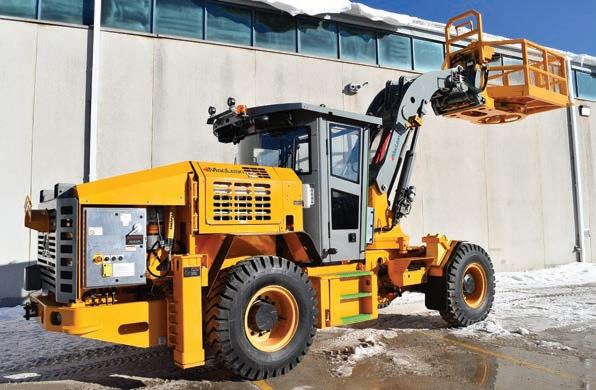
The launch of the ML5 complements MacLean’s suite of ele-
new versatile underground
vated work platforms – the SL2 and SL3 scissor lifts and the LR3 boom lift – for high reach and heavy load mine service applications. All are available in various sizes and configurations depending on the customer’s haulage ramp and drift sizes, the size and weight of the infrastructure being installed or repaired, and the working height. CMJ
6 | CANADIAN MINING JOURNAL www.canadianminingjournal.com
FAST NEWS
• UNDERGROUND |
The Copper Mountain mine located in B.C. will soon join the Hudbay portfolio CREDIT: COPPER MOUNTAIN MINING
MacLean’s
ML5 platform MACLEAN ENGINEERING
Make sure to send your press releases to: editor@canadianminingjournal.com
DEEPLY INVESTED IN MINING.
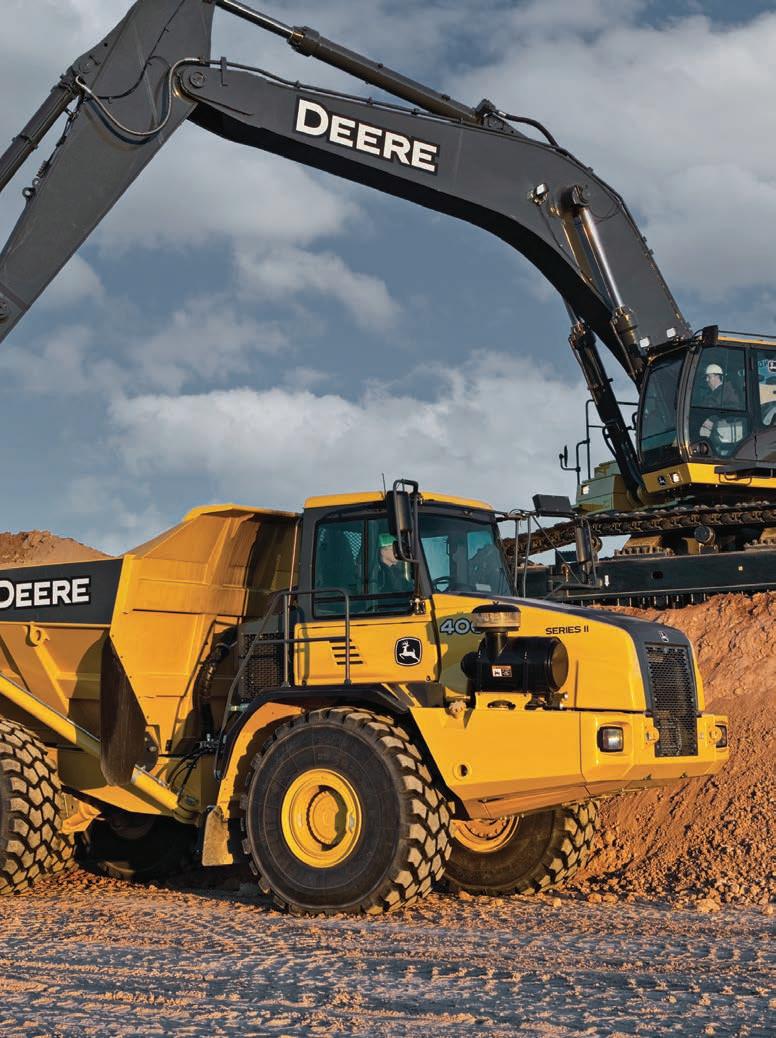
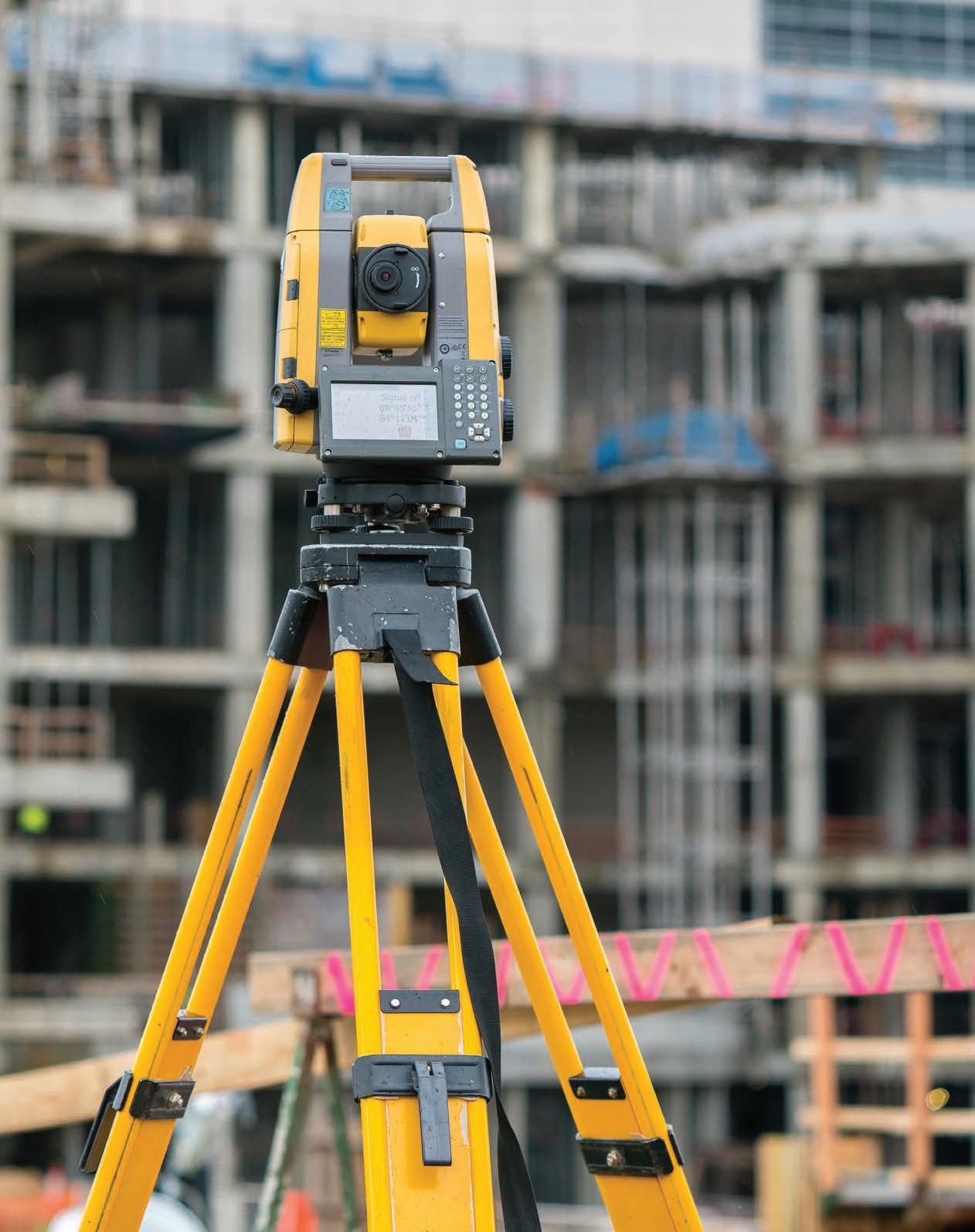
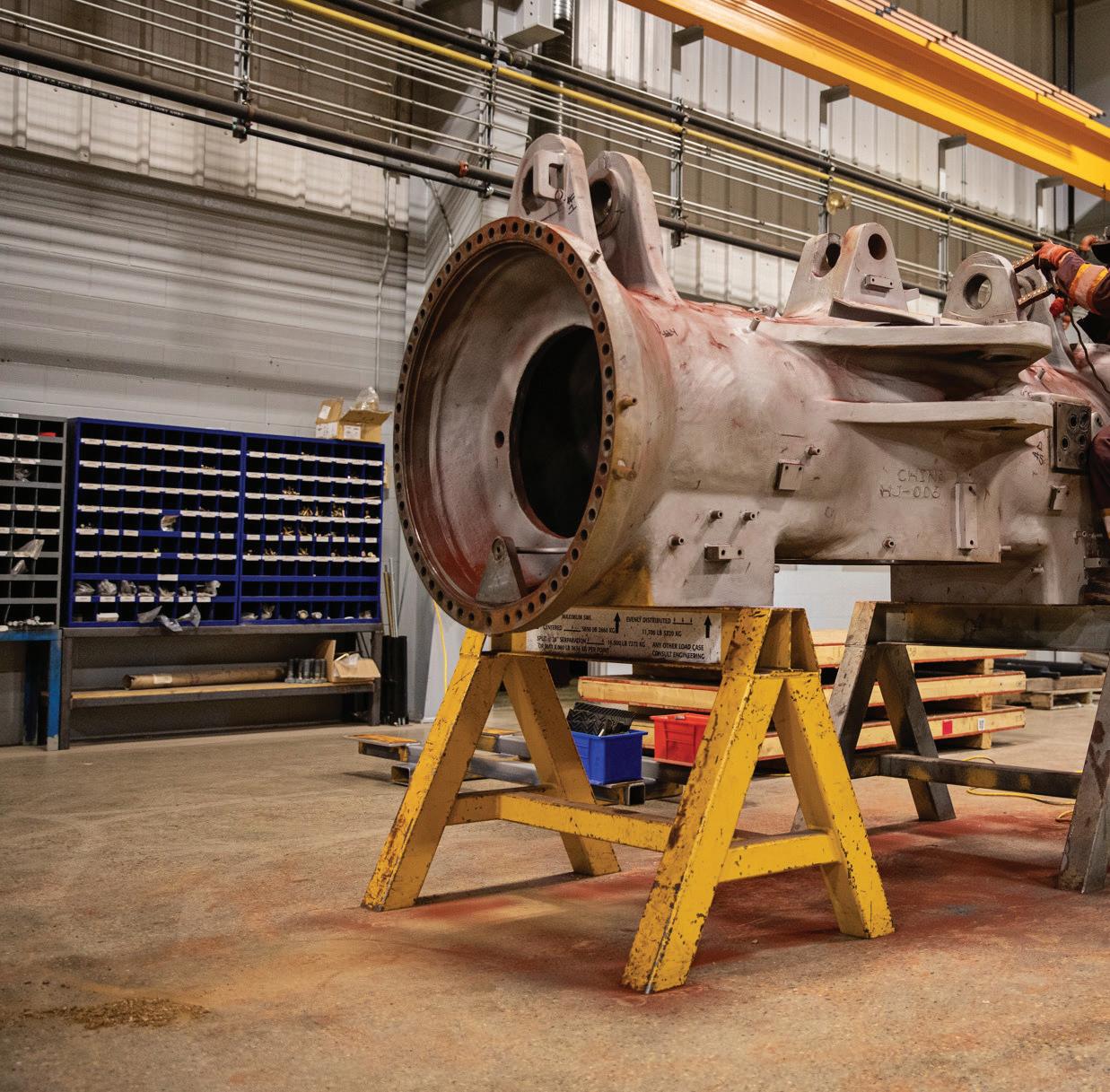


Updates from across the mining ecosystem
• RARE EARTHS | Defense Metals tests hydrometallurgy on Wicheeda samples
Defense Metals has completed phase 1 of its hydrometallurgical testing of rare earth samples from the Wicheeda project near Prince George, B.C. The pilot tests were conducted at SGS Lakefield, in Ontario. The main objective was to test the flowsheet for operability and identify any changes that might be required before a longer test campaign.
Currently, the company has reported that the extraction of praseodymium and neodymium from the acid bake calcine was more than 90%. Minor changes will be made to the circuit ahead of phase 2 tests and an alternative product precipitant will be used.
The Wicheeda property has an aftertax net present value of $761 million, at 8% discount rate, and an after-tax internal rate of return of 18%. Capital payback could occur within five years from start of production, assuming partial self-funding of hydrometallurgical plant. Revenues will average $381 million per year from sales of rare earth mineral concen-
trates and mixed rare earth hydrometallurgical precipitate.
Production of a high-grade flotation concentrate, with an average grade of 43% total rare earth oxide (TREO), is planned for sale directly to the market directly for the first four years and then for feed to a project hydrometallurgical plant.
Base-case economics were calculated using rare-earth-oxide (REO) prices of
• LEACHING | Altamira says thiosulphate leach recovered 92% of gold
Altamira Gold says metallurgical tests using a thiosulphate leach on drill core composite samples have a 92% gold recovery rate. The samples came from the recent Maria Bonita discovery at the Cajuerio project in Para state, Brazil.
SGS Australia and CSIRO laboratories tested the use of Clean Earth Technologies’ proprietary thiosulphate leach as a non-cyanide approach to treating gold ores.
The test included grinding the sample to 80% passing 75 microns and then placing it in an agitated thiosulphate leach. After 24 hours, 92% of the gold was recovered. A cyanide leach test conducted in parallel using the same grind and leach time yielded 91%.
The Cajueiro project is a historic placer producer of 250,000 oz. gold in the 1980s and 1990s. The project has an NI 43-101 compliant oxide resource of 850,000 indicated tonnes grading 0.92 g/t gold and 1.7 million inferred tonnes at 1.12 g/t. There is also a sulphide resource of 4.8 million indicated tonnes at 1.04 g/t and 11.0 million inferred tonnes at 1.29 g/t gold. Altamira acquired the property in 2016. CMJ
Correction
On page 14 of the printed version only of April 2023 issue, the last sentence under “Jama” section should read “Explore the full line of Jama vehicles at www.Jama.se.”
US$5.76/kg TREO for flotation concentrate and US$14.04/kg TREO for mixed REE carbonate precipitates. A study on Wicheeda contemplates a 1.8 million t/y mill throughput, over a 19-year project life, which includes three years of construction.
The updated Wicheeda resource estimate comprises a 5.0 million indicated tonnes averaging 2.95% TREO and a 29.5 million inferred tonnes averaging 1.83% TREO (0.5% cut-off). CMJ
• OPEN PIT | Artemis Gold orders Cat fleet for Blackwater
Artemis Gold issued a purchase order to Finning International for the primary and ancillary mining fleet required for the initial phase 1 of operations at the company’s Blackwater mine project.
The primary order consists of a Cat 6040 hydraulic excavator, a Cat 6060 hydraulic excavator and a fleet of Cat 793NG 250-tonne haul trucks. This fleet will provide the load and haul capacity for the initial years of operations and will be expanded as needed. The ancillary fleet consists of Cat 992 front end loaders, Cat 785 haul trucks, Cat D10 dozers, Cat D9 dozers and 18M graders. Total value of the equipment is in the order of $134 million.
The equipment is expected to start arriving in late 2024.
Blackwater is an open pit mine, carbon-in-leach mill, located in B.C. and 100% owned by Artemis. It has a base case after-tax net present value at a 5% discount of $2.1 billion and initial development capital cost of $645 million. The total measured and indicated mineral resource is estimated at 597 million tonnes at 0.65 g/t gold-equivalent, 0.61 g/t gold, and 6.4 g/t silver for a total of 12.4 million gold-equivalent oz. The life of mine is an expected 23 years.
During phase 1, throughput in the first four years is expected to be 6.0 million t/y and bump up to 9.0 million t/y in year five. Average annual gold production is expected to be 321,000 oz. at an all-in sustaining cash cost of U.S. $578/oz. CMJ
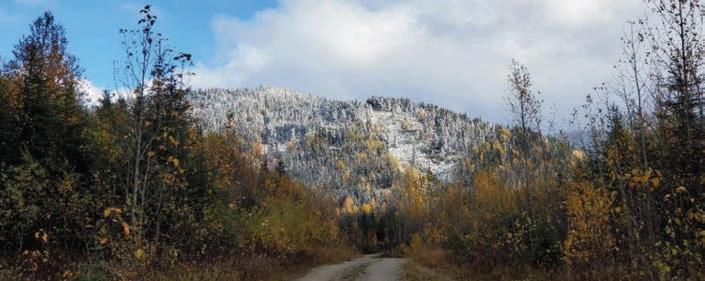
8 | CANADIAN MINING JOURNAL www.canadianminingjournal.com
FAST NEWS
Site of the Wicheeda rare earths deposit in central B.C. CREDIT: DEFENSE METALS
Zambia has been a major mining country for nearly a century, and mining continues to be the backbone of its economy. This article highlights recent trends and expected reforms in the country’s mining sector. Throughout, these changes emphasize the need to develop comprehensive and responsive mineral resource regulations and policies that address and reconfigure the growth prospects of the mining sector and the country at large. This is particularly important in view of the world’s energy transition agenda. Zambia’s copper industry is poised to take center stage with respect to green energy as copper and manganese have now been designated by the European Commission (EC) as critical minerals in its proposed Critical Raw Materials Act.
REFORMS
Recent mineral royalty
The Income Tax Act effective Jan. 1, 2023, introduced the following tax reforms:
> Reduction of property transfer tax on transfer of mineral rights held by exploration companies from 10% to 7.5%;
> deductibility of mineral royalty tax when determining the taxable income of mining companies; and
> introduction of presumptive tax (4% to 10%) for artisanal and small-scale mining based on gross turnover.
This legislation has provided mining companies with major tax relief.
Transfer pricing
In 2018, the income tax (transfer pricing) (amendment) regulations, statutory instrument no. 24 of 2018 became effective. The regulations provide the applicable basis upon which adjustments may be made to transactional prices in controlled transactions, principles of comparability, transfer pricing methods, choice of transfer pricing methods, and rules governing transactions between parties. The regulations also provide for country-by-country reporting for large multinationals including mining companies. Zambia adopted the OECD-recommended three-tiered documentation structure consisting of (1) master file; (2) local file; and (3) country-by-country reporting (CbCR). Small to midsized companies are however exempt from the regulations.
Mining cadastre
In February 2022, the ministry of mines and minerals development, imposed a 44-day suspension on the issuance of mining rights. The suspension was for the government to facilitate an extensive audit on the mining cadastre department, as it has
A glance into recent changes impacting miners in Zambia
 By Joseph Jalasi, Rachel Howie, and Diora Ziyaeva
By Joseph Jalasi, Rachel Howie, and Diora Ziyaeva

the sole responsibility of overseeing granting and managing of mineral licenses throughout the country. At the end of the audit, a number of active expired mining licenses in the system have since been deleted to pave way for new applications.
The noteworthy concerns for potential and current license holders following the audit are the disclosure of beneficial ownership, the connection of the mining cadastre system to other government databases, and the introduction of restrictions on the number of active mining rights that can be held by a single beneficial owner. Potential license holders should ensure that they are registered or incorporated as a company in Zambia, while current mining right holders should ensure that their beneficial ownership information is up to date and accurate. This clearly means that more areas will become available for investors.
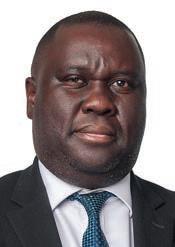
Mining policy and regulation

The government, through the ministry of mines, launched the 2022 National Mineral Resource Development Policy on Nov. 11, 2022. The highlight of the policy is to create a semi-independent mining regulator. Currently, the director of mines regulates the mining industry.
CONTINUED ON PAGE 10
MAY 2023 CANADIAN MINING JOURNAL | 9
LAW
“The mining industry is expected to be of critical importance to Zambia for the foreseeable future.”
PHOTO: KYLIE ELLWAY/ADOBE IMAGES
TRENDS International arbitration
Recently, some investors in the mining sector have pursued arbitration in international forums to resolve disputes against the Zambian government. These disputes have led to International Centre for Settlement of Investment Disputes (ICSID) arbitrations and have involved shareholder disputes between joint venture companies, state-owned enterprises, and international investors.
Zambia is a signatory to the New York Convention on the Recognition and Enforcement of Foreign Arbitral Awards. In 2022, in a bid to restore investor confidence, Zambia also enacted the Investment Trade and Business Development Act, No. 18 of 2022. This act provides for enforcement of investment protection and promotion agreements between an investor and the government of the Republic of Zambia.
Parent company environmental liability claims
The United Kingdom Supreme Court (UKSC) case of Vedanta Resources PLC and Konkola Copper Mines PLC v. Lungowe and Others, 2019 UKSC 20, has brought to the fore peculiar considerations about mining companies operating in Zambia and liability for parent companies in claims of negligence and breach of statutory duty against members of their group.
There appears to be a trend of mining companies operating

in Zambia being sued for environmental claims involving their subsidiary’s operations in Zambia. After the Vedanta case, at least one other miner has been sued (in the South African high court) for environment claims with regards to operations of its subsidiaries in central Zambia that took place in the 1970s.
Takeaways
The mining industry is expected to be of critical importance to Zambia for the foreseeable future. These recent changes, which focus on clarity in ownership and aligning internal policies with global developments, highlight the need for miners to work with local counsel on their license ownership status and on strategies to mitigate recent dispute trends. CMJ
The authors would also like to thank Chama Simbeye, an associate at Dentons Eric Silwamba, Jalasi, and Linyama legal practitioners, and Wana Chinyemba, a research assistant at Dentons Eric Silwamba, Jalasi, and Linyama legal practitioners, for their contributions to this article.
JOSEPH JALASI is a senior partner and the head of tax, mining, corporate, banking, and finance department for Dentons Eric Silwamba, Jalasi, and Linyama legal practitioners. RACHEL HOWIE is a partner and co-lead of Dentons Canada’s litigation and dispute resolution practice group.
DIORA ZIYAEVA is a partner in Dentons U.S. international dispute resolution group.

LAW
10 | CANADIAN MINING JOURNAL www.canadianminingjournal.com
By Sasa Jarvis, Beth Riley, Joshua Chad, and Ravipal S. Bains
Foreign investment in critical minerals
Key considerations for mining companies and investors



Canada has long been an attractive destination for foreign investment, thanks in part to its rich natural resources, including its vast reserves of minerals and metals. These minerals are viewed as essential to Canada’s long-term prosperity, and Canada is eager to both grow and protect its mining industry. However, as the global geopolitical landscape shifts, Canada’s stance on foreign investment in its mining sector has also evolved. This consideration came to the fore in November 2022 when the Canadian government announced the blocking of three investments in Canada’s critical minerals sector. Given the current political and legal landscape, Canadian mining companies and non-Canadian companies who own Canadian mining assets or who are looking to invest in Canadian mining assets need to understand the complex Canadian regulatory landscape that applies to minerals and mining, and how it applies to a subset of minerals termed “critical minerals.”
What is critical?
In its Critical Minerals Strategy, published in 2022, the Canadian government provides a comprehensive summary of those 31 minerals considered to be critical minerals. These minerals have few or no substitutes, are strategic and somewhat limited commodities, and are key materials needed for electric vehicle batteries and motors, semiconductors, batteries, and other technology and energy related areas. Of the 31 critical minerals identified in the strategy, six minerals (lithium, graphite, nickel, cobalt, copper and rare earth elements) are prioritized for their distinct potential to spur Canadian economic growth.
The strategy aims to position Canada as a trusted and reliable supply of responsibly sourced and sustainably produced minerals, while also recognizing the strategic value and importance of critical minerals to Canada’s own national security and the importance of bilateral cooperation with allied countries. The five core objectives of the strategy are (i) supporting economic growth, competitiveness, and job creation; (ii) promoting climate action and environmental protection; (iii) advancing reconciliation with Indigenous Peoples; (iv) fostering diverse and inclusive workforces and communities; and (v) enhancing global security and partnerships with allies.
The strategy addresses six areas of focus for meeting the objectives of the strategy, namely: (i) driving research, innovation, and exploration; (ii) accelerating project development; (iii) building sustainable infrastructure; (iv) advancing reconciliation with Indigenous Peoples; (v) growing a diverse workforce
and prosperous communities; and (vi) strengthening global leadership and security. The strategy focusses predominantly on developing value chains (as compared to the traditional focus on supply chains), from exploration and extraction, to processing and manufacturing, to product use and recycling.
Investment Canada Act – national security reviews
The Canadian government has many tools to achieve its foreign policy objectives, including the Investment Canada Act (ICA), which is Canada’s primary legislation for overseeing foreign investment into Canada. The ICA’s stated purpose is to review significant investments in Canada by non-Canadians in a manner that encourages investment, economic growth, and employment opportunities in Canada, while also reviewing all investments into Canada that could be injurious to Canada’s national security. While the ICA assesses foreign investment in several ways (including reviewing significant investments into Canada that exceed high financial thresholds to confirm that they are of “net benefit” to Canada), for critical minerals, the key review regime now is the government’s ability to conduct national security reviews of foreign investments.
National security reviews are conducted at the government’s discretion and assess whether an investment could be, as mentioned above, “injurious to national security.” Governmental guidance indicates that all investments by state-owned and state-influenced enterprises (SOEs) will be subject to enhanced scrutiny, regardless of the size or value of the investment, and such SOE investments will be scrutinized even more if they involve investments in critical minerals or energy, with the government cautioning parties to identify any potential connections to “SOEs or entities linked to or subject to influence by hostile or non-likeminded regimes or states.”
Following in the footsteps of this guidance, in November 2022, the Government of Canada announced that it had conducted national security reviews of a “number of Canadian companies engaged in the critical minerals sector, including lithium” culminating in orders that three foreign investors, each based in China, divest their interests in the following three TSXV-listed Canadian lithium exploration companies:
1. Sinomine (Hong Kong) Rare Metals Resources (Sinomine) was ordered to divest its “past and ongoing investments,” including a 5.7% minority interest, in Power Metals Corp., a company with

MAY 2023 CANADIAN MINING JOURNAL | 11
MIN(E)D YOUR BUSINESS CONTINUED ON PAGE 12
lithium and other mineral assets in Ontario. Sinomine also had an offtake agreement in connection with these assets. In December 2022, Power Metals announced that Winsome Resources agreed to acquire Sinomine’s voting shares in Power Metals and its interest in the offtake agreement, with a nominee director replacing Zhiwei (Frank) Wang, the vice-president of Sinomine.
2. Chengze Lithium International Limited was ordered to divest its “role and interest” (including 19.35% minority interest) in Lithium Chile Inc., a company advancing a lithium property portfolio in Chile and Argentina. Importantly, Lithium Chile does not have any mining operations in Canada.
3 Zangge Mining Investment (Chengdu) Co., Ltd. (Zangge) was ordered to divest its 14.17% minority interest in Ultra Lithium Inc. Ultra Lithium is an exploration and development company focused on acquiring and developing lithium, gold, and copper assets with interests in a brine lithium property in Argentina, hard rock spodumene type lithium properties at Georgia LakeForgan Lake, Ont. Zangge also had an agreement with Ultra Lithium which included US$50 million in payments and investments related to Ultra Lithium’s lithium exploration project in Argentina for a 65% stake in the subsidiary owning the Argentinian property. Ultra Lithium has since disclosed that Zangge and the company agreed to terminate this investment agreement.
The Canadian government provided no specific reasons for the divestiture orders, including not specifying any factual determinations made about the investments that influenced the government’s decision to make these orders, and the orders themselves were kept confidential. There is additional uncertainty as to what was considered in determining that Lithium Chile’s assets implicated Canadian national security, since the mineral properties are located outside of Canada.
Given the number of Canadian companies operating in foreign jurisdictions, as well as the mineral richness of areas such as the “Lithium Triangle” of Chile, Argentina, and Bolivia, it is of note that the Canadian government is willing to extend its reach into those jurisdictions through the nexus of Canadian public companies. Unsurprisingly, TMX Group Inc., the owner and operator of the Toronto Stock Exchange and TSX Venture Exchange, was critical of the government disrupting the flow of capital to exploration companies without providing some replacement for that funding.
How Bill C-34 further changes the foreign investment landscape
On Dec. 7, 2022, the Canadian government proposed several amendments to Canada’s national security regime through the introduction of Bill C-34: An Act to amend the Investment Canada Act, which will further strengthen the government’s ability to conduct national security reviews under the ICA.
The most notable change for the purpose of this article is an amendment requiring pre-closing filings for investments in Canadian businesses engaged in activities in prescribed business sectors if the investors will acquire control of a Canadian business or part of a Canadian business (such as through a director appointment right). The investment cannot be implemented until the government confirms (explicitly or implicitly)
that there will not be a national security review, or the national security review is terminated. While the prescribed business sectors have not yet been identified, we expect that critical minerals will be subject to this new pre-closing filing requirement.
The requirement to file investments pre-closing, including minority investments, represents a significant change. Currently, pre-closing national security reviews arise in acquisitions of control of Canadian businesses that exceed certain financial thresholds and in investments where investors file voluntarily to obtain pre-closing certainty. The proposed amendments are broad, with the potential that minimal investments into Canadian companies or their subsidiaries may compel notification if
> the targets have critical mineral interests (or other interests identified by the government);
> the investors obtain access to or can direct the use of material non-public technical confidential information or assets; and
> the investments include any measure of control (e.g., director appointments).
Further regulatory guidance from the government is needed to clarify when this obligation will apply. In the interim, companies involved in critical minerals should be aware that the proposed legislation risks potential months-long pre-closing review processes for investments where no filings were previously required. Depending on the scope of the regulations and any accompanying guidance, these amendments risk adversely affecting the flow of foreign direct investment into Canadian mineral companies.
Conclusion
The Government of Canada has broad powers when it comes to assessing foreign investment into Canada, which will be strengthened under the proposed amendments to the ICA. Further, the government has demonstrated a willingness to use these powers in the context of intervening with foreign investments related to critical minerals. While mining companies are no strangers to dealing with regulatory requirements, companies operating in the critical minerals space soliciting foreign investment now must contend with new risks associated with potential Canadian national security reviews. Canadian critical mineral companies looking to obtain funding or investment and non-Canadian companies looking to invest in Canada’s critical minerals sector should seek expert advice in the early stages of any funding or investment process to identify and consider regulatory deal risks and strategic options. CMJ
BETH
MIN(E)D YOUR BUSINESS 12 | CANADIAN MINING JOURNAL www.canadianminingjournal.com
SASA JARVIS is a partner, mining, capital markets, and securities, at McMillan LLP.
RILEY and JOSHUA CHAD are partners, competition, antitrust, and foreign Investment, at McMillan LLP. RAVIPAL S. BAINS is a partner, capital markets and securities, at McMillan LLP.
Companies in the critical minerals space and soliciting foreign investment must contend with new risks associated with Canadian national security reviews.
THREE INTRINSIC VALUES: ACCURACY, RELIABILITY, AND EASE OF USE.
THE 6X ® . OUT NOW!
Admittedly, at first glance, you can’t tell what’s inside the new VEGAPULS 6X radar sensor: A high-precision level instrument that doesn’t care if its measuring liquids or bulk solids. Only its color gives you a hint that it’s going to be great to use.
VEGA. HOME OF VALUES.

TO
GET
KNOW THE 6X® www.vega.com/radar
By Iain Thompson
British Columbia’s exploration sector hits 10-year expenditure high
Last year was marked with a combination of macroeconomic and geopolitical factors that had a range of both positive and negative impacts. The reduced risk of pandemic related shutdowns and full reopening of economies countered by the outbreak of the Russia-Ukraine war and the energy crisis in its wake created an environment of uncertainty in the commodity market.
Despite this backdrop, it was also a record year for exploration in B.C. The province recorded $740 million spent on exploration in 2022, a 10-year high that surpasses the previous record held by the $681 million spent in 2012. The British Columbia mineral and coal exploration survey 2022, conducted by EY Canada; the Government of British Columbia’s ministry of energy, mines, and low carbon innovation; and the Association for Mineral Exploration British Columbia, analyzes the current state of the province’s exploration spending, as well as the contributing growth factors and key trends for the coming year.
Copper spending resurgent
Exploration for copper was the driving force behind a record-setting year for provincial spending. Fueled by favourable market conditions and demand, copper exploration spending jumped 84% year over year in 2022, rising from $128 million in 2021 to $235 million.
Similarly, critical metals exploration in B.C. jumped 77% year-over-year. While much of this increase can be attributed to the copper sector, the scale at which spending within copper has increased likely points to factors outside of market pricing. Copper is integral to the green transition as a component of many large-scale electrification efforts such as electric vehicles and power grids. With a lack of copper projects within the global pipeline, supply is expected to largely lag demand in the long term, creating a favourable outlook for copper price moving forward.
With the prevalence of porphyry deposits (copper-rich polymetallic deposits) in the province and the growing need for copper in the transition to a greener economy, B.C. can position itself as a leader in the copper supply market.
Gold as a primary commodity
Gold spending retained the record high levels of spending seen in 2021, decreasing only by a marginal 2% year over year from $431 million in 2021 to $422 million in 2022. Despite this downturn, survey responses indicate interest in gold has not dwindled.
Approximately 46% of survey respondents see gold as the primary commodity of exploration, compared to 30% for cop-
per. The northwest region of B.C. is home to some of the largest gold and copper projects in the province, such as Eskay and Galore Creek. The region saw a 23% increase in spending on the back of continued interest from both local and international players seeking to benefit from the porphyry and precious metal deposits in the area.
A shift back towards grassroots exploration
With the reduced risk of pandemic-induced shutdowns and producers accumulating healthier revenues through sustained favourable market conditions, it appears that exploration in B.C. is shifting towards discovery after years of focus on advancing economics of existing projects.
Grassroots and early-stage exploration accounted for 39% of total exploration spending in 2022, receiving 78% more funding year-over-year. These figures bode well for a future pipeline of projects.
A healthy exploration industry is foundational to future investment, creation of new jobs, and community development. It is also fundamental for maintaining a flow of new projects and the source of new mine development opportunities.
Although recession fears and forecasts of a weaker global economy loom large over the mining sector, the demand for critical metals such as copper is likely to sustain, as the push towards wide-scale electrification remains at the top of global agendas. Additionally, considering the market outlook for gold in times of volatility, B.C. has the resources and expertise to capitalize on future demand and weather any further turbulence that may come its way. CMJ
Iain Thompson is the mining and metals consulting leader at EY Canada, based in Vancouver. For more information, visit www.ey.com/ca/bcminingsurvey.

14 | CANADIAN MINING JOURNAL www.canadianminingjournal.com
MINING IN CANADA
Although recession fears and forecasts of a weaker global economy loom large over the mining sector, the demand for critical metals such as copper is likely to sustain.
85 YEARS OF SOLUTIONS.
Since 1937, Fletcher has been answering some of underground mining’s toughest questions. At Fletcher we provide more than solutions, we provide an atmosphere for an open dialogue with customers to ensure their operations are reaching maximum efficiency. Fletcher provides lifetime support through an experienced, knowledgable team of sales staff, engineers and field service technicans. Is your operation facing obstacles that mass produced equipment isn’t addressing? Get your custom solution started today. Learn more at www.jhfletcher.com

J.H. Fletcher & Co. cannot anticipate every mine hazard that may develop during use of these products. Follow your mine plan and/or roof control plan prior to use of the product. Proper use, maintenance and continued use of (OEM) original equipment parts will be essential for maximum operating results. 2022 J.H. Fletcher & Co. All Rights reserved.
304.525.7811 800.543.5431 MANUFACTURED IN HUNTINGTON, WV Built on Answers. ® FOLLOW OUR SOCIALS: @FLETCHERMININGEQUIPMENT
Updates on advanced critical minerals projects in Ontario
Canada’s critical minerals list identifies 31 minerals and metals considered essential for the sustainable economic success of Canada and its trading partners. The Canadian industry already produces 21 of the 31 critical minerals on the list, with potential for further resource development.
The urgency to domestically supply lithium, rare earths, nickel, copper, graphite, and more is compelled by the need to find alternatives to fossil-fueled industries so that global warming can be slowed. Reliance on other countries –particularly China and Russia – to supply critical minerals is seen as a potential source of political extortion. Western countries fear the supply interruptions that could occur.
Critical mineral mines, smelters, refineries, or advanced projects exist in all Canadian provinces and territories, except for Prince Edward Island. Now is the time – with the support of Canadian, American, and European governments –
to find and develop reliable sources.
Last month saw the federal budget with over $15 billion for clean technologies and critical minerals, and Ontario launched its own critical minerals strategy to support a local electric vehicle supply chain. Here are some projects with near-term potential to provide the needed metals and minerals.
AVALON ADVANCED MATERIALS SEPARATION RAPIDS
It was 26 years ago that the Separation Rapids lithium and rare earths outcrop was discovered after clearing ground for mapping near Kenora, Ont. Owner Avalon Advanced Materials gave an update to the preliminary economic assessment (PEA) in 2018.

The update noted the fact that there are two main lithium types – petalite and lepidolite – in the LCT (lithium-cesiumtantalum) pegmatite. The predominant lithium mineral at Separation Rapids is
petalite, which contains 4.5% lithium oxide with no impurities. Twenty per cent of the mineralization occurs as lepidolite, a lithium mica often containing other elements including cesium. Both types can be concentrated to make saleable products.
Avalon added that tantalum minerals along with rubidium-rich potassium feldspars can be recovered as by-products.
The company has tested several zones with the potential to produce high purity lithium. One is the Big Whopper pegmatite (BWP), a large, complex LCT deposit. Measured and indicated resources total 8.4 million tonnes at 1.408% lithium oxide (Li2O), and the inferred portion is 1.8 million tonnes at 1.349% Li2O.
The Snowbank petalite, acquired by Avalon in 2017, is about 4.0 km northwest of the Separation Rapids discovery. Assays of over 2% Li2O were reported from grab samples and up to 1.7% Li2O from channel samples. More drilling is planned.
16 | CANADIAN MINING JOURNAL www.canadianminingjournal.com CONTINUED ON PAGE 18 MINING IN CANADA PHOTO: JASON/ADOBE IMAGES
Winston Lake Metallum Resources Inc.
copper, gold, silver
Marathon Generation Mining Limited Palladium, platinum, gold, copper, silver, rhodium
Redstone Jilin Jien Nickel Industry Co., Ltd. Nickel, copper, cobalt
Thierry Braveheart Resources Inc. Copper, nickel, silver, gold, platinum, palladium
Onaping Depth Glencore Canada Corporation Nickel, copper, cobalt, platinum, palladium,
rhodium, gold, silver
Upper Beaver Agnico Eagle Mines Limited Gold, copper
Hart Jilin Jien Nickel Industry Co., Ltd. Nickel, copper, cobalt
River Valley New Age Metals Inc. Palladium, platinum, gold, nickel, copper, rhodium,
cobalt
Shakespeare Magna Mining Inc. Nickel, copper, palladium, platinum, gold, cobalt
Junior Lake Landore Resources Limited Nickel, copper, cobalt, palladium, platinum, gold,
iron ore, magnetite, rhodium
Pakeagama Lake Frontier Lithium Inc. Lithium, tantalum, rubidium, caesium
Kenbridge Tartisan Nickel Corp.
McWatters Jilin Jien Nickel Industry Co., Ltd.
Eagle’s Nest Noront Resources Ltd.
Victoria KGHM Polska Miedź S.A.
Pick Lake / Winston Lake Metallum Resources Inc.

James Bay (Argor) Niobay Metals Inc.
Separation Rapids Avalon Advanced Materials Inc.
Georgia Lake Rock Tech Lithium Inc.
By Marilyn Scales and Tamer Elbokl, PhD
Nickel, copper, cobalt, silver, gold, platinum
Nickel, platinum
Advanced project Active
Advanced project On hold / suspended
Nickel, copper, gold, platinum, palladium, silver Advanced project Active
Nickel, copper, gold, silver, cobalt, platinum, Advanced project Active palladium
Zinc, copper, gold, silver
Niobium
Lithium, tantalum, rubidium, caesium
Lithium, spodumene
Bissett Creek Northern Graphite Corporation Graphite
Kearney Ontario Graphite Ltd.
Albany Zentek Ltd.
Crawford Canada Nickel Company Inc.
Graphite
Graphite
Nickel, iron ore, cobalt, palladium, platinum, gold
First Cobalt refinery Electra Battery Materials Cobalt
Advanced project Active
Advanced project Active
Advanced project Active
Advanced project Active
Advanced project Active
Advanced project On hold / suspended
Advanced project Active
Advanced project Active
Advanced processing Active Corporation projet
MAY 2023 CANADIAN MINING JOURNAL | 17
Development stage Activity status
Table 1. A list of current advanced critical minerals projects in Ontario.
Property name Operator owners Commodities
Advanced project Active
Zinc,
Advanced project Active
Advanced project On hold / suspended
Advanced project Active
Advanced project Active
Advanced project Active
Advanced project On hold /suspended
Advanced project Active
Advanced project Active
Advanced project Active
Advanced
Active
project
Avalon also has plans to build a lithium conversion plant in Thunder Bay. Feed would come from Separation Rapids and other new lithium producers in northwest Ontario.
FRONTIER LITHIUM
PAK AND SPARK
Tucked away in northwest Ontario, in the Red Lake mining camp, are the PAK and Spark spodumene lithium deposits. They belong to Frontier Lithium and the company released a preliminary economic assessment covering both deposits in 2021. The PEA outlined a project with a 26-year life, producing over 23,000 t/y lithium hydroxide (LiOH).
The PAK underground resource estimate includes 4.1 million measured and indicated tonnes grading 1.99% Li2O, containing 108,036 tonnes of Li2O. There is also an inferred portion of 603,100 tonnes at 1.97% Li2O, containing 11,893 tonnes of Li2O.
Resources for the Spark open pit include 18.8 million indicated tonnes grading 1.52% Li2O and 29.7 million inferred tonnes at 1.34% Li2O. The numbers were increased in February this year by 30% and 64%, respectively.
Frontier discovered a new spodumene pegmatite named Bolt in November 2020


between the two deposits already outlined. Initial channel sampling returned 1.5% Li2O over 36.4 metres. This deposit is typically, dark grey, lichen-covered and oxidized making it less conspicuous than the lighter-coloured Spark and PAK pegmatites. Up to 10,000 metres of drilling is planned to begin this spring at Bolt.
Frontier aims to be a strategic regional battery metals supplier. It has already produced a 7.2% Li2O concentrate and 56.5% lithium hydroxide from its mini-pilot campaign. The team is working on the definitive feasibility study to be released in 2025, after which a production decision will be made.
GENERATION MINING MARATHON
Both the federal and provincial governments have signed off on the environmental aspects (with recommendations) of the Marathon palladium-copper project belonging to Generation Mining. This is the first time a joint federal-provincial panel has reviewed a mine proposal in Ontario.
The project is in northwest Ontario, near the northern shore of Lake Superior. The Trans-Canada Highway and main rail line serve the property, as does the local Marathon airport. A new 230-kV power
line from Wawa to Thunder Bay, crosses the property, making essentially carbon-free power available. The Main Zone deposit is only 10 km from the town.
The updated feasibility study released last month has robust economics, including a 2.3-year payback of the initial capital requirement of $1.12 billion. The after-tax net present value at a 6% discount rate is $1.16 billion, and the internal rate of return is 25.8% based on a long-term price of US$1,800/oz. for palladium and US$3.70/lb for copper. The all-in sustaining cost is anticipated to be US$813/oz. palladium-equivalent. The project will have an operating mine life of 12.5 years.
Generation Mining is financing the development from several sources. First is a $240-million stream of 100% of the gold and 22% of the platinum production. A $540-million debt package is being negotiated with a banking syndicate and Canada’s Export Development Corp. Other discussions concerning several government critical minerals programs and private equity funds are also underway.
Detailed engineering began last year for the Marathon project, and permits may be received this year. The timeline would then move to construction beginning the by mid-year, followed by pre-production and commissioning to start in late-2024.
As Generation Mining noted in its latest corporate presentation, “Green is the new gold.” There are several deposits to be mined; together they total 230,656 measured and indicated tonnes at 0.55 g/t palladium and 0.21% copper, as well as 28,580 inferred tonnes grading 0.39 g/t palladium and 0.23% copper. Platinum, gold, and silver will also be recovered.
GLENCORE CANADA ONAPING DEPTH
Glencore Canada is one of the world’s largest nickel producers at its integrated nickel operations in Sudbury, Ont. Existing mines are nearing exhaustion, and to extend operations, the Onaping Depth nickel project is underway. The $1.3-billion project is to be fully operational by 2025. The project will extend mining at Sudbury until 2040.
The new mine is being developed 2,500 metres below the former Craig mine that closed in 2009. There will be a single 7.2metre diameter production shaft, which

18 | CANADIAN MINING JOURNAL www.canadianminingjournal.com
MINING IN CANADA
Frontier has two spodumene-bearing deposits at its PAK project, north of Red Lake, Ontario.
CREDIT: FRONTIER LITHIUM
Drilling at the Marathon project has outlined what may be one of North America’s undeveloped palladium-copper deposits.
CREDIT: GENERATION MINING
The Separation Rapids LCT pegmatite outcrop. CREDIT: AVALON ADVANCED MATERIALS
will be sunk from the 4025 level of the Craig mine, about 1.5 km from the Craig shaft. Onaping Depth will produce 1.4 million tonnes of ore annually.
This is to be a digital and fully electrified operation. Glencore has selected Epiroc to provide the underground battery-electric vehicle fleet, including the capability for advanced automation solutions and remote control. The BEV fleet will be a considerable cost saver because when a mine goes to such depths, ventilation costs skyrocket for diesel fleets. The smaller volumes of fresh air needed during operation of electric vehicles will add up to significant savings.
The 23 machines ordered include Scooptram loaders, Minetruck haulers, Boomer face drilling rigs, Boltec and Cabletec rock reinforcement rigs, and Simba production drill rigs. They will be manufactured In Sweden.
Onaping Depth has a measured and indicated resource of 14.5 million tonnes grading 1.67% nickel, 1.25% copper, 0.06% cobalt, 0.45 g/t platinum, and 0.52 g/t palladium. The inferred resource is 1.2 million tonnes at 3.5% nickel, 1.2% copper, 1.2% cobalt, and similar grades of platinum and palladium.
KGHM INTERNATIONAL VICTORIA
Polish miner KGHM International is developing the Victoria underground copper-nickel mine about 35 km west of Sudbury, Ont. This project joined the company’s portfolio in 2012 when it acquired Quadra FNX, but it has suffered 10 years of delays due to soft metal prices.
The current development plan calls for a development shaft, the sinking of which is to begin later this year. When production starts, this will be the ventilation shaft. The production shaft will be sunk later. A mechanized cut and fill method with paste backfill is preferred. Ore will
be milled at Glencore’s nearby Clarabelle processing plant.
The total cost of the Victoria mine development, including headframe, water treatment plant, and hydro substation is expected to be more than $1 billion. Project construction could start as early as July 2024 for commercial production beginning in 2031 and continuing for 11.5 years.
LANDORE RESOURCES JUNIOR LAKE
The Junior Lake property owned by Landore Resources is about 235 km north-northeast of Thunder Bay, Ont. It is host to several nickel-copper-precious metals-platinum group metals deposits, most notable of which is the BAM deposit.
The BAM gold deposit was discovered in 2015, 2.0 km east of the B4-7 nickelcopper-cobalt deposit and 1 km north of the VW nickel deposit. Landore released a preliminary economic assessment and resource estimate for BAM last summer.


The indicated resource is 31.0 million tonnes averaging 1.0 g/t gold (1.0 million oz.) and the inferred portion is 18.3 mil-
lion tonnes at 0.8 g/t gold (467,000 oz.).
Landore anticipates developing two open pit mines (BAM East and BAM West) that will deliver 23.4 million tonnes of ore grading 1.16 g/t gold for processing, and 857.4 million oz. could be recovered. Metallurgical tests have indicated that most of the gold content can be recovered in a gravity circuit followed by carbon-inleach, electrowinning, and refining. Much work remains to be done before the final flowsheet is determined. If a portion of the ore is to be heap leached, it will likely need agglomeration.
The company has announced plans to focus on development of the BAM gold project, with the next milestone being to outline 2.0 million oz. of gold at the project and the completion of a prefeasibility study.
MAGNA MINING SHAKESPEARE
The Shakespeare project owned by Magna Mining is a past-producing nickel-copper-platinum group mine 70 km southwest of Sudbury. The project has an
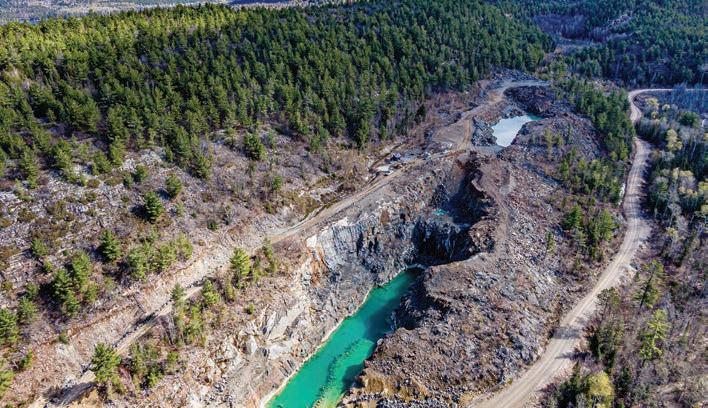
CONTINUED ON PAGE 20

MAY 2023 CANADIAN MINING JOURNAL | 19
Aerial view of Glencore’s Nickel Rim South mine near Sudbury. CREDIT: GLENCORE
Examining an outcrop at the Victoria coppernickel project near Sudbury. CREDIT: KGHM INTERNATIONAL
Drilling at the BAM East deposit on the Junior Lake property in northern Ontario. CREDIT: LANDORE RESOURCES
Aerial view, Shakespeare mine, Ontario. CREDIT: MAGNA MINING
NI 43-101 resource, major permits to restart open pit mining and build a 4,500 t/d mill, and a highly prospective 180-km2 regional package.
Magna thinks there is an opportunity to fast-track the restart of production and truck the ore to Sudbury, where it could be milled and smelted.
The indicated open pit resource is 16.5 million tonnes grading 0.34% nickel, 0.36% copper, 0.02% cobalt, 0.33 g/t platinum, 0.36 g/t palladium, and 0.19 g/t gold. That is equivalent to a nickel grade of 0.56%, using a cut-off of 0.2% nickel.
There is also a smaller option for underground development where the indicated resource is 3.8 million tonnes grading 0.31% nickel, 0.36% copper, 0.02% cobalt, 0.3 g/t platinum, 0.32 g/t palladium, and 0.19 g/t gold. That is 0.53% nickel-equivalent using a cut-off of 0.4% nickel. The inferred resource for underground mining is 2.4 million tonnes at 0.33% nickel, 0.4% copper, 0.02% cobalt, 0.34 g/t platinum, 0.37 g/t palladium, and 0.2 g/t gold (0.57% nickel-equivalent).
Combining the Shakespeare project
with the nearby Crean Hill project, another former producer, has the benefit that the second property could generate cash from toll milling for further exploration and development at Shakespeare. Crean Hill ore would extend the life of the two projects, and it would contribute to a higher-grade mill feed. The company reported drilling 31.1 metres of 4% nickel earlier this year at Crean Hill.
This year, Magna is drilling 3,000 to 5,000 metres at Shakespeare and 15,000 metres at Crean Hill. The results will form part of a new preliminary economic assessment that incorporates Crean Hill resources and examines the economics of processing Crean Hill ore through toll milling as well as at the proposed mill at the Shakespeare site.
METALLUM RESOURCES SUPERIOR LAKE
The Superior zinc-copper project located 200 km east of Thunder Bay, Ont., has two deposits, Winston Lake and Pick Lake. Dewatering the underground
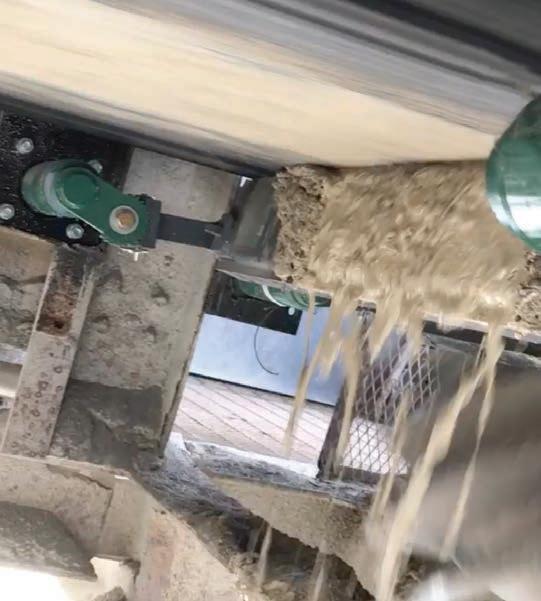
workings is underway.
The company says most of the largest capital-intensive infrastructure is in place. This includes roads, power lines, substations, a tailings dam designed to incorporate Pick Lake tailings, the 650metre Winston shaft and 650-metre Pick internal shaft, four ventilations shafts, backfill raises, a 2.5 km development drive between the two deposits, and multiple ramps on developed levels in both orebodies.
The Winston Lake deposit was mined between 1988 and 1998, when it was closed due to low zinc prices. About 900 million lb. of zinc, 54 million lb. of copper, plus silver and gold were recovered. A previous owner also tested a stope at the Pick Lake deposit during that time. Both deposits are volcanogenic massive sulphides (VMS).
A feasibility study was prepared in October 2021 and updated last May. The latest numbers include a post-tax net present value (8% discount) of $287 million and an internal rate of return of 38%. The initial capital requirement is
20 | CANADIAN MINING JOURNAL www.canadianminingjournal.com
SYSTEMS ©Richwood 2023
RICHWOOD BELT CLEANING
Canadian Mining Journal 7 4 78 4 23.indd 1 4/13/23 2:07 PM
Rely on
MINING IN CANADA
$145.1 million with payback occurring after 2.3 years. The all-in sustaining cost was trimmed to $0.51 per lb. of zinc from $0.55 before the update. Commodity prices used were US$1.65/lb. zinc, US$4.22/lb. copper, US$1,845/oz. gold, and US$21.60/ oz. silver.
A mine life of 8.5 years is expected. Average annual output will be 33,400 tonnes of zinc contained in concentrate and 1,270 tonnes of copper in concentrate.
Metallum is planning a reverse takeover by Waroona Energy, an Australian solar power project owner. Metallum insists, however, that it will continue advancing Superior Lake toward production, perhaps as early as the end of 2024.
NORTHERN GRAPHITE BISSETT CREEK
Northern Graphite is North America’s only graphite producer, thanks to its Lac des Iles mine in Quebec. With the development of the Mousseau West deposit, the life and capacity of Lac des Iles could be extended. The next producing mine will be Okanjande in Namibia, with first product available in 2024.
Closer to home, Northern Graphite plans to develop its Bissett Creek graphite project for which it has a feasibility study. The property is in Renfrew county about 140 km west of Ottawa. Bissett Creek is 100% owned by Northern Graphite.
The company is updating the feasibility study with the first phase to be a conventional open pit mine and mill with an output of 40,000 t/y of concentrate. Phase 1 production could begin in 2026, with a second phase later to bring production up to 100,000 t/y. All the major permits are in place.
In 2013, a measured and indicated resource estimate of 69.8 million tonnes
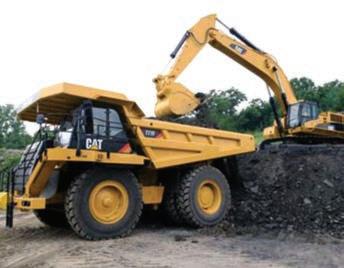
grading 1.74% total graphite (Cg) and 24.0 million tonnes inferred resource at 1.65% Cg was made. All the major permits are in place, but Bissett Creek has been slow to move forward.
Now, Northern Graphite is again seriously looking to get the project back on track if it can arrange the financing. Bissett Creek enjoys excellent nearby infrastructure, a very high-quality flake graphite, and independent testing that shows it can produce battery-grade material.
The project is shovel ready and in an excellent position to take advantage of the provincial and federal support for critical materials. Northern Graphite has patented its natural graphite purification technology. The environmental assessment has been filed. Bissett Creek is close to manufacturing plants and markets, has access to green hydroelectric power, high ESG standards, and a low carbon footprint. In March, Stellantis and LEG Energy Solution announced they will establish a $5-billion large-scale lithium-ion battery production plant in Hamilton, Ont. There is no doubt an opportunity to supply such a plant will exist.
ROCKTECH LITHIUM GEORGIA LAKE

RockTech Lithium recently broke ground on its lithium hydroxide converter in Guben, Germany, but the company’s Canadian connection is its Georgia Lake spodumene project in northern Ontario. It could start production in 2025, according to the preliminary economic assessment released in November 2022.
The Georgia Lake lithium mine has a post-tax internal rate of return of 35% and a post-tax net present value of US$146 million at an 8% discount. The capex requirement is US$190 million, with a payback period of 3.3 years. The all-in sustaining cost will be US$1,082 per tonne of spodumene concentrate, which is currently selling for US$1,500 per tonne.
RockTech calculated the probable open pit reserve to be 7.3 million tonnes grading 0.82% lithium oxide (Li2O), the open pit portion being about 55% with a 0.3% Li2O cut-off and the underground portion being about 45% with a 0.6% Li2O cut-off.
The total indicated resource is 10.6 million tonnes, this time with a split of about 40% open pit ore and 60% underground
ore. The inferred portion is 4.2 million tonnes with approximately 6% available for open pit recovery and the balance for underground mining, of which 2.1 million tonnes grade 0.91% Li2O and 1.9 million tonnes grade 1.12% Li2O.
The Georgia Lake concentrator is to be built 160 km northwest of Thunder Bay and 16 km south of Beardmore, adjacent to the mine site. It will incorporate crushing, dense media separation, and flotation. The nameplate capacity will be 100 t/h or 1.0 million tonnes annually. The overall spodumene recovery rate is expected to be 80%.
RockTech is working on the feasibility study with a production decision expected later this year. Permitting and engineering are underway.
As for the converter in Germany, it will use RockTech’s proprietary nitrate-gypsum process that has the advantage of very-low emissions. Production of the first lithium hydroxide is expected in 2025.
WYLOO METALS EAGLE’S NEST
Ontario’s far-north Ring of Fire is at the epicentre of potential new critical metals mining projects. Noront Resources put a tremendous amount of effort into exploration there until it was merged with Australia’s Wyloo as Wyloo Metals.
The prize, and probably first project to be developed, is Eagle’s Nest, one of the largest undeveloped, high-grade nickel-copper-platinum-palladium deposits in the world.
The deposit has proven and probable resources of 11.1 million tonnes grading 1.38% nickel, 0.87% copper, 0.89 g/t platinum, and 3.09 g/t palladium. There is also an inferred resource of 9.0 million tonnes CONTINUED ON PAGE 22
MAY 2023 CANADIAN MINING JOURNAL | 21
Test mining at the Bissett Creek graphite project. CREDIT: NORTHERN GRAPHITE
Lithium bearing pegmatite at the Georgia Lake property in northwest Ontario.
CREDIT: ROCKTECH LITHIUM
MINING IN CANADA

at 1.10% nickel, 1.14% copper, 1.16 g/t platinum, and 3.49 g/t palladium.
By its simplest definition, Eagle’s Nest is a volcanogenic massive sulphide (VMS) deposit enriched with platinum group metals (PGM). De Beers Canada made the first such discovery in the Ring of Fire in 2012. A year later six more deposits were found, and a staking rush was underway. There are several rich chromite deposits also known in the area.
Noront extended its holdings in the Ring of Fire when Cleveland Cliffs (after spending US$500 million on exploration and announcing a $3.3 billion development plan for Big Daddy) pulled out of Canada. Noront borrowed $20 million to purchase the Black Thor and Black Label chromite deposits, a 70% interest in the Big Daddy chromite deposit, and an 85% stake in the McFaul’s Lake copper-zinc property.

Noront became the largest landholder in the Ring of Fire with properties covering 810 km2, and it was soon the target of a bidding war. BHP made a cash offer of $0.55 per share, but Wyloo announced it,
too, would make a bid. BHP eventually upped its offer to $0.75 per share, but Wyloo said it could do better. When it finally made its offer official, Wyloo paid $1.10 per Noront share, putting an end to six months of bidding in March 2022. Wyloo had been quietly buying up Noront stock in late-2020, and at the time of its offer, owned 37%. It then renamed its Canadian assets Wyloo Metals.

Noront released a positive feasibility study for Eagle’s Nest in September 2012. The original plan was to develop an


underground mine and mill that would produce 150,000 tonnes of nickel and copper concentrates per year. The project carried a pre-production capex of US$609 million for an 11-year project life.



By the time Wyloo updates these figures a decade will have passed. The numbers will undoubtedly go up.
Development in the Ring of Fire cannot begin soon enough for some people, but there is no infrastructure in the region. The cost of creating roads, communications and more in such a remote area will not be cheap. Projects such as Eagle’s Nest cannot advance until a route and roadway are established to the area.
To get development going in the Ring of Fire needs the combined efforts and commitments from the provincial and federal governments, and the Indigenous communities, as well as the project owner. Hopefully, now that people realize the importance of critical minerals in society’s quest to become carbon neutral, projects such as this will move to production in several years rather than several decades. CMJ
22 | CANADIAN MINING JOURNAL www.canadianminingjournal.com
ENGINEERING INC
Hoist Systems 24/7 Local Technical Support www.hepeng.com sales@hepeng.com Proudly Designed & Manufactured in Canada
Mine
Likely, the first mine in the Ring of Fire will be the Eagle’s Nest nickel-copper-PGM project.
CREDIT: WYLOO METALS
MINING.COM Buyer’s Guide is a brand-new supplier directory dedicated to the global mining industry. Bringing together the technical knowhow and experience of the teams at SupplyMine, Canadian Mining Journal, and The Northern Miner, our new platform is built on a legacy of best-in-class products that have been serving the mining industry for over a century!

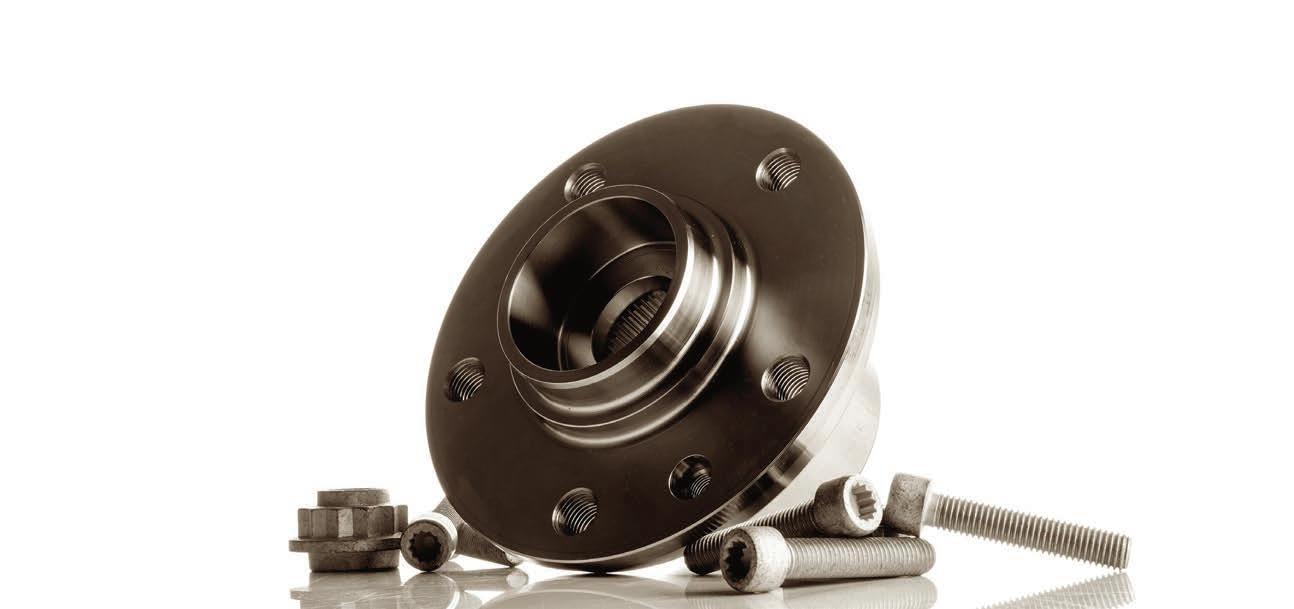
GET DISCOVERED BY MINING’S LARGEST AUDIENCE
Get your products and services in front of the right people. Our new platform allows you to build and optimize a listing that is targeted specifically to the search terms that mining companies use to find suppliers.
DIG UP THE RIGHT SUPPLIERS, FAST
Save time by utilizing our powerful, targeted search tools to find the right suppliers for your project. Narrow your results by category, products & services, as well as region so you don’t waste time researching suppliers that don’t have what you need.

INTRODUCING
GET STARTED AT BUYERSGUIDE.MINING.COM
By David Deen, Nehal Gupta, Julia Basten, and Jackson Porreca
Why government transparency matters for B.C.’s mining sector
UBC study recommends updating government transparency strategies
The government of British Columbia is determined to improve transparency in the mining sector. Mining companies and communities are preparing for a surge of activity to meet the metals and minerals demand for green technologies. This means a flood of information will be inundating government employees covering a range of issues, including deposits, job creation, permits, waste, consultation, and water and air quality.
A team of graduate students from the University of British Columbia (UBC) are recommending a citizen-centric approach for the online presence of the B.C. ministry of energy, mines, and low carbon innovation. The team of four studied the “B.C. mine information” website and supporting infrastructure, comparing it with mining hubs in Canada and abroad that share similar socio-political conditions. Expert interviews in Queensland, Australia, served a key role in their findings.
Government’s role as information provider
The study found that governments are often at risk of dumping highly technical data on the public. These efforts aim for transparency, but can lead to confusion among diverse audiences in practice.To combat this risk, an accessible ecosystem is needed to ensure citizens can make informed decisions about mining in their communities. B.C. ramped up transparency efforts following the 2014 tailings dam failure in Mount Polley. The disaster challenged public perception towards the industry and regulation in the province. Efforts continue within the government to increase the reliability of information presented, and determine the appropriate level of synthesis.
Premier David Eby emphasized the importance of equity in information sharing in his 2022 mandate letter to the minister, and it is central to the B.C. mining strategic plan.

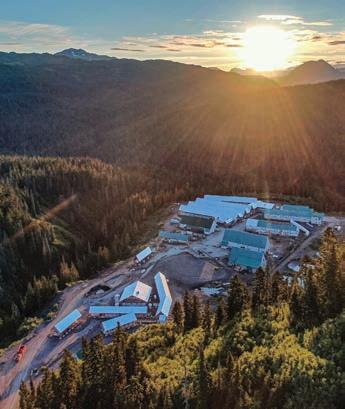
The government aims to be a neutral and objective provider of information. Although the burden of earning a social license to operate rests largely with mining companies, the government must ensure citizens have a complete picture of mining’s value and risks. They must also be certain the flows of information remain relevant to all interested parties.
Using Queensland as a guide
The UBC team interviewed experts in Queensland, Australia, across various professions connected to mining, and all were given anonymity in the study. Several experts throughout the state said that effective information sharing prioritizes public needs, which relies on community engagement and openness.
According to one expert, although the bulk of mining information originates from mining companies, the government is the most trusted distributor of information.
Multiple experts who worked with mining communities in Queensland said the information provided to public audi-
CREDIT: SKEENA RESOURCES
ences is often not representative of a “spin-free narrative.” While the government aims to curate and simplify complex and technical information, this simplification risks not being perceived as
24 | CANADIAN MINING JOURNAL www.canadianminingjournal.com
MINING IN CANADA
Bird’s eye view of Eskay Creek project in northwestern B.C. at sunset (2021).
neutral and objective. This perception challenges transparency.
Tools for transparency
Queensland, Australia presents a strong case for meeting the needs of diverse user groups through distinct online portals directed towards general and technical audiences. Websites were found to be easy to navigate and full of timely information.

The state shares information about mining through a website hosting three platforms. It caters to the general public through the following:
> a balance between high level information and an interactive spatialized map interface;
> change management;
> links to other databases
> video tutorials guiding users; and
> a dedicated help center.
This format of information sharing, tuned to specific audiences, contributes to transparency and public trust in government as an infomediary.
Next steps for B.C.
British Columbia is expanding its information sharing efforts through its mine information website and Mines Digital Trust, a dedicated portal for information
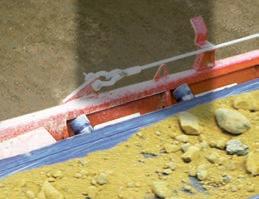
disclosure about industry. It is an innovative first step directly targeting the public.
Similar to Queensland, there are opportunities in B.C. for these tools to provide the content sought by diverse audiences. There is also room to connect and integrate with other platforms like CleanBC, which are effective at communicating citizen-centric information in the context of the province’s emissions reduction plans.
Communities are empowered when they can access information which is rel-
evant to their needs, up-to-date, and well-communicated.
As B.C. prepares for an increase in mining activity, the time is right for the government to develop a digital ecosystem which is reliable and trusted. CMJ
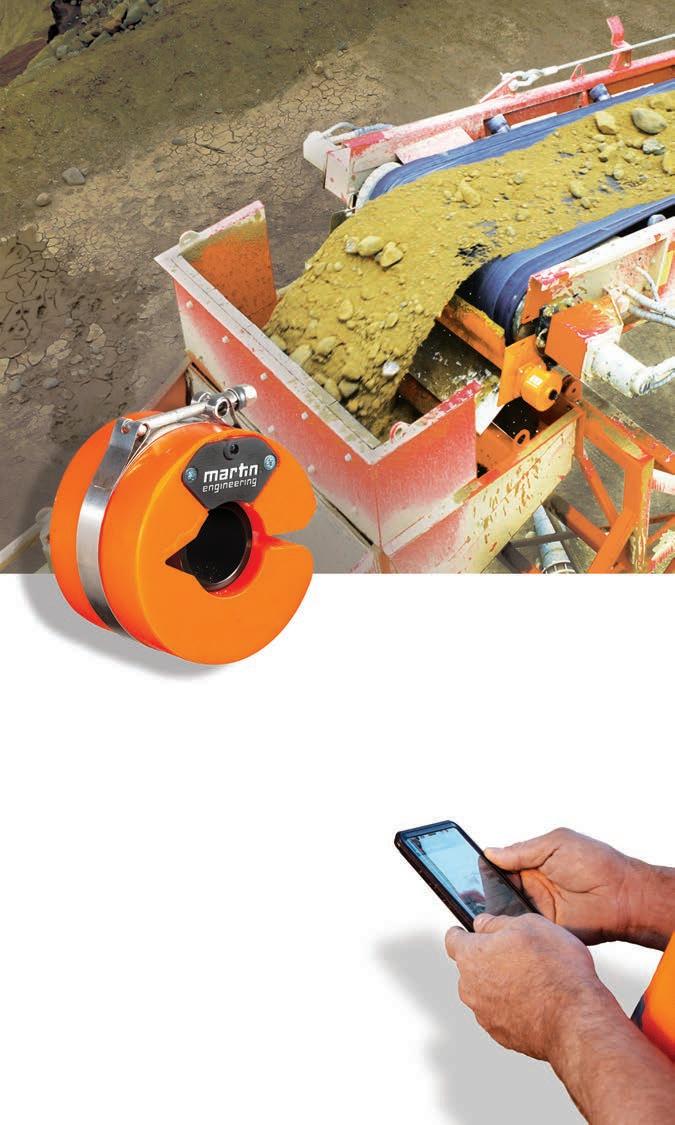
MAY 2023 CANADIAN MINING JOURNAL | 25 ® C M Y CM MY CY CMY K 4-10_CMJad_insertV1.pdf 1 4/11/23 10:28 AM
The UBC student team with their faculty advisor during field research in Brisbane, Australia. From the left, in the back is David Deen and Jackson Porreca, and in the front is Nehal Gupta, Dr. Nadja Kunz, and Julia Basten.
CREDIT: DAVID DEEN
David Deen, Nehal Gupta, Julia Basten, and Jackson Porreca are graduate students at the School of Public Policy and Global Affairs at the University of British Columbia. Their full report is expected to be made public in May 2023.
Autonomous technologies reshaping the trucks mining depends on
There is a race underway, amongst dozens of tech companies, to bring autonomous or “self-driving” technology to trucks. There are many notable benefits of autonomous technology, such as accident reduction and cost savings, and companies are striving to be first to market and win this race. While most self-driving vehicles companies are focused on highway or city driving, their deployments are still years away and face regulatory uncertainty in some jurisdictions. However, of the major companies trying to be the first to market, Maryland-based Robotic Research (RR) and its commercial division, RR.AI, is the only major autonomy company focused on bringing its autonomous technology to serve off-road trucking and mining markets today.
Formed in 2002, Robotic Research began with a single client in mind: the U.S. Department of Defense. For over two decades, RR has applied autonomous technology to solve some of the gnarly problems which the military faces in 21st century combat.
As it happens, some of the same problems faced by the military are also the same problems now facing miners. While most modern technology is built for the modern, comfortable world, it is typically not well-suited to operate in harsh condi-
tions like those faced in the world of mining. RR’s technologies, however, have been designed for and proven in these environments. RR is currently integrating its technology into heavy duty Class 8 trucks and will also serve as the base platform in providing autonomous haulage systems.
Class 8 trucks provide haulage of a variety of materials in and around mining operations. Short “shuttle runs” is a typical operation in mining and one that RR.AI believes is ideally suited for autonomy. “In speaking with customers, we believe that shuttle runs in an off-road environment adds a lot of savings to their bottom line and will enhance safety,” said Don Lefeve, RR’s vice-president for corporate affairs.
Globally, mining operations have displayed a growing appetite for adopting technology. While mining was one of the first industries to embrace autonomous technology, the technology provided is reliant on GPS, which is troublesome particularly in pit mining. Other problems have also materialized, such as “vendor lock.” RR’s approach is to be vehicle agnostic, making it a solution suitable for companies that have a mixed fleet of vehicles. Increasingly, companies are seeking technology from a variety of sources and adapting it to their sites,

always with an eye toward safer and more efficient operations. In fact, mining companies are trying to increase safety through the removal of humans, and technology offers this promise.
RR’s self-driving “kit” (named AutoDrive) is currently integrated into nearly 80 U.S. Army logistics trucks. The company is also integrating AutoDrive into Class 8 trucks for off-road operations, and the same kit can be easily integrated into heavy haul vehicles as well. “Working with the military for over two decades, our company has integrated our autonomous technology on a lot of vehicles and tested in very tough conditions,” said Lefeve. “Because we have integrated on many vehicles, we had to make our autonomous driving system very agile and adaptable to new vehicles, new environments, and different types of roads, which include no roads at all,” Lefeve added.
Mining also shares another problem with the larger trucking market in that companies cannot find enough drivers. The trucking industry is facing a massive truck driver shortage of 80,000 drivers according to the American trucking associations. The truck driver shortage is driven by a combination of factors including baby boomer retirements, high industry turnover, and drug and alcohol violations. “This truck driver shortage is
26 | CANADIAN MINING JOURNAL www.canadianminingjournal.com
MINING IN THE DIGITAL AGE PHOTO: ADOBE STOCK/SCHARFSINN86
By Gordon Feller
felt across all segments of the trucking industry, including mining, and is a problem for many industries who rely upon trucks to move their goods,” Lefeve said.






This is an issue that Lefeve knows well. Before coming to RR, Lefeve was the president and CEO of the Commercial Vehicle Training Association (CVTA), the largest association of commercial truck driving schools (producing 80,000 truck drivers annually).
As autonomous trucks can help solve the problem of the labor shortage, working in remote locations presents other unique technology challenges such as working in areas without GPS.
In an underground mining operation or development property where coverage may be unreliable or lacking, we would all still be using map books and a compass. A key driver of navigation is GPS itself. GPS provides a stable position for a user anywhere on Earth. Combined with a database of roads and the goal location, GPS navigation can accurately lead a person to their destination, as long as the user can receive that signal. “When designing a system for the military, you have a large set of requirements and one of the first things you re-
alize is that you cannot rely on having GPS or event communications,” Lefeve added. “AutoDrive was specifically designed to operate under these conditions, which are many of the same conditions that mining encounters.”

Autonomous driving systems rely upon maps and one of the technologies to let the vehicle know where it is with respect to the map is called localization. RR.AI has taken its localization technology used for autonomous trucks and created its own stand-alone product: WarLoc.

“Imagine you are going to a sporting event and plan to meet up with someone, you can call that person when you get there and ask where they are and try to co-ordinate that way,” said Kyle Smith, RR’s vice-president for advanced programs. “However, modern smartphones can also share the position with a trusted person. That position will appear on the user’s map, and they can navigate themselves to meet up. No interaction between the people needed, other than opting to share the position information in the phone,” Smith added.
What can we do if there were no GPS, for example in an underground environment? This is where WarLoc comes in.
WarLoc, short for Warfighter Localization, provides a position in GPS-denied environments. This device, worn on a user’s boot, connects to a user’s smartphone and shares that position information with others. WarLoc provides a GPSlike position solution that can be used for navigation or any other purpose. It provides position whether the wearer is actively looking at their device or not. It is designed to operate in the harshest environments for the U.S. military.
WarLoc offers three major advantages according to RR: (i) It creates an efficiency boost because anyone can know where anyone else is within an environment just by glancing at a smartphone. (ii) If someone gets lost, it provides a record of how the person got into that situation that they can then backtrack to exit. (iii) It also offers a safety device in case the person is unresponsive or cut off from the outside world, since all others will know where to look for the wearer. This technology can be adapted from the battlefield to the mine site and is designed to function in harsh environments. CMJ
Gordon Feller is a freelance mining expert.
MAY 2023 CANADIAN MINING JOURNAL | 27 SERVICING THE ABRASION RESISTANCE MARKET SINCE 1988 www.sprs.ca Technocore® GMAW wire field version of "brazing" rope Top Performing Tungsten Carbide "brazing" rope Field replaceable weld-on wear tiles for augers Multipurpose weld-on wear bars 1/2" thick rope overlay on 1" mild steel bars MEMBER OF EDMONTON, ALBERTA CANADA Contact Patrick@sprs.ca
vision A bigger
for better use of the Earth’s resources
The mining sector requires constant innovation if it is to optimize production, lower costs, and, most importantly, improve safety for workers. Artificial intelligence (AI) and machine learning (ML) technologies can make a big difference and help businesses adapt even in the face of unpredictable events.
Recently, Boart Longyear (the world’s leading provider of drilling services, drilling equipment, and performance tooling for mining and drilling companies) announced that its Geological Data Services division will operate as a separate entity called Veracio. The new entity is set to combine science and digital technologies in a single, integrated platform and help mining companies get more value from their orebody data faster, while mitigating the environmental impact of their decisions.
Veracio’s technologies and platform, the result of a decade of testing and development in sensing, automation, and AI technologies, empowers miners to dig deeper into data, accelerating exploration and making better decisions that result in economically efficient operations and reduced waste. Powered by Boart Longyear’s award-winning Geological Data Services integrated technology platform, Veracio will support the growing global need for critical minerals by championing an approach to orebody science based on speed and sustainability.
Veracio’s (originally Boart Longyear’s) innovative in-field drill sample scanning system, TruScan, has been named “mining innovation of the year” at the prestigious Mines and Money conference in London, held in December 2022. This recognition highlights Veracio’s commitment to providing cutting-edge technologies that drive productivity and efficiency in the mining industry.
A few weeks ago, I caught up with Veracio’s newly appointed CEO, JT Clark (JTC) and chief innovation officer, Mike Ravella (MR), to discuss Veracio’s recent “graduation from Boart Longyear,” as Clark likes to call it.
Veracio, a wholly owned Boart Longyear subsidiary, offers mining clients a range of solutions that improve, automate, and digitally transform their orebody sciences. Championing a modern approach through a diverse product portfolio by fusing science and technology together with digital accessibility, Veracio leverages AI and advanced analytics to accelerate real-time decision-making driving efficiency in mineral exploration and mining which is moving mineral resources forward.
CMJ: To start the conversation, my first question to both of you is how did you end up in your positions as CEO and CIO of the new company?
JTC: For most of my career, I worked at BCG, a prominent consulting firm and in my most recent position, I served as the global leader of BCG’s mining practice. Six years ago, I shifted my focus to applying AI and advanced technologies to optimize mining operations, creating BCG Phosa, a real-time optimiza-


ARTIFICIAL INTELLIGENCE AND MACHINE LEARNING
28 | CANADIAN MINING JOURNAL www.canadianminingjournal.com
Veracio is a stand-alone entity, infused with Boart Longyear’s rich legacy of innovation, and sits at the intersection of technology and orebody science
JT Clark, CEO of Veracio. Mike Ravella, chief innovation officer of Veracio.
By Tamer Elbokl, PhD
tion tool for mineral processing covering the entire value chain. Although it has delivered significant improvements in production, we discovered that the accuracy and granularity of orebody knowledge were limiting factors. AI requires detailed and high-quality information to identify smaller differences and make finer adjustments and mining companies were not capturing sufficient detail about the orebody to support AI.
In my consulting work with Boart Longyear, I learned about the range of technologies under the Geological Data Services division and their ability to provide accurate and detailed orebody knowledge. I was amazed by their solution which had previously hindered my AI deployment work. With their technology, I also saw the potential to improve the production and recovery of critical minerals throughout the life of the mine. This is how I ended up at Veracio, this was a natural move for

me, and I believe the products and services we offer are critical in driving accurate and detailed orebody knowledge for mining optimization.
MR: I am a hydrogeologist by trade, and in my background in contaminant hydrogeology, we used real time digital sensing for dynamic environmental site investigations to provide information about contaminant source areas and plumes. I worked in environmental and then mining related drilling for Boart Longyear. When I entered the mining field, I found orebody knowledge definition archaic in the mining space. After running several drilling businesses for Boart Longyear in the U.S. and then Australia, I started Geological Data Services from an idea for Boart Longyear in 2015 when we started to look at digital
CONTINUED ON PAGE
MAY 2023 CANADIAN MINING JOURNAL | 29
30
TruScan in the field CREDIT: VERACIO
ARTIFICIAL INTELLIGENCE AND MACHINE LEARNING
sensing and AI and applying it to mineral exploration and mining, and that is how Veracio started.
CMJ: So, what do you like most about your job?
MR: Working with a group of people and clients who truly believe and are 100% focused on changing mineral exploration and mining through digital sensing and AI and knowing that the work we are doing is providing critical mineral solutions for humanity.
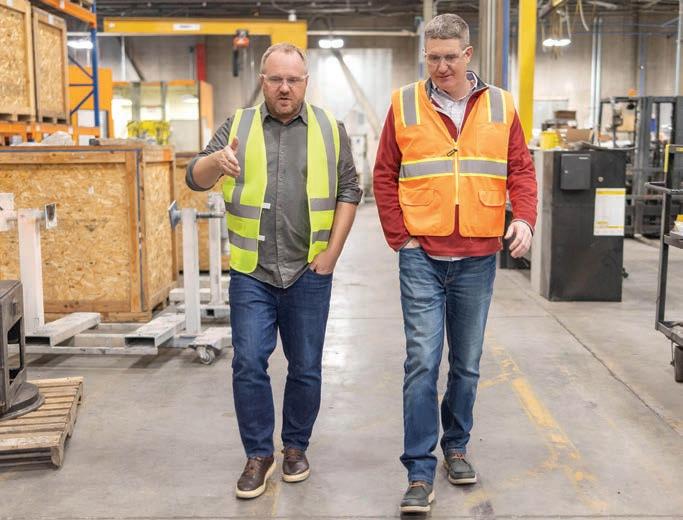
CMJ: Can you please talk to us briefly about Boart Longyear’s decision to operate its Geological Data Services division as a stand-alone entity called Veracio, what was the reason for the decision?
JTC: Boart Longyear is an ideal birthplace for the development of innovative technologies and capabilities for the mining industry. Developing such technologies requires a conducive environment, and Boart Longyear’s 127 years of experience in the most challenging operating conditions provide just that. I consider Veracio a graduation from Boart Longyear. The AI/ ML-based technologies under the Geological Data Services division have matured and deserve recognition and attention of their own. Furthermore, technology development is a distinct business from drilling services, and it is essential to establish new processes for funding and operation to support Veracio’s technology objectives while working closely with the engineering and operating expertise at Boart Longyear. We are providing these technologies with an appropriate platform to grow and serve the industry.
MR: Boart Longyear is focused on providing safe productive drilling to the mining industry. At the end of the day, the prod-
uct of Boart Longyear’s services and products is quality drill samples. Mining companies require these drill samples to understand the earth. A natural progression for Boart Longyear is Veracio, where we are focused on unifying orebody knowledge and giving mining companies information about the earth at high density in real time.
CMJ: Most people tend to not associate the mining industry with such things as advanced systems technology; however, in your opinion, how can artificial intelligence transform the mining industry?
JTC: This is a common misconception, as the mining industry has been investing in building advanced analytics and AI capabilities for some time now. However, compared to tech companies, the mining industry falls behind in terms of AI development. The reason is that mining poses unique and complex challenges that simplistic solutions of the first generation of AI were not capable of solving. AI had to continue to evolve and mature to effectively support the mining industry.
AI has already started to transform the mining industry and will continue to play a central role in its future. Primarily, this is because the world demands more critical minerals that the mining industry must supply, while at the same time mining companies must operate with a smaller carbon and environmental footprint. With declining head grades and increasing geological difficulty, new discoveries are geographically remote, more challenging to access, and often in challenging geopolitical environments. The traditional mining and exploration toolkits are ill-equipped to satisfy these demands. The mining industry significantly benefits from AI, as it equips them with the necessary tools to improve performance, automate processes in challenging environments without risking human lives, and achieve a higher level of accuracy and precision.
For example, mines that have been operating for decades have
30 | CANADIAN MINING JOURNAL www.canadianminingjournal.com
tk CREDIT: VERACIO
“I consider Veracio a graduation from Boart Longyear. The AI/ML-based technologies under the Geological Data Services division have matured and deserve recognition and attention of their own.”
—JT CLARK, CEO OF VERACIO
historically sent ore to waste that would now be considered economic ore. However, upcoming mining projects involve mines that might only have a 10- to 20-year mine life, are deep underground, and are hard to access. To overcome these challenges, the mining industry needs a more advanced toolkit that allows for more accurate, precise, and deliberate resource recovery. There is no margin for error, as valuable resources cannot be wasted and left in a pile for future generations to recover. They must be extracted today.
MR: I agree, and I see it growing more and more each year. It is clear that the future of mining will be very different from the past. Feedback and actions from early adopters and mining companies clearly define this.
CMJ: Can you please explain the role of AI and ML in improving mine safety?
JTC: Improving the understanding of the orebody and automating tasks using AI are two primary ways to operate more safely in the mining industry. By better understanding the structural geology of the orebody using AI, we can reduce the risk of bench failure and improve the quality of mine planning.
Additionally, by automating tasks that previously required human intervention using AI and other technologies, we can remove the person from dangerous environments and eliminate risk. For example, automating rod handling on drilling rigs which is one of the most injury-prone activities. By using AI to capture in situ geological information, we can reduce the number of times we have to handle rods, ultimately taking humans out of harmful activity.
Our goal is to reinvent workflows and activities that have been in use for decades and create safer and less vulnerable options.
MR: Digital sensing allows the mining clients to be bionic. They
can work remotely and reduce exposure. The future mine site geologist will be far more accurate, consistent, and efficient. They will also be able to be on site less through digital sensing, software, AI, and ML.
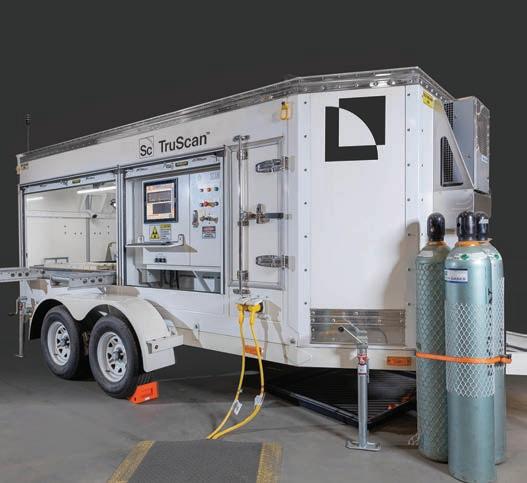
CMJ: How can ML and AI maintain the operation and performance of mining machines using predictive maintenance?

MR: At Veracio, we utilize ML and AI to drive orebody discovery, definition extraction, and processing. Knowing what is in the ground and the parameters required to extract and process early and at high definition allows the mining company to make rapid decisions creating enormous value.
CMJ: Finally, how can Veracio help its mining customers meet the unprecedented minerals demand that is fuelling the transition to a more sustainable economy?
JTC: Veracio’s primary mission is to enable (i) a bigger vision, facilitating the transition to electrification and a more environmentally friendly world; (ii) smarter data, providing the right information at the right time for informed decision-making; and (iii) a smaller environmental footprint, achieved by improving mine design accuracy, reducing the impact on the environment, improving biodiversity, and lowering carbon footprint.
As the demand for critical resources in the world increases, it is becoming harder to discover new deposits. To make new discoveries economically viable, increased precision is required, and the margin of error must be reduced. At Veracio, we do not just provide data but also analytical tools to support the next generation of accuracy, making decision-making more efficient and accurate, and enabling more efficient execution of mining agendas. CMJ
MAY 2023 CANADIAN MINING JOURNAL | 31
TruScan scanning core CREDIT: VERACIO
TruScan station CREDIT: VERACIO
SANDVIK’S INTELLIGENT MULTI-PURPOSE JUMBOS ARE THE NEXT WAVE FOR UNDERGROUND MINERS MINING EQUIPMENT
When it comes to ground support in underground mines in Canada, the year 2022 may well go down as a proverbial game changer for the industry, thanks in no small part to the introduction of two new Sandvik products – the DD422i Dual Controls multi-purpose jumbo and the DS412i automated bolter.

Canadian miners have typically used platform or mechanized bolters and boring only jumbos. This meant they have lagged behind miners around the world who have been quicker to adopt multi-purpose jumbos as well as automated bolters.
“It’s a global wave and they’re calling it jumbo bolting,” says Harold Jonker, Sandvik Canada’s Business Line Manager, Underground Drills. “Utilizing jumbos that both bolt and bore is done in South Africa, Australia and around the world. We’ve really seen a spike in demand.”
The DD422i Dual Controls is a multipurpose jumbo with split feeds allowing a single operator to “bolt and bore” with one machine, replacing the traditional need for two machines – a “boring only” jumbo and a platform or mechanized bolter.
During the ground support cycle, the operator retracts the split feeds to minimum length to mechanically scale the ground, then move and position mesh with the booms whilst drilling and installing all types of bolts. During the boring cycle, the operator extends the feeds to full length to maximize face advance.
“The dual operator controls within the cabin were designed to support the multiple applications this unit performs,”
says Al Guenette, Director of Sales and Business Development for Sandvik’s Ground Support Division (formerly DSI Underground). “The operators learn quite quickly how to become nimble with them.”
The new jumbo and automated bolters are equipped with Sandvik’s Intelligent Control System Architecture (SICA) – hence the “i” in the DD422i and the DS412i. The SICA control system provides the operator with real time feedback regarding the machine’s performance and health, along with tools for drill planning, reporting and analysis to ensure quality and consistency hole to hole.
The DS412i and the battery-powered DS412iE both deliver one-bolt cycle automation of multiple bolt types,
including resin, friction and MD and MDX dynamic bolts. These cycles include auto-collaring, drilling, grouting, bolt handling and tightening as well as supporting the introduction of teleremote control for ground support.
Full instrumentation on these units, combined with Sandvik’s iSURE drill plan software, supports digital bolting plans and provides the rock engineering teams with comprehensive bolting information for quality control.
“These automated bolters remove the operator from working near unsupported ground at the face and, compared to mechanized bolters, give improved productivity gains of up to 35 per cent due to faster penetration rates,” Jonker adds.
By the end of this year, Sandvik
SUPPLIED CONTENT
estimates that more than thirty jumbos, mostly DD422i or DD422iE units – the former being diesel-powered, the latter battery electric – will be in operation at Canadian mines to support rapid development. Newmont is leading the transition with fifteen jumbo bolters in operation by the end of 2023. Vale, Glencore, Foran, Evolution, Barrick, Agnico Eagle and Newcrest are either operating multi-purpose jumbos or implementing them through contractors. Enhanced safety, efficiency and
functionality prompted Newmont North America to introduce the DD422i at its Canadian operations. “We were looking to move our operators further away from unsupported ground to ensure that scaling can be done remotely from a safe distance,” says Grant Reynolds, Principal Advisor, Productivity for Newmont North America. “We want to remove our operators from working at heights and provide a controlled environment that reduces operator exposure to noise and airborne contaminants.”
Opposite: Sandvik DS412iE is a highly automated and productive, battery powered, bolter for underground mining operations and civil construction tunneling.
Left: Sandvik DD422i is an advanced multipurpose development drill providing a high level of performance for underground mine development and small scale tunneling, including comprehensive drilling and ground support features. Newmont’s Musselwhite operations in Ontario, Canada.
Reynolds added that: “Drilling with one boom whilst installing a bolt with the other boom, reduces overall cycle time – making it feel like we had one hand tied behind our back with previous methods. With these highly efficient multi-purpose bolting and boring jumbos, we’ll be able to rationalize our fleet size from 37 units to 20 units by the end of the year.”
For its part, Foran Mining has selected Sandvik’s battery-powered DD422iE and DS412iE drills for its McIlvenna Bay Operations. “This technology will assist towards our target of carbon neutral critical metal production,” says Gilbert Lamarche, Vice President, Technical Services, Foran Mining.
Lamarche adds that Foran will leverage the technical capabilities and recognized reliability of the Sandvik drills with the goal of becoming a benchmark in safe and productive development advance rates in the underground mining industry.
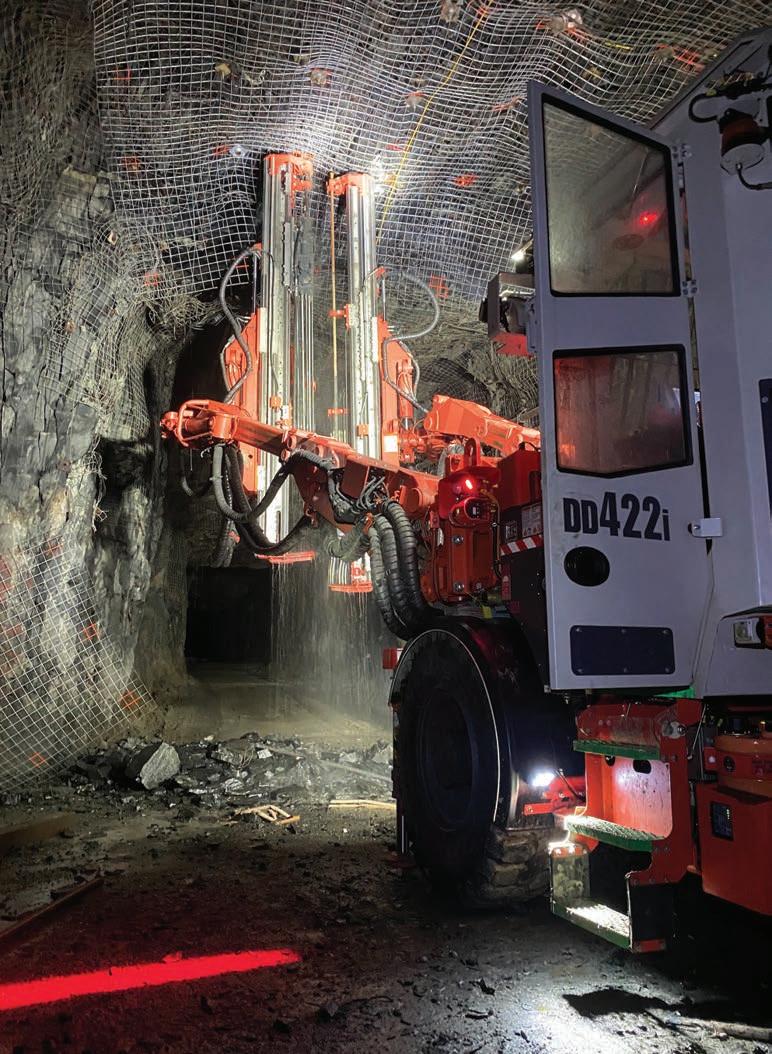
And, judging by the results attained at the Jundee Mine in Western Australia, productivity may well be enhanced. Between June and August 2020, operators of one DD422i Dual Controls jumbo were able to mechanically scale, and install nine sheets of screen, 86 bolts and bore 64 face holes during an average shift. Compared to the previous DD421 jumbo in operation at the same site, drilled metres per hour were up 12 per cent and the cost per drilled metre was reduced by 18 per cent.
Closer to home, several contractors in Canada have been achieving 10 metres advance per day (300 metres advance per month) with a single DD422i Dual Controls in multiple headings; an advanced rate that until recently has not been seen in North America.
GeologicAI’s Digital Core Table allows geologists to remotely log using AI-based tools, revolutionizing how geologists interpret their data. CREDIT: GEOLOGICAI
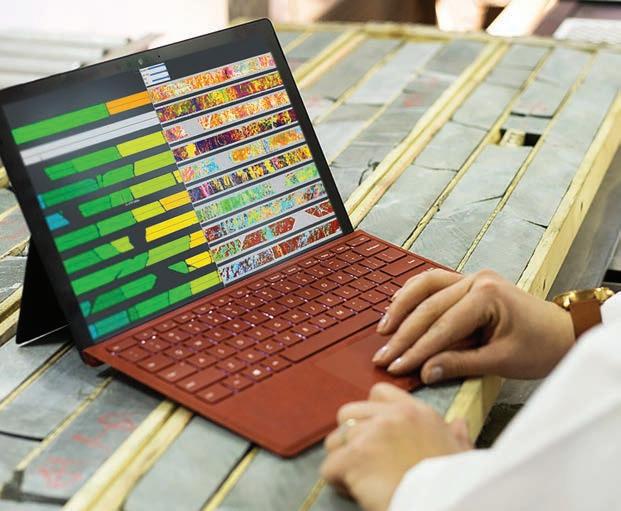
The future of core logging
Artificial intelligence (AI) has allowed for groundbreaking technology that results in more consistent data, improved core logging efficiencies, and better decision making. It eliminates the need for mundane tasks and gives geologists time to better interpret their data, allowing them to see the bigger picture.
AI-based core logging is a revolutionary tool aimed at enhancing geologists’ understanding of their orebodies and streamlining decision-making within the mining industry. A Canadian based startup (GeologicAI, formerly known as Enersoft) is transforming this process by combing multi-sensor hardware and AI-based software solutions to produce the most comprehensive datasets in the mining industry.
GeologicAI was founded in 2013 by Grant Sanden and Yannai Segal when they realized the vast capabilities machine vision and AI brought to the oil and gas industry. Their belief was that “Precision information matters. We have the capability of taking geologic data from I have something, to I have exactly this,” says Sanden. The need for this quality of data was not unique to the oil and gas industry, and in 2021 GeologicAI expanded into the mining sector.
Today, with the need for critical minerals at an all-time high, and deposits continuing to increase in cost and complexity, the drive for innovation and technological advancements within the mining industry is more important than ever. But how does it work? In the case of GeologicAI, Segal summarized it perfectly, “AI does not have a strict definition. It analyzes enormous amounts of data from multiple sensors and correlates it all. We are solving problems that simply could not have been solved before.”
In the past, consistency and core logging were far from synonymous. Core was logged by any number of geologists, resulting in inconsistent interpretation and resource modeling. Addi-
tional data would have to be cross-referenced and manually added into databases before a geologist would get even close to a comprehensive interpretation of what was happening beneath the surface.
Refining the process, the new solution utilizes data from a variety of sources: RGB and hyperspectral imagery; XRF; LiDAR; and magnetic susceptibility. These sensors, combined with AI-based software, provide geologists with consistent and accessible data. Giving them the opportunity to leverage the power of AI and digital core logging tools to do what they do best: analyze and interpret data.
“Our main goal is to help geologists solve their problems with real-time data and an AI-based suite of logging tools, so they have what they need for any exploration or production project, no matter where they are located,” says GeologicAI president, David Henderson. To do this, GeologicAI developed a robust portable trailer, with customizable sensor arrays to fit any project’s requirements. The trailers are driven or helicoptered to site, core is scanned, and data is processed within 24 to 48 hours and available to clients on their “digital core table.”
Using machine learning and machine vision, the sensors are aligned over any type or size of core and core box to ensure the highest resolution for each scan. Detailed path planning, the workflow for scanning a project’s core, is methodically sequenced and improved by AI to ensure data quality and processing time. A multitude of calibrations and quality control checks are optimized using these algorithms. Michelle Legat, vice-president of geology, states, “We are aiding geologists by giving them more tools. I envision (AI-based core logging) being the industry standard in the very near future. If you are showcasing your deposit, you need these results.”
There is one question many geologists have: once the sensors have captured the vast amount of information, how does AI
34 | CANADIAN MINING JOURNAL www.canadianminingjournal.com By GeologicAI staff ARTIFICIAL INTELLIGENCE AND MACHINE LEARNING
improve upon the dataset?
The first step in making AI effective is to train it. As core is run through the scanners, site-specific minerals, elemental ratios, and lithologies are identified and logged. As more core is scanned, the AI continuously learns and improves – further enhancing consistencies and efficiencies. Multi-sensor data is stitched together on a pixel level and AI-powered analysis generates products such as mineral maps (hyperspectral data –SWIR and VNIR), elemental curves (XRF), and wet and dry high-resolution RGB imagery. This unprecedented correlation of data is making AI-based core-logging the way of the future.

The Auto-Logger tool uses AI and machine learning to automate lithological logging of facies and sub-facies. Combining hyperspectral, RGB imagery and XRF data, you can see beyond the abilities of the human eye, accessing textural and elemental data to define new lithologies, alterations and contacts. Geologists can quickly see the predicted lithologies and confidence intervals to speed up the logging process and offer remote logging capabilities.
GeologicAI is at the forefront of this cutting-edge technology. They recognize the power of artificial intelligence and machine learning throughout their entire process. Henderson believes that “by providing estimated assays, lithologies, mineralogical features, and more, we are able to help geologists solve their problems while giving more consistent descriptions and a better dataset.” Additional AI and machine vision-based tools include automated RQD calculations, sulfide identification, and vein detection. Other custom AI analysis uses the multi-sensor approach to identify key properties below the detection limits of an individual sensor, apply machine learning algorithms and produce tools such as GeologicAI’s Gold Finder and Automated Sampler.
By working with junior exploration companies to top tier mining companies all over the world, AI helps to improve a site’s understanding of their deposit from feasibility to produc-
tion. The digital core table and its respective AI-based tools are helping geologists improve data consistencies and logging efficiencies, maximizing the speed, and understanding of the overall mining cycle.
In 2021, GeologicAI proved remote logging was possible by using their tools to scan 40,000 metres of core from a remote site in the Yukon. This data was then easily exported into databases and into modeling programs for enhanced resource modeling at a time when labor was scarce, and accessibility was limited. The company is the world’s largest supplier of quality core logging data and rock analytics. “GeologicAI is the first to put all these tools together in one package. We are providing next-day results which empowers geologists and drillers to quickly determine end-of-hole, improved data consistency, and a reference library of historic core geologists can access at any time,” said Legat.
Artificial intelligence is helping geologists answer questions like: Are we exploring in the right place? What is the potential of this site? What am I looking at? Where do we go next? It is designed to complement geologist’s skill sets, giving them the resources and abilities to streamline their decision making and further enhance their understanding of their orebody.
Information is power. As AI continues to learn with every scan, this innovative technology will continue to provide comprehensive and usable datasets that streamline decision making, improve orebody knowledge, and maximize mining cycle efficiencies. There will come a day in the not-so-distant future when this technology will be standard at every mine site and geologists will wonder how they ever did their job without the contribution of AI. CMJ
Efficient Solutions for Mining & Quarrying




MAY 2023 CANADIAN MINING JOURNAL | 35 www.rosta.com – info.canada@rosta.com ROSTA Canada ROSTA AB ROSTA SE ROSTA MB
Two examples of auto-logged core (right column) compared to manually logged core (left column). AI-based auto-logging combines multi-sensor information (RGB, XRF, and hyperspectral data) to accurately define lithologies and better predict lithological changes for a more in-depth understanding of the deposit. CREDIT: GEOLOGICAI
unseen seen Making the
CEO and co-founder of VerAI Discoveries

The digital transformation of the mining industry has been progressing well for the last decade or so, and artificial intelligence (AI) has been an important tool to advance that transformation of the industry. Recently, mining companies are using AI to optimize processes, enhance decision-making, derive value from data, and improve safety. However, the transition to an AI-enabled mineral exploration is a different story or experience for every company or even mine.
Since we feature mining in the digital age in this issue of the Canadian Mining Journal, I caught up with Yair Frastai (YF), CEO and co-founder of VerAI Discoveries, during PDAC 2023 in early March, to talk about the company, the technology, and the future of AI in mining as he sees it.
VerAI Discoveries, an innovative, AI-based mineral asset generator, recently completed a $12M Series A funding round led by T. Rowe Price Associates, with Orion Resource Partners, Chrysalix Venture Capital, and Blumberg Capital. Working across the vast under-explored areas of covered terrain, VerAI’s targeting capabilities significantly improves the probability of finding vital metal deposits by increasing the discovery success rates by two orders of magnitude while being more than 20 times less expensive and 20 times faster than human-centric techniques.
CMJ: To start the conversation, can you please tell us what is VerAI Discoveries?
YF: VerAI Discoveries is an innovative, AI-based mineral asset generator that helps the mineral exploration industry improve the probability of discovering critical minerals deposits. VerAI implements an AI-driven approach, which incorporates machine learning searching capabilities in magnetic, gravimetric, electromagnetic, and seismic data, to detect previously concealed mineral deposits at a rate two orders of magnitude more effectively than human-centric techniques. Consequently, VerAI accelerates the ability to leverage these vital mineral deposits to help lead the green energy transition into a more sustainable future.
Frastai has dedicated his career to tackling complex challenges, starting in the Israeli Intelligence special operations forces, where he initiated and implemented far-reaching paradigm shifts in planning and operations. Later, as an executive in the mining sector for the last 10+ years, he has led various mineral exploration efforts and operations in the Americas, focusing on the challenge of discovering deposits under cover. While collaborating with top research institutes in the U.S., Canada, Australia, and England, Frastai led research and development of various innovative technologies aiming to increase the probabilities of success of mineral exploration.
CMJ: In other words, VerAI is “making the unseen seen?”
YF: Exactly, there are no longer “easy” discoveries when it comes to mining, as most of the underexplored parts of known mining jurisdictions are under covered terrain, and current exploration methods will no longer be fit for purpose. The green energy transition needs enormous quantities of metals, but the mining industry is failing to discover new resources. EVs, renewable energy and electricity storage technologies rely heavily on critical minerals, such as copper, cobalt, nickel, and lithium. Most of the currently existing mines that were discovered in the last century are in outcropped areas. The remaining ore deposits in stable and regulated mining countries are concealed under vast covered terrain, making them very challeng-
ARTIFICIAL INTELLIGENCE AND MACHINE LEARNING
36 | CANADIAN MINING JOURNAL www.canadianminingjournal.com
Interview with Yair Frastai,
“VerAI is a disruptive AI-based mineral asset generator that changes how the world discovers mineral deposits.”
YAIR FRASTAI (YF), CEO AND CO-FOUNDER OF VERAI DISCOVERIES
By Tamer Elbokl, PhD
ing to discover. Additionally, most of those mining jurisdictions (Canada, Australia, Arizona, Nevada, Peru, Chile, and others) are 70% to 90% covered, and consequently, under-explored because current exploration methods are not suitable for the challenge. There is a US$100 billion opportunity to disrupt the industry’s inefficient and archaic exploration strategies, and VerAI is doing so by discovering those concealed economic mineral deposits with 100 times more accuracy, 20 times faster, and 20 times cheaper than current industry benchmarks. In other words, we are unlocking a multibillion-dollar opportunity by discovering under-cover deposits.
Today, only 1 in 1,000 exploration projects become a mine.
CMJ: Can you tell us how VerAI started, the history of the company, the team, and your vision for the company?
YF: Amitai Axelrod, COO and co-founder, and I formed VerAI in 2020 to tackle the biggest challenge of mineral exploration: finding concealed mineral deposits under covered terrain. The green energy transition needs enormous quantities of metals, but the low-hanging fruits are already gone, and the mining industry is falling short of discovering new resources to supply the current and future massive demand. As I mentioned, vast areas of the mining countries are completely covered, the conventional exploration model is not effective, not economically viable, and not scalable. Today’s success rate of exploration projects is extremely poor, with less than 1 in 1,000 projects becoming a mine, while in covered terrain the performance is even lower. VerAI is not providing a service or selling its technology; instead, we are generating significant value by using our technology to build a portfolio of mineral assets and develop them with partners. We have a very capital-efficient and scalable business model with a broad and diversified portfolio of multiple commodities in various jurisdictions.
VerAI founders and the core team members are rooted in the Israeli defense intelligence and hi-tech domains. During the last decade, as senior executives in mineral exploration companies in Chile and the U.S., we have been implementing our knowledge and expertise to significantly improve the success rate of mineral discoveries. Our team members led research and the implementation of innovative projects collaborating with research centers such as MIT in Boston, CESIRO and CET in Perth, Imperial College in London, and MDRU at UBC, as well as global field operations of multidisciplinary teams that specialized in innovative solutions to solve complex exploration problems.
VerAI’s strong discovery team is built on the synergy between three essential pillars – data science, geoscience, and commercial expertise – all supported by a tier-one experienced advisory team, board of directors from the fields of academic research and the mining industry, and strong strategic investors, including T. Rowe Price Associates and Orion Resource Partners.

MAY 2023 CANADIAN MINING JOURNAL | 37
PAGE 38
CONTINUED ON
An innovative AI-based mineral asset generator that dramatically improves discovery rate. CEO and co-Founder Yair Frastai and COO and co-Founder Amitai Axelrod. CREDIT: VERAI DISCOVERIES
CMJ: How does VerAI’s AI platform work to detect deposits; can you talk to us about the technology and what makes it different from other AI exploration companies?
YF: Many are still trying to rely on ununified big-data approach that is heavily biased by experts’ interpretations and extrapolations. This approach focusses its effort in generating information that can suggest the “conditions” for the existence of a mineral system, such as favourable lithology, structures, and alteration, but unfortunately, those “proxies” are not enough to indicate the existence of a new economic mineral system. VerAI deploys a novel proprietary AI technology to search directly for those concealed economic mineral deposits, skipping the underperforming proxies analysis. We generate an exclusive catalog of patterns from existing economic orebodies to identify in the data the location of new viable mineral deposits with a high level of probability. Our AI-based discovery platform successfully targets concealed deposits of various commodities, including copper, cobalt, nickel, molybdenum, zinc and gold. We believe that the next significant economic discoveries will be in the underexplored covered terrain, which is where we are focusing our technology and innovation efforts.
We are feeding our machines with the right data for the problem: geophysics, which are signals coming from the depth of the subsurface (metres to kilometres), agnostic to the cover material and not biased by surface information. The geophysics data that we are using is a continuous, raw data, which means it is not biased by experts’ extrapolations, inversions, or interpretations of punctual data.
CMJ: Geophysics has been used by the exploration industry for a long time. How are you using geophysics differently?
YF: Geophysicists are used to interpret and extrapolate geophysics data, looking for anomalies in the data (like doctors were using their eyes to interpret MRI data before AI /ML technologies were introduced as part of the diagnostic process). These methods are constrained by humans’ capabilities, and many other industries including healthcare have already discovered the advantages of AI/ML over the human pattern recognition. VerAI is deploying AI/ML to search for those concealed mineral deposits in the raw data itself, which is the core strength of our technology. By applying AI/ML to geophysics
data, we can discover concealed economic mineral deposits with 100 times more accuracy, 20 times faster, and 20 times less expensive than current traditional, human-centric techniques of the industry benchmarks.

CMJ: What are VerAI’s major discoveries and partnerships so far?
YF: We are generating significant value by partnering with exploration companies on our mineral asset portfolios, leveraging our internal AI/ML-based targeting capabilities together with external exploration and development expertise. We have discovered several attractive mineral property portfolios in different jurisdictions that are currently going forward with partners, while others are available for partnership with experienced exploration companies.
Two of our portfolios, targeting copper, gold, and silver, are already developing with partners in Chile and Peru. We also completed the generation of two portfolios targeting nickel and cobalt in Ontario, an extensive portfolio targeting copper deposits in northern Chile to the east of Antofagasta, the area of the largest copper deposits worldwide, as well as an exciting portfolio targeting copper in Arizona, only 18 km south of Sierrita (an operating mine by Freeport McMoran), that is under advanced evaluation by several major players.
These portfolios include high-probability targets of various minerals. VerAI is open for partnering on these existing portfolios, as well as for future strategic alliances with exploration companies who struggle in discovering under cover.
CMJ: How do you choose your partners?
YF: We diversify our portfolios by carefully selecting the commodity, jurisdiction, and exploration partner as part of our business strategy to maximize value and reduce risk. Each portfolio includes a series of high-probability and prospect-scale targets ready to drill, focusing on the blue ocean of the covered terrain in well-established mining countries.
We are looking for partners with strong technical capabilities, expertise in the specific jurisdiction or commodity and can develop drill-ready targets into high-value projects. Also, partners that are running out of ore or want to enter a new jurisdiction quickly could benefit from our ability to quickly generate drill-ready targets instead of lengthy and expensive area-reduc-
38 | CANADIAN MINING JOURNAL www.canadianminingjournal.com
ARTIFICIAL INTELLIGENCE AND
CREDIT: WOSUNAN/ADOBE IMAGES
MACHINE LEARNING
tion processes. And most importantly, partners that have an area of interest under cover and believe that our AI technology can work where the industry is challenged by vast covered terrain and lack of surface data are welcome to collaborate with us.
CMJ: Are you planning to continue these partnerships through the mining process itself?
YF: Our business model is to be a scalable project generator rather than a sole explorer/miner. This is a capital-light approach and one where we can focus on our technology competitive advantage to rapidly identifying prospective properties and partnering with experienced exploration companies to take them to development. Our partnership model involves earn-ins from our partner and an eventual equity exposure and/or royalty stream for VerAI. We believe that by scaling and generating multiple, diversified asset portfolios, we are generating significant asset value that does not require us to enter risky, expensive, and lengthy field exploration processes.

CMJ: VerAI very recently announced it completed a US$12 million Series A funding round. Can you talk to us briefly about that, and what does it represent to you?
YF: The recent Series A funding round included funds and accounts advised by T. Rowe Price Associates, with Orion Resource Partners, Chrysalix Venture Capital, and Blumberg Capital. This group of strong financial and strategic investors understands the need in discovering new critical minerals, and sees VerAI’s team, technology, and success rate as a unique opportunity to solve this global problem while creating significant value. Our investors bring extensive experience in generation and deployment of transformational technology and innovation, specifically in mining and their direct contribution to the global clean energy transition, as well as in successfully applying AI solutions to different verticals and industries.
This funding comes at a time of increasing global demand for many critical metals that are important to global electrification, including copper, cobalt, lithium, and nickel. Operable across the vast under-explored areas of covered terrain, our targeting capabilities will certainly help evolve the deposit identification success rates, while allowing us rapid scale.
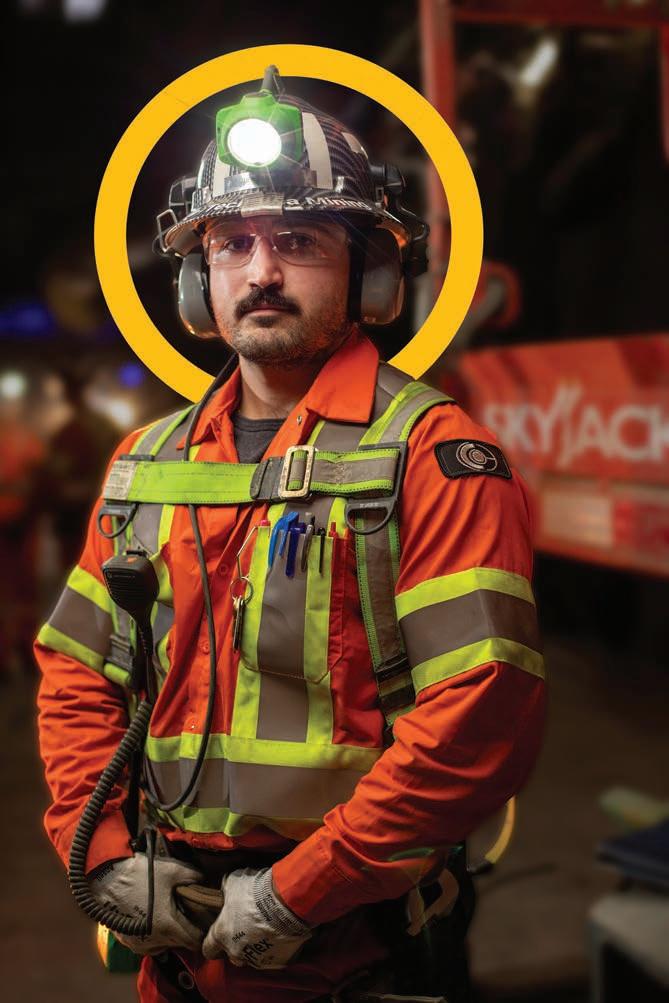
CMJ: Finally, how does the future of VerAI look like to you? And how do you intend to grow the business?
YF: Historically, covered terrain is challenging human prospecting exploration techniques, meaning a massive range of opportunities is being missed. While at the same time the global energy transition requires enormous quantities of metals to sustain the development of both current and future technologies. Traditional exploration and discovery methods rely on human interpretation and are not capable of meeting these demands. Our AI-driven approach enables our partners to discover at a much higher rate of success, creates significant value in a much shorter period and brings critical minerals into the market. VerAI will continue its fast scaling by creating diverse mineral asset portfolios, targeting multiple commodities in different jurisdictions, and partnering with strong industry players to extract significant value our of our successful discoveries. CMJ
See
MAY 2023 CANADIAN MINING JOURNAL | 39
us at the booth #2704
Autonomous drones are changing the mine mapping game
For Exyn Tech, the number one thing in drone design is safety. The ExynAero EA6 is a fully autonomous drone, able to map existing stops and/or drifts. It does not require any sort of previous infrastructure, GPS, tethers, Wi-Fi, or even a pilot.
“We no longer need to send miners to the face,” said Raffi Jabrayan, VP business development and commercial sales. “With our machines, you could stand 30, 40, or 50 metres away from an open stope, under a fully supported area, give it its mission and it is able to go and get the mission done.”
Jabrayan said that among its other attributes, efficiency was key, claiming that the drone can complete research within a mine that would normally take hours, within a matter of minutes.
On top of that, the EA6 is changing the game in terms of map accuracy.
“Your traditional measuring tools used to give you 30,000 to 40,000 points. (EA6) gives you 50 million to 60 million points. In layman’s terms; it is giving you a better-quality map, which is giving you more accurate volumetric calculations,
When mapping, the ExynAero EA6 gives users 50 million to 60 million points of measurement. CREDIT: EXYN TECH
which then allows you to obviously plan better,” he said.
The EA6 is the third generation of autonomous drones from Exyn. The company was founded in 2014 by Nader Elm and Vijay Kumar as a spin off, out of the University of Pennsylvania’s General Robotics, Automation, Sensing and Perception (GRASP) lab.
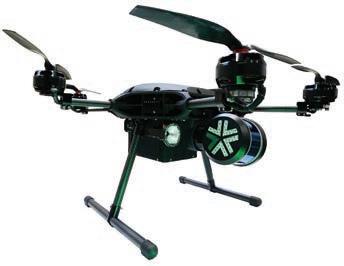

Jabrayan said that bringing major mining corporations into the development process was vital for the development of
the EA6, as it was for previous models. Products are also rigorously tested in controlled environments before they hit the market.
According to Jabrayan, reviews for the item have been largely positive and over 150 units are out in the marketplace right now.
“It is very difficult for me to say, no, we do not want something that’s going to make us more efficient, or we do not want to be safer, or we don’t want more accuracy. So, the product usually sells itself,” he added.
Jabrayan said the next step in the drone’s evolution is to optimize functionality. Be that longer battery life, more sensors, an increased ability to detect gases and eventually making the drone suitable for indoor and outdoor flight, as opposed to its current setting which is exclusively for underground.
“Before the end of the year, this unit will be able to fly indoor and outdoor at the same time. It can start indoors and finish outdoors or vice versa, which opens a whole bunch of new use cases,” Jabrayan said. CMJ
40 | CANADIAN MINING JOURNAL www.canadianminingjournal.com By Moosa Imran DRONES
safer sample way to A
Using drone technology to improve water testing at mines
Seeing an unmanned aerial vehicle (UAV or drone) used on a mining site is nothing new. Since the early use of the technology, drones have been utilized on mining projects for activities such as site inspections, mapping, and surveying.

But as drone technology has improved and evolved, so has our appreciation for how best to use it. Beyond its inherent value for providing us with site data, we are recognizing that drones can be utilized elsewhere on the mining site, performing valuable tasks while reducing health and safety hazards and providing efficiencies both on active and inactive properties. The benefits of using the technology are many, providing operations with a positive alternative to traditional sampling methods.
Using drones to collect water samples
This new evolution has come in the form of using drones to collect samples, especially from water resources found on site. A practice that we are already seeing gain wide acceptance in other global jurisdictions. Drones have the capability of taking safe and secure samples from waterbodies on site that are either natural or constructed (e.g., tailings pond or pit lake).
Contingent on the regulations in place for a given mine site, drones are able to work within the necessary parameters to col-
lect in situ physio-chemical measurements and water samples at the frequency and depth required. The drone’s GPS mapping system is used to define the locations on the waterbody for sampling, which is typically determined pre-flight. Initially, in situ measurements are collected through the water column at the designated location in the waterbody using multi-parameter sondes carried below the drone. Once the sonde has collected the water column profile information, the sonde is flown back to the launch area and the data downloaded and reviewed. This data can be used to identify the focus depths in the waterbody to collect samples.
Water samples are then collected from a subsequent flight using specialized collection equipment carried below the drone, which are lowered into the water column to the required water depth. The drone’s GPS system makes sure that the drone returns to collect the water sample at the same location the water column profile data were collected. The sample collection system secures the sample once it has been collected at the target depth so that its integrity is not in jeopardy at any time between when it is collected and returned to the launch area. Once returned, the sample is transferred to laboratory sample containers where it undergoes any requisite sample handling processes, after which
MAY 2023 CANADIAN MINING JOURNAL | 41 CONTINUED ON PAGE 42 By
DRONES
John Faithful
Drone sampling. CREDIT: WSP GOLDER
it can be submitted to the analytical laboratory for testing. If required, supplemental drone flights collect water samples from other depths or locations.
One of the primary reasons for the development of the sampling approach is safety. Access to constructed waterbodies (e.g., pit lakes) in mine sites can be difficult or impossible, which may also be exacerbated by the seasonal conditions when the sample needs to be taken. Even if the pit lake can be accessed for boatbased sampling, sampling directly on water can carry elevated risk due to the often-unstable nature of the surrounding pit environment the lake exists in.
The use of drones to collect water quality data and samples eliminates the need for human involvement with the site in any way. This includes interaction with the surrounding landscape and habitat. While not necessarily a factor in the Canadian market, this can be a real factor in other global jurisdictions where reptiles exist near and within natural waterbodies who can pose a danger to humans. With the drone, there is no need for anyone to go directly to the site and disturb any of the surrounding ecosystem.
There is also the matter of the efficiency provided by using this technology. Rather than having a team haul sampling equipment to the waterbody and then onto the water to collect in situ data and water samples, a drone pilot and spotter can be situated at a safe location some distance away from the waterbody where they have untethered sight of the drone without any human interaction with the water. The time it takes for the
drone sampling process to occur, versus a human-collected sampling period, offers significant time savings. Further, as boats primarily run on fossil fuels, use of the drone eliminates the additional carbon footprint of running boat engines versus the use of battery power for the drones.
Of course, no new solution is simple to provide. There are federal and provincial regulations to follow when using a drone commercially, meaning drone pilots need to be accredited, and on-site regulations exist for the use of drones on the mine sites, some of which are more stringent than others with respect to a pilot’s level of experience. Building a team that has appropriately experienced pilots to be able to conduct the sampling operations is required to successfully provide this sampling option to mine sites; this can take time.
However, as the use of drones continues to grow in other areas of business, we are likely to see an increase in the number of people becoming qualified drone pilots. And while drone sampling does provide efficiencies around the actual sampling process, with mining sites often located in remote locations, bringing a pilot (and spotter) in to do the sampling work, along with their equipment, can be costly. Including in this service, the flexibility to provide training to mine environment staff to utilize this technology becomes a secondary service that can be provided.
The drone technology used for water sampling is in its relative infancy, especially here in Canada. The technology has been at work for several years in the United States, and is being used in Australia, New Zealand, and South Africa, but it has only just started to be utilized in the Canadian market. However, like any new technology that an industry appreciates the value of, the cost, and availability could potentially decrease with wider use across the country.
Should that occur, there are other ways that drone technology can evolve to provide benefit for the mining industry. We are already seeing the use of drones for air quality sampling in other sectors, and as environmental regulations are tightened in the mining sector, drones could be used to best gauge emissions on active sites. Sediment sampling in natural and constructed waterbodies as an extension to the water sampling approach could also become a reality.
There is great potential for the growth of drone technology’s use with the mining sector, especially in Canada where remote sites in sensitive ecosystems are facing strengthened regulations around emissions and tailings. Having a safe system for sampling that meets government and mine regulations, one that does so without jeopardizing the safety of people and reduces the human impact on the site, is a smart investment for any operation. CMJ
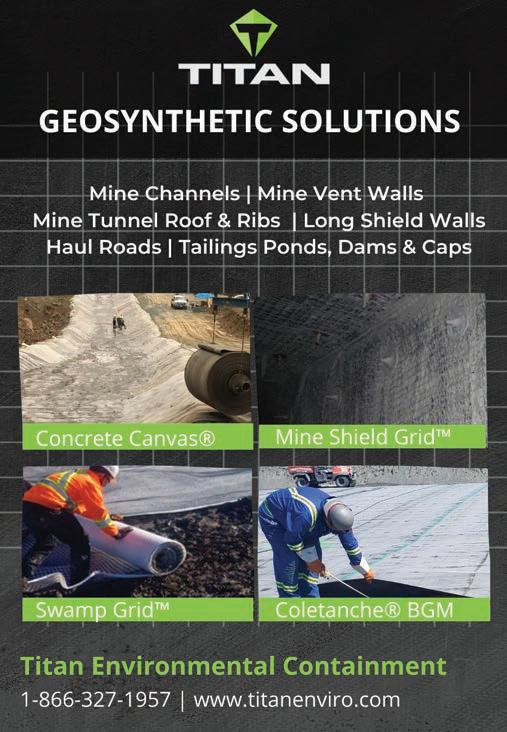
42 | CANADIAN MINING JOURNAL www.canadianminingjournal.com
DRONES
John Faithful is a fellow, senior water quality scientist, at WSP Golder.
There is great potential for the growth of drone technology’s use with the mining sector, especially in Canada where remote sites in sensitive ecosystems are facing strengthened regulations around emissions and tailings.
Fuel tank selection
Tips for selecting the best modern fuel storage solution
Some things change constantly. Take cars for example, each year brings significant changes and advancements and someday, fully autonomous cars will likely rule the road. Fuel storage tanks, on the other hand, are not traditionally thought of as a rapidly changing product. However, more manufacturers are realizing the necessity of designing fuel storage solutions for the modern business, with features such as cloud-based remote fuel monitoring and global transportation approvals.
Diesel, the source of roughly 98% of energy consumed at the average jobsite, is a universal expense for operators. And, as the construction industry changes and companies become more competitive globally, profit margins will continue to shrink for businesses that do not find new and efficient ways to manage assets, including fuel storage.
Today, on-site tanks can simplify fuel management like never before and serve as more of an asset than the large steel cylinders they once were. To make the most of a fuel tank purchase, there are several factors to consider, such as the benefits of fuel monitoring, cleaning and maintenance costs, tank transportation, theft prevention, and more.
Capacity and mobility
The larger the tank, the more stationary it tends to be. With options ranging from tanks that hold less than about 568 L to ISO containers that hold upward of about 94,635 L, determining the ideal solution starts with knowing how much fuel is being used and how mobile the fuel supply must be. After all, having an on-site fuel supply only saves time and money if it provides an adequate supply where and when it is needed.
Transportation options can range from certified lifting lugs for handling a crane to DOT-approved trailers. The most easily transported options are smaller trailer mounted tanks typically holding between about 757 to 3,785 L that are ideal for deliver-


MAY 2023 CANADIAN MINING JOURNAL | 43 CONTINUED ON PAGE 44 By Ken Steury EQUIPMENT
Cube shaped TransCube tanks feature 110% fluid containment and meet global transportation standards to provide safe fuel transport anywhere it is needed. CREDIT: WESTERN GLOBAL
TransCube is a transportable, double-walled tank designed specifically for efficient on-site refueling and auxiliary fuel supply.
CREDIT: WESTERN GLOBAL
ing fuel to remote sites. Some of the more important items to look for when buying a trailer-mounted tank include a sturdy trailer engineered to withstand the dynamic forces of the moving liquid while navigating rough, unpaved roads at jobsites. Tanks designed to comply with worldwide approvals, including UL, ULC, UN DOT, and Transport Canada, are usually the most rugged and well-designed, as they are required to pass the rigorous testing and certification dictated by the various approval bodies.
Keep in mind, however, that just because a tank is approved, does not necessarily mean it is the safest option. A lower center of gravity, for example, will make the tank less susceptible to tipping during transport. And for full-fuel transport, internal baffle plates prevent fuel surging to keep the vehicle stable. In most locations, tanks without baffles must be emptied, and often cleaned, prior to transport, which can require a third-party environmental company. If the tank is moved frequently, downtime and expenses add up quickly.
If the job requires a larger tank of about 3,785 L or more, consider how it will be moved around a jobsite. Round tanks often require a crane or loader to move. Most cube tanks can also be moved this way, but for added versatility, many also incorporate forklift pockets. Having more options can come in handy

when equipment operators are busy or if certain equipment is not on the jobsite.
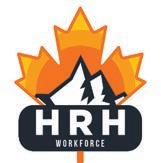
Simplify compliance
Environmental regulations must also be considered, and ground contamination is a major concern for on-site fuel tanks. While all tanks should meet basic environmental standards, round tanks (the traditional go-to storage option) come with the added expense of owning and cleaning secondary containment pans. The average bill for cleaning a containment pan is about $150, which can add up quickly in areas that require pans to be cleaned on a regular basis or after it rains. An increasingly common feature on new tanks, particularly cube tanks, is double walled 110% weatherproof containment. This eliminates the need for a secondary basin and can result in significant savings over the life of a tank.
Site-specific considerations
To meet the specific needs of different construction sites, it is important to evaluate which features have the potential to increase value for a given operation. Tanks with multiple inand out-ports, for example, allow the tank to serve as an auxiliary fuel supply while still being able to fuel trucks and other equipment. This can drastically extend runtimes for generators and light towers, as well as reduce the risk of running them dry.
For jobs at remote locations, the benefits of remote tracking technology can pay dividends. Remote fuel tracking helps operations monitor and manage supplies from anywhere via the cloud. For those with multiple projects at different sites, this can make it easy to stay on top of fuel supplies and know when a delivery is necessary.
For improved tracking and added security, cardlock systems are an efficient way to monitor who is pumping fuel and how much is dispensed. Businesses without fuel security often expect 2% to 5% of their fuel supply will go unaccounted for each year. For example, an operation using about 75,708 L of diesel per week may lose as much as about 3,785 L per week if 5% is unaccounted for. At $3.00 per gallon, that is a $3,000 loss each week, or $156,000 each year, because of not closely moni-
44 | CANADIAN MINING JOURNAL www.canadianminingjournal.com RecRuitment of qualified peRsonnel in engineeRing and geosciences www.hrhworkforce.com Canada : +1 (514) 612-7172 South America : + 57 (601) 790-0072 info@hrhworkforce.com Selection of the candidate Professionnal and background checks Recruitment process Language courses Immigration and arrival processes Integration into the company ... And many more services ! contact one of ouR RepResentatives :
EQUIPMENT
The remote fuel management systems available on Western Global tanks help employers monitor dispensing and reduce fuel theft. CREDIT: WESTERN GLOBAL
toring fuel use. By tracking with a cardlock system, employers can easily monitor dispensing and greatly reduce losses by preventing employees and others from filling personal vehicles.

Having tanks with secure access to fittings and dispensing equipment can also prevent unauthorized access and deter fuel theft. While many rely on regular padlocks, these are easy to cut and do little to deter thieves. Investing in more secure cabinets that position locks to be inaccessible to bolt cutters will better keep thieves at bay. While these security features will likely bump up the initial tank price, preventing a single theft of about 189 L (roughly the capacity of a diesel pickup) may be enough to offset the difference.
Another location-specific consideration is the tank’s power supply. For mobile tanks and tanks at remote sites, adding options such as battery power storage and solar panels can help ensure that the tank will always have the necessary power to run the pumps. And for locations with space limitations, tanks that can be stacked help to free up space.
Fueling additional savings
No matter the tank or application, it is important to buy from a trusted manufacturer. Reputable companies understand the

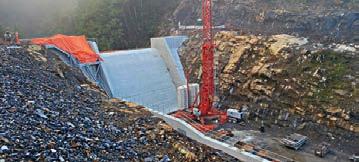

importance of long-term customer satisfaction and are more likely to design tanks that are user friendly and will generate higher ROI over the life of the product. Built-in ladders, convenient manhole access doors and a solid warranty, for example, are strong indicators that a manufacturer is not cutting corners. Additionally, double walled units with removable primary tanks make cleaning much easier. Over time, tanks that are easier to clean and maintain will likely last longer and yield a much higher return.
To extend the life of pumps, meters and other components, look for tanks with enclosed, weatherproof cabinets. This is a common feature on modern cube tanks and will greatly increase the longevity of components compared to tanks with components mounted on the top, where they are exposed to the elements. It is also worth checking whether your tank partner can supply the tank fully fitted with all the ancillary parts including pumps, placards and filters so that when the tank arrives at your site it is ready to use as soon as it is offloaded. Additionally, choose a manufacturer that works closely with its customers to help select the ideal tank or fleet for the size and scope of the operation. Some manufacturers will even go as far as partnering with a customer to ensure all regulations, from local, provincial, and federal, are met. By providing these services, manufacturers can save customers time and hassle. Similarly, consider the manufacturer’s lead time. Some tanks can be on site within days, while others take weeks. While planning is ideal, it is not always realistic, and with short turnaround times, projects can get started sooner.
As operators scramble to find new ways to decrease their operating expenses, fuel storage tanks, while not front of mind in terms of innovation and technology, should not be overlooked. And as regulations continue to change and the marketplace becomes more competitive, businesses should never ignore an opportunity to trim expenses and work more efficiently than the competition. CMJ
MAY 2023 CANADIAN MINING JOURNAL | 45
Your partner in the field and beyond Woodworth Dam Project Completed in 2022
Fuel Island is a self-contained, moveable fuel station that can be deployed for fleet refueling as well as long-term, stationary applications. CREDIT: WESTERN GLOBAL
By Steve Gravel
Mines are underground smart cities
We connect to our wearable fitness trackers. We set our smart thermostats. We ask our voice assistants to set our smart appliances to pre-heat the oven just before we come home.
Then, we step outside into public spaces that are increasingly connected through devices that allow us to receive instant information about bus schedules, traffic, health services, safety alerts, community news, and much more. The rate at which internet of things (IoT) technology is being developed and deployed in the world around us is astounding.
If we look at the so-called “smart cities,” we see that they deploy IoT sensors and advanced analytics to improve performance relating to municipal services and other aspects of city life. IoT is increasing efficiency and improving quality of life.
A big part of this concept is a network of connected objects and devices that send data through wireless technology and virtual computing. Cloud-based IoT applications consume, analyze, and portray data in real-time to help municipalities and citizens make better decisions.
For example, connected traffic lights can reduce road congestion; IoT sensor arrays can collect air quality data to manage pollution sources to make a city more livable, and smart garbage cans can send data to waste management departments to optimize pick-up schedules.
Some benefits of smart cities include more effective, datadriven decision-making, enhanced community and government engagement, safer communities, reduced environmental footprint, efficient public utilities through smart-grid solutions
and improved utilization and maintenance of infrastructure.
While these advanced technology platforms have gained prevalence in large urban centres, recent investments in communications infrastructure and other gateway technologies have made the same technology available to the mining sector, with some of the same downstream impacts and benefits.
Adoption of robust wireless communications systems in underground mines in recent years has offered the same opportunities for the powerful IoT solutions in mines that have become commonplace in other settings. Reliable communication infrastructure in underground mining has enhanced safety and provided decision-makers with real-time information.
Some exciting areas where IoT technology more typically seen in the above-ground smart device sector that has begun to show promise in mining include air quality management, wearable devices, connected vehicles and mobile fleet management and computer vision.

In recent years, ventilation in underground mines has been taken to new levels with the advent of sensor solutions and variable frequency drives. Mines can now automatically control air proportionally to areas of the mine that require it most by correlating occupancy, air quality, and fan speed and direction. This advancement known as “ventilation on demand” has had a significant impact on ventilation costs and worker health.
Just as we strap on our favourite fitness tracking watch, more and more miners are sporting the advanced sensor technology to monitor their health, ensure safe work, and even predict illness events before they occur.
46 | CANADIAN MINING JOURNAL www.canadianminingjournal.com
MINING IN THE DIGITAL AGE PHOTO: ADOBE STOCK/KOSSSMOSSS
Connected vehicles and equipment have also started to gain prominence in the underground mining sector. Through on-vehicle sensor technologies communicating real time telematics and machine health monitoring, managers are getting a clearer picture of overall equipment effectiveness. This is allowing mine operations to move from a break-fix cycle to predictive and even precision maintenance.
For some time, computer vision solutions like facial recognition and obstacle avoidance have pervaded smart cities. This same core technology is also being used in mining. From smart ore-sorting technology and shaft inspection solutions to shotcrete thickness detection and tailings dam stability monitoring, computer vision has found certain niche use cases in the sector. In an industry where manual visual inspections that rely on human eyes and judgment are still widespread, visual AI can offer speed and accuracy. Moreover, back-end image processing for defect recognition is allowing for advanced data analytics and preventative interventions before failures occur.
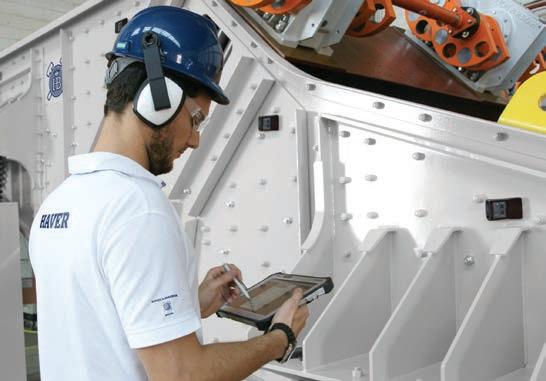
In the end, the speed at which smart technology is popping up at mine sites around the world is continuing to increase. Before long, the experiences we are now used to in our daily lives, like our phones automatically pairing with our car, then seamlessly switching to our smart home system, will become mainstream in industrial work settings like mining. Currently, there are thousands of companies, large and small, developing IoT solutions servicing the smart city, smart building, and smart homes space around the globe. Many of these solutions have potentially meaningful benefits for the mining process as well. Adapting and adopting these solutions could make mining operations the underground smart cities of the future. CMJ

MAY 2023 CANADIAN MINING JOURNAL | 47 Schedule today! 1-800-325-5993 procheck@haverniagara.ca haverniagara.com/pro-check See how PROcheck can maximize your operation. CHECK YOUR PULSE. PROcheck is our signature, expert analysis beginning with our diagnostic tools. Pulse Vibration Analysis examines the health of any brand of vibrating screen, while our Pulse Impact Test prevents your screen from operating in resonance. HAVE R & BOECKE R NIAGAR A
Steve Gravel is the manager of the Centre for Smart Mining at Cambrian College.
By Michael E. Thompson
Overland conveyors go the distance
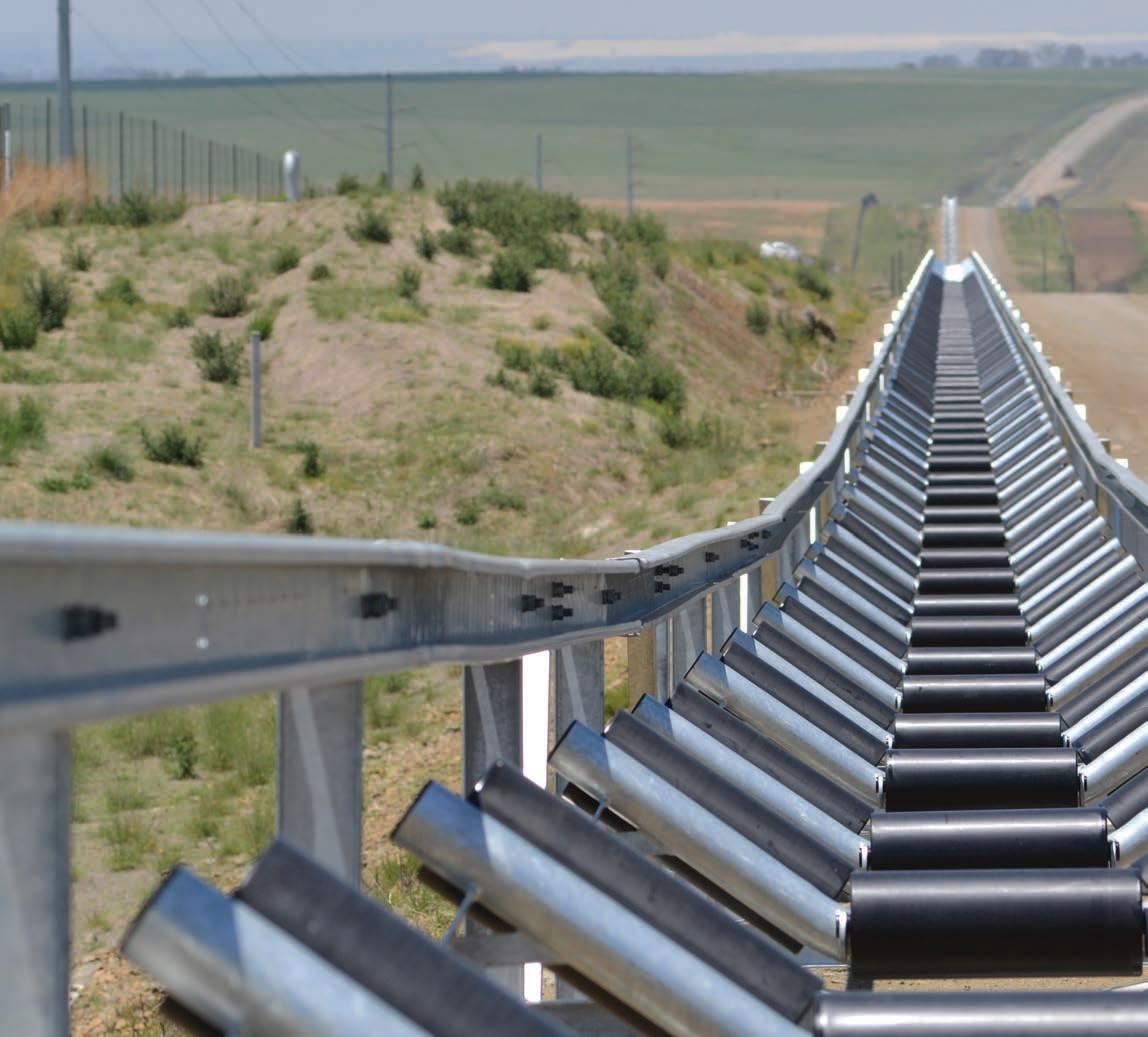
In the world of bulk material handling within a mining operation, clients have options at their disposal with regards to how best to transport a product from point A to point B. These options are often evaluated and traded off against each other at the early stages of a project and aspects that are often considered include (but not limited to) the following:
1 the value of the product,
2 the amount of material to be transported,
3 the physical area (mountainous, swamp, urban, through an industrial complex, etc.) of the proposed routes,
4 budgets,
5 distance (e.g., 10 km versus 500 km),
6 environmental impacts (noise, visual, dust, etc.),
7 expected timelines,
8 safety (e.g., trucks having to pass through or close to rural villages or going downhill), and
9 future capacity
For the purpose of this article where the focus is to share with those in the industry some of the world records (in length) with regard to “overland conveyors” but limited to cable belts, trough belts, and pipe conveyors, as these types of conveyors can be included in the term “overland conveyor”, and as such, are the major contenders for claiming the title of the world’s longest single-flight conveyor.
Multi-flight versus single-flight conveyors
A conveyor flight is a single conveyor section, from the tail end loading chute to the head end discharge chute. A multi-flight conveyor is a string of single-flight conveyors in which the discharge from one conveyor loads the next conveyor in line. There are many multi-flight conveyors in current operation whose total combined length exceeds 80 km. The longest multiflight conveyor system on record is the 98 km Bu Craa conveyor in Morocco and Western Sahara, and there are currently sev-
48 | CANADIAN MINING JOURNAL www.canadianminingjournal.com
A WORLD OF RECORDS
CONVEYORS
eral systems of similar length under construction around the world. However, none of the individual flights in these conveyors are as long as the longest single-flight conveyor.
Cable belt conveyors
In a cable belt, the belt is relatively flat, supported by external cables that run on sheaves.
Currently holding the world record for the longest single flight conveyor in the world is the 31-km long flight of the 51-km cable belt conveyor system at the Worsley Alumina mine near Boddington, WA, Australia. This conveyor was designed and built by Cable Belt Conveyors in 1982. Cable Belt has since been acquired by Metso.

Trough belt conveyors
A trough belt runs on a cradle of idlers that bend the belt into a trapezoidal trough, allowing it to hold more material in a narrower cross-section than that used for an equivalent capacity cable belt and to negotiate tighter horizontal curves. The steel cables that support the belt are sandwiched between the top and bottom covers of the belt, where they are more resistant to corrosion. The second longest single-flight conveyor in the world is a trough conveyor installed at SASOL’s Impumelelo mine in Secunda, South Africa. It is the longest single-flight troughed belt in existence. Designed by CDI and built by ELB, it transports up to 2,500 t/h of coal to a processing plant that converts the coal into diesel fuel.
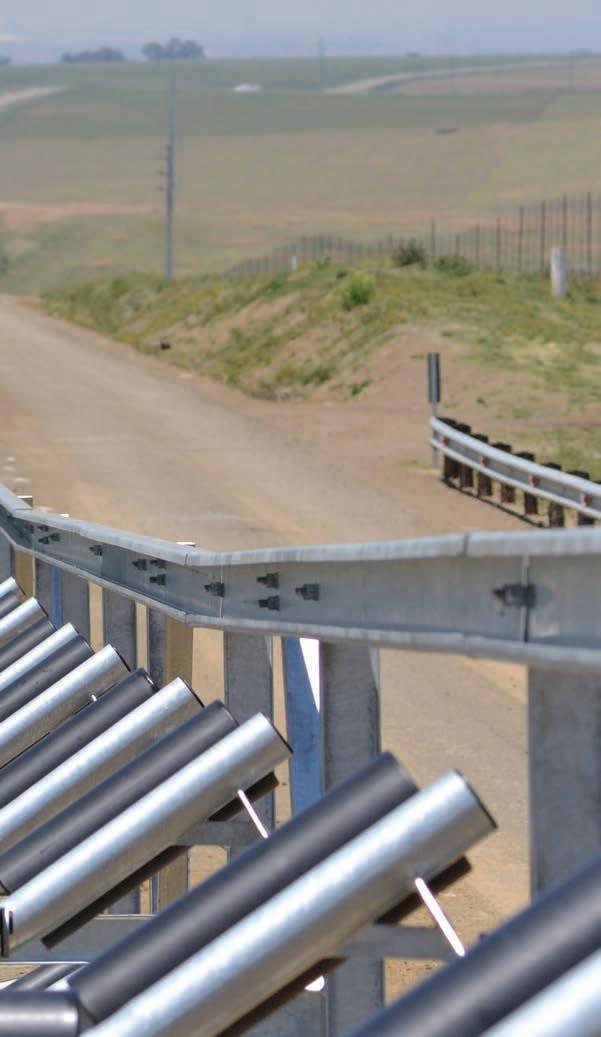
Pipe conveyors
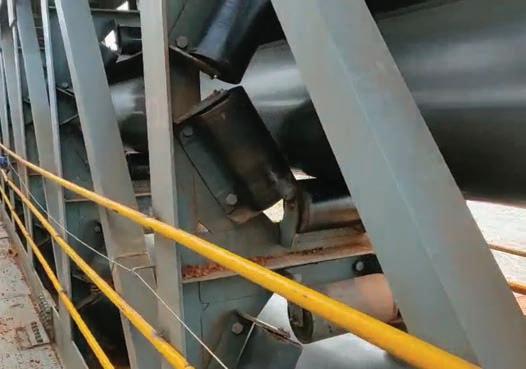
Pipe conveyors are sometimes referred to as tubular belts, probably to avoid confusion with pneumatic conveying systems that use steel pipe. A pipe conveyor uses a belt construction similar to the troughed belt, but in between the head and tail pulleys, where the belt is flat, a set of six idlers force the belt into an enclosed pipe shape. This prevents the egress of material, which reduces material loss and environmental impact due to spillage and windborne particulates and prevents contamination of the transported material by rainwater and other external sources. Due the higher idler friction, the pipe belt generally has a operating power cost that is approximately double the power cost of a troughed belt with the same capacity, but
CONTINUED ON PAGE 50
MAY 2023 CANADIAN MINING JOURNAL | 49
Left: Troughed conveyor (Impumelelo). CREDIT: CONVEYOR DYNAMICS
Cable belt (Boddington). CREDIT: CONVEYOR DYNAMICS
Pipe conveyor cross-section (similar to Yubei). CREDIT: CONVEYOR DYNAMICS
can negotiate much tighter horizontal and vertical curves, which can significantly reduce the capital expenditure cost of the conveyor right-of-way. The longest pipe single flight pipe conveyor is part of the Hebi conveyor system at the Hebi Coal mine, in Henan, China. Known as Yubei B, it was designed by CDI and built by HHI. It is 15-km long and carries 1000 t/h of coal per hour.
International conveyors
Not specifically a “type,” but a geographical and political circumstance, an international conveyor crosses national borders. The 61-km multi-flight Bu Craa conveyor mentioned above crosses a disputed border between Morocco and Western Sahara and could be considered by many to be an international conveyor system. However, the longest single-flight conveyor that crosses an international border runs 17-km from Meghalaya, India, to Chhatak, Bangladesh. Designed and built by Larsen & Toubro of India for Lafarge Cement, it carries 960 t/h of either limestone or shale used to produce cement for construction projects in Bangladesh. Both of these conveyors are trough conveyors.
World’s longest single-flight conveyors
Table 1 provides a comparison of the current world record holders for overland conveyors of each type. These records were made by moving stone but are not carved in stone. Somewhere, right now, someone is working on the next record-breaking project.
Physical and carbon footprints
A frequently asked question is why conveyors? Why not trucks or trains?
The answer is in footprints, both physical footprints of the roadbeds and structures required to support them, and the carbon footprint created by the act of transporting the material. Physical footprints are the widths and depths of the roadbeds needed to support the load. A typical conveyor, including its parallel maintenance access road, takes up about half the space that a two-lane highway would. In the case of elevated conveyors, even maintenance access can be accommodated as part of the elevated structure. No wide roadbeds required; no deep, multi-layered road surfaces are required to cope with the concentrated axle loads. In addition, conveyors can take steeper slopes than rails, for a more direct path from point A to point B than is possible with trains. While trucks can handle steeper slopes, they require thicker pavement to support the concentrated weight of the load and the vehicle. Capital costs and physical alteration of the environment can be significantly reduced, especially if there is not already a road or a rail line in existence, as is frequently the case.
Carbon footprints can be envisioned by comparing the capacities of the conveyors listed above with the capacity of the largest bulk resource haul trucks allowed on the major highways of the western United States. There are a lot of lesser highways in the U.S. and around the world where this truck cannot go due to weight restrictions on roadbeds and bridges. The 10-axle
resource hauler, shown in the image below, has a maximum allowable weight of about 58,513 kg GVW (gross vehicle weight). Approximately 44% of this GVW, or about 25,628 kg is the weight of the vehicle. The net weight of the transported material is about 32,885 kg or 33 tonnes.

The Chhatak conveyor can load 29 of these trucks every hour. The Boddington belt can load 103 of these trucks every hour. Imagine if you will, adding 30 to 100 of these huge semi-trucks every hour to the traffic flow along your current work commuting route, and then imagine this same traffic running through 17 to 31 km (or more) of rugged Australian outback, virgin Amazon rainforest, heavily populated clusters of Bangladesh or Chinese villages and fields, or any busy industrial seaport anywhere in the world.
These trucks return empty, burning 44% of the fuel required for a fully loaded truck. The empty return side of a conveyor belt returns automatically at a cost of approximately 20% of all the energy required for the transport process. Even if the operating fuel cost for the loaded trucks can be brought down to equal the operating electric power cost to move the loaded side of the belt, the empty return belt power represents 50% or better savings in the return trip energy cost.
50 | CANADIAN MINING JOURNAL www.canadianminingjournal.com
CONVEYORS
10-Axle resource hauler trailer. CREDIT: ADOBE STOCK
CMJ
Michael E. Thompson, P.Eng. is a senior mechanical engineer at Conveyor Dynamics Inc.
Conveyor Material Owner/Location Length Capacity Speed Commissioned/ Type (km) (t/h) (km/h)
by Cable Bauxite Worsley Alumina/ 31 3,400 25 1982/ Belt Boddington, WA, Cable Belt Australia Conveyors Inc. Trough Coal SASOL/Impumeleo, 27 2,500 17 2016/ Belt Secunda, South Africa CDI & ELB Pipe Coal Hebi Coal/Henan, 15 1,000 16 2017/ Belt China CDI & HHI Trough Limestone Lafarge Cement/ 17 960 14 2004/ Belt and shale Meghalaya, India
Larsen &
Table 1. World’s longest single-flight conveyors.
designed and
built
to
Toubro Chhatak, Bangladesh

MAY 2023 CANADIAN MINING JOURNAL | 51 WEEKLY REPORT Email Newsletter for Mining Professionals Join thousands of high-performing mining professionals already receiving The Northern Miner’s free Weekly Report update. SUBSCRIBE FOR FREE northernminer.com/weekly-report
By Atri Maharaj and Garine Sarkissian
Automation provides solutions for sustainable mining
Aprevailing challenge for the mining industry, which has taken on even more prominence recently due to a greater focus on the environment and sustainability, is waste and waste management. From the conservation of lakes and rivers that are being polluted to the sequestering of tailings ponds at mining sites, managing waste to mitigate the risk of damage to natural resources demands investment and concerted efforts into water treatment programs. While the benefits of such investments and efforts are apparent to most, this also creates a novel set of problems. As such, companies will need to turn towards the latest technologies to access energy and ensure all regulatory mandates are being met. All this while not only trying to reduce their environmental footprint, but also raising the capital necessary for putting forth such vigorous programs – not an easy task for a cost conservative industry like mining. This is where automation and robotics
solutions come into play to help the industry. Once the decision is made to bring automation to site, whether it be a standardized product or a custom-tailored solution for various applications, the improvement may not be obvious at first, but the return on investment will be tenfold in the span of mere months. To make a positive and sustainable impact on the economic role in society, mined materials, which are explored for, extracted, transported, and processed according to quality control processes, have to be delivered
safely, whilst retaining high quality.
As an example, let us consider tailings which have long been considered waste. Advancements in technology and the need to meet the demands of a circular economy are now shifting this traditional perspective. The long-standing approach has been to pump tailings into artificial settling ponds where solids and liquids could be separated. As the design of thickeners has improved, so has the dewatering process wherein water treatment and recovery are more efficient and effective. Measuring the zeta potential of these systems allows for the optimal amount of coagulant to be added to thickeners to maximize the formation of flocs and subsequently separation of solids and liquid components that can then be directed to proper channels for storage, re-use, or return to the environment (as per regulatory practices). Fast phase identification and quantification to quickly respond to changes in the processed products to ensure optimal quality and reduce wast-

52 | CANADIAN MINING JOURNAL www.canadianminingjournal.com
AUTOMATION AND ROBOTICS
PHOTO: ART BY PIXEL/ADOBE IMAGES
Sustainable mining of natural resources is a cornerstone of our standard of living and prosperity.
age is a necessity in this case. Moreover, identifying compounds of value that can be recovered from tailings and thus reduce wastage and potential environmental damage is of utmost importance. Evaluating groundwater movement and pollution by quantifying pore size is a solid approach to avoiding contaminants.
In keeping up with the subject of high-quality production and embracing automation, when looking at time saving measures, a fully automated environment allows for 24/7 operation minimizing downtime and maximizing productivity. Another cost saving approach to avoiding downtime while implementing automation would be to measure the density of both dry solids and formulations for accurate fine-tuning of density from individual values and blends of cuttings, barite, clays, and other solids to minimize cost and prevent blow-out. Automated measurements allow personnel to focus on more pressing, high-value tasks while mundane, routine work is expedited. This can be utilized in either a laboratory environment, or as much as a production site.
While personnel can be onsite, automation in the laboratory can ensure proper viscosity of bentonite at rest and during pumping. This allows for smooth processing when drilling mud is transported as well as no sudden downtime.
Taking a more focused approach to cleaning as an example, rather than dedicating time and human resources to such a time-consuming task, immediate cleaning after a measurement procedure can be robotized to fully automate the process end to end. Even in the case of hard to clean samples, an integrated cleaning unit can be equipped with a cleaning detergent pump to ensure an effective cleaning process, taking the guess work out of it.
Although human error is always a possibility in any process, easy automated processes reduce any potential errors with intuitive and easy-to-handle operating procedures. Automation allows for such sophistication as data integrity insurance, with a unique data matrix code labeled on the bottom of sample cups and allows for integrated code readers. Since measurement results can be directly
transferred to network storage, time is saved, process controls with reliable data have been proven, errors due to manual input are avoided, and data integrity preserved. An increase in sample processing capability also increases walkaway time. A built-in pH station for titration and sample preparation before analysis increases storage capacity on average from 36 to 54 samples, providing increased walkaway time and higher throughput.
Sustainable mining of natural resources is a cornerstone of our standard of living and prosperity. Exploring new exploitable deposits and recycling raw materials have to be done responsibly for mining to have that sustainable longevity. A proper investment in automation and robotics will contribute to the development of such programs into the production chain for a healthier environment and to help optimize the exploration process for companies in the coming years. CMJ
We’re on a mission to revolutionize mining. We engineer advanced mining solutions to unlock productivity, reduce by an uncompromising design process, data-based testing protocol, and passionate engineers, our mining equipment and technology are built so you can mine smarter.

crmining.com

MAY 2023 CANADIAN MINING JOURNAL | 53
CR is proud to be Powered by Epiroc
Atri Maharaj is national sales manager and Garine Sarkissian is marketing manager with Anton Paar Canada.
By Harold Reimer
Indigenous engagement is transforming the future of mining
New partnerships bridge the gap between industry and community
Canada’s mining sector has an extensive history, with minerals playing a vital role in day-to-day life going back thousands of years. Since then, much has changed and the industry has experienced innumerable advancements, including in technology, safety, and sustainability. More recently, one of the most significant developments has been the official recognition of the traditional lands of Indigenous communities that many Canadian mines are located on. The recognition and accompanying legislation give communities better representation and more leverage in the mining process. That is why Indigenous community partnerships are becoming even more important and the relationship between industry and Indigenous communities is transforming. It helps pave the way towards economic reconciliation. While the process is new to many, some suppliers are in a unique situation where they can support as a liaison to consult and understand. This allows for a bridging between the industry and Indigenous communities where there is an opportunity to reach out, engage, and educate. What we are seeing is an approach to seek social licence and the discussions taking place are leading to impact benefit agreements (IBAs), capacity agreements, and mutual benefit agreements. It is leading to greater information sharing, better consultations, engagements, and consent for respective projects.
As minerals continue to play a critical role in day-to-day life, including to support the energy transition with electrification and low-carbon technology, it becomes increasingly important to support our Indigenous communities with their stewardship action plans that are based on traditional knowledge since time immemorial. National Resources
Canada states that “Indigenous representation in the minerals sector has increased in the last decade, especially in the mining industry. Working with First Nations Territories can help support the future success of Canada’s mining industry.” Additionally, in 2021, the direct contribution of Canada’s minerals and metals sector to national GDP was $97 billion, which represented four per cent of Canada’s total GDP.
Shift from duty to consult to right to consent
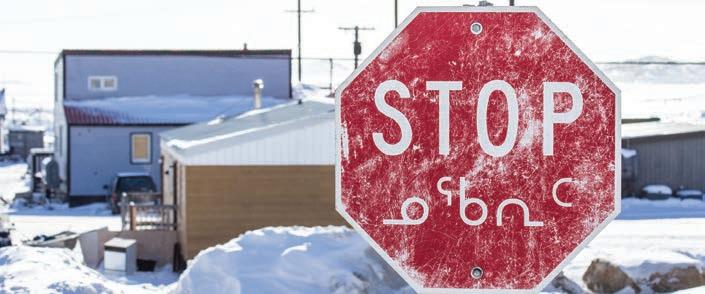
At the core of this shift are significant declarations. We must acknowledge and understand the United Nations Declaration on the Rights of Indigenous Peoples (UNDRIP) that was adopted in 2007 and given Royal Assent by the Government of Canada in 2021. The declarations state that “Indigenous People have the right to determine and develop priorities and strategies for the development of use of their lands or territories and other resources.”
The result is the change from duty to consult to right to consent (Free, Prior and Informed Consent, FPIC). The key difference is that new projects now hinge on the rights of Indigenous Peoples to give or withhold their consent for any action that would affect their lands, territories, or rights. This requires active
engagement, strong relationships, and partnerships between the mining industry, the suppliers, and the Indigenous communities. It is helping to shift conversations and involve the local communities at project onset to understand their views and desires and incorporate them into the plan, rather than consult communities at the final stages.
Right to consent has been instrumental in ushering in meaningful engagement between those who are proposing a project and those whose traditional livelihoods could be impacted by that disturbance. With new legislation and rulings placing FPIC in the forefront, there have been significant changes that genuinely see collaboration and the resulting benefits in working with Indigenous communities. So, it is important to get out in the field to identify what is happening and what the implications are for suppliers, industries, and the impacted communities. Establishing good relationships is at the core of every business. Those relationships overlap in communities where we work, live, and play. The pace of change has accelerated in the last 24 to 36 months, and there is now more engagement in environmental assessments, permits, and water licensing as Indigenous involvement and consent is required for every project and proposal.
54 | CANADIAN MINING JOURNAL www.canadianminingjournal.com
INDIGENOUS PEOPLES PHOTO: JEF/ADOBE IMAGES
Building bridges between communities
Deep rooted for generations, Indigenous relationships thrive in person-to-person dynamics and oral communication. Businesses have the honour and privilege to learn from Indigenous leaders, Elders, and Knowledge Keepers. Through this learning, it is possible to understand historical provisions of the land, ceremonial, and spiritual traditions. From a western Canadian perspective, the territory is vast. There are over 300 First Nations communities in Finning’s territory and endeavouring to connect with every community is ambitious. But, by proactively starting the process and engaging one by one and at the beginning of a mining project, this act builds trust and lasting connections.
Many First Nations have already established long-term operations. They operate full economic development teams with a CEO and an established board of directors. Within this structured network, the communication between all the stakeholders is facilitated and flows from economic develop-
ment through discernment by the Chief and council to the eldership and in some cases to the membership for voting. The systems operate very well and a synergy between industry and community exists. Alternatively, some Nations are at the beginning of the economic development process and desire consultation for the establishment of a strong economic development team and identification of good board of director prospects. Active involvement, consultation, and communication by representatives from all industries leads to the discovery of a Nation’s unique needs and requirements for projects and future economic development.
Exciting opportunities for the future
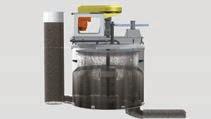
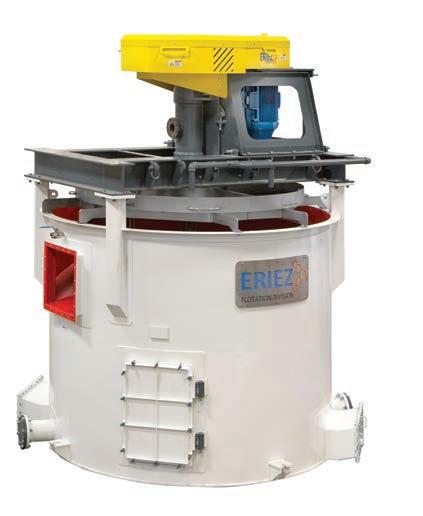

This is an exciting time for doing business. Indigenous engagement is evolving, and suppliers are learning new ways to collaborate on the journey towards economic reconciliation. Problems can be overcome together, and opportunities for education, apprenticeship and mentorship can be unearthed. Project legacy is
not superficial; it becomes part of the unified statement that honours the territorial, social, and spiritual connection to the traditional lands and provisions. It means that communities are engaged, and their specific needs are met, whether that means waterway and biodiversity protection, economic and education opportunities, or other specific considerations that help a community flourish.
We are starting to see a future full of opportunities to partner and embrace developments around mineral exploration, hydrogen, LNG, fleet electrification, alternative fuels, and power generation. Better understanding, listening, and engagement leads to more meaningful projects that can become generational building blocks. So, if future prosperity is the end goal for both industry and Indigenous communities, the first place to start is with strong partnerships. CMJ
MAY 2023 CANADIAN MINING JOURNAL | 55 Unlock Your Mill’s Full Potential StackCell’s high performance, two-stage flotation technology greatly improves throughput by lowering residence time compared to conventional cells. This compact powerhouse requires a fraction of the space and can be stacked to accommodate plant expansions. StackCell’s Advantages: •Requires Less Power •Reduces Foundation •High-Rate Flotation •Reduces Capex Small Footprint Huge Throughput 1.604.952.2300 | Eriez.com See How It Works! Visit Eriez.com/StackCell
Harold Reimer holds an MBA from the University of Alberta and is the Indigenous business development manager for Finning Canada.
ELECTRIC MINING IN THE DIGITAL AGE A
workforce revolution
Machines replacing humans in the workplace has been a perpetual concern since the Industrial Revolution. In the early 1800s, the Luddites, a “radical” organization of textile workers protested the use of machinery in the industry as it effectively eliminated many of the craft jobs and replaced them with machines and unskilled factory labour. Moreover, the machinery advanced productivity and resulted in the factories needing fewer workers than the craftspeople that were displaced. The Luddites sabotaged the machinery to try to impede progress. In the end, they failed, but history will remember them. Today, anyone who seemingly resists the adoption of technology is often referred to as a Luddite.
Robotics and automation in general will continue to displace workers and result in some groups finding themselves unemployed. This is an unfortunate but inevitable consequence of finding better ways to produce more with less. However, before passing judgment as to whether this is a good thing or bad thing, we need to look at both the positive and the negative impact new technology will have on the workforce.
In mining, one of the immediate advantages to advanced technology whether in the form of autonomous haul vehicles or remote-controlled mining machines is that it removes workers from the dangers they could be exposed to at the workface. This could include exposure to hazardous substances (e.g., radiation in a uranium mine); noise; dust; loose falling material; moving heavy equipment; poor air quality; or any number of other hazards specific to what is being mined. Removing humans from the workface is the ultimate mitigating step to protect workers from the inherent dangers often associated with mining.
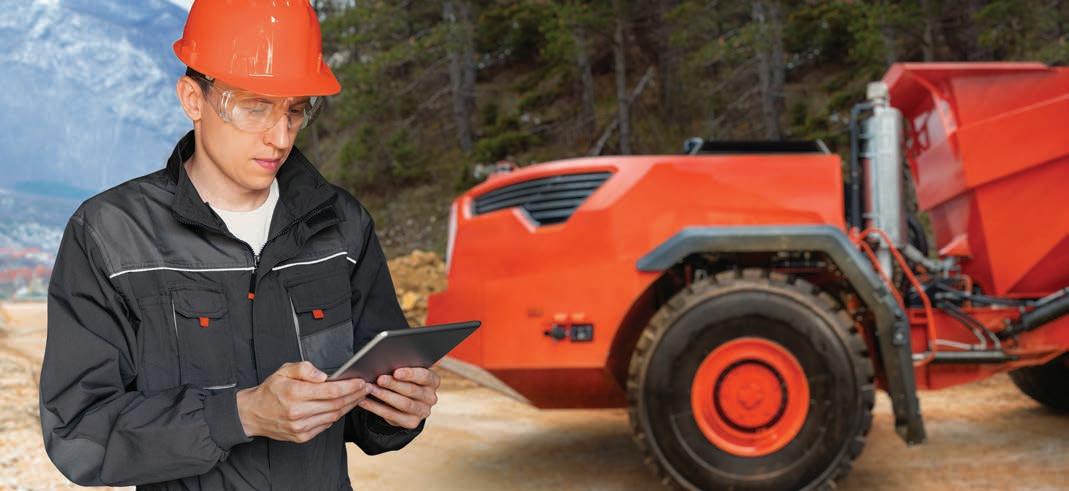
Safety is the key rationale for deploying new technology that eliminates the human operator. Notwithstanding, one should expect a dispute with organized labour no matter how compelling the safety argument is. Several years ago, I spoke to members of the Longshoremen’s Union on the west coast about the then relatively new technology [Hands Free Mooring (HFM)] that allowed a port operator to land a ship and secure it to a wharf completely by remote control and with no human intervention using giant suction cups. HFM units reach out to
secure a ship during dockage, utilizing vacuum pads instead of traditional wire or rope lines. Ships are held by the mooring units which move up or down on rails recessed within the dock wall as the ship moves up and down with tides and waves. Once the ship is finished being loaded or unloaded as the case may be, the mooring units gently push the ship off the dock and release their grip, allowing the ship to proceed on its journey.
The Longshoremen Union objected to the use of this technology at the time because it represented a clear threat to jobs. However, the jobs that would be eliminated were amongst the most dangerous in the world. Many people are seriously injured or killed in the process of mooring ships with heavy lines or cables. The counter argument is not always rational when we are talking about something that radically changes how work is performed. More than just threatening jobs, technology challenges a way of life and a work culture for those dock workers.
This cultural disruption has the knock-on effect of changing how people in certain walks of life see themselves. The Longshoremen members see them-
56 | CANADIAN MINING JOURNAL www.canadianminingjournal.com
RECRUITMENT, TRAINING & CAREERS PHOTO: SCHARFSINN86/ADOBE IMAGES
By Hugh Secord
Change is a good thing. Change, however, is not an easy thing
selves as hard-working tough individuals who face danger in the performance of their duties. When a gang of these rugged individuals can be replaced by a single operator sitting in a control room which could be several hundred kilometers away, the impact can hardly be anything less than emotional. It takes away not just employment but eradicates identity.
Similarly, continuous mining methods using remote controlled boring machines and automated conveyor systems not only dramatically improves safety and productivity, but it also changes the very nature of mining. These methods replace face drill operators, explosive technicians, scalers roof bolters, and more. These workers are replaced by control room operators who are shielded from the noise, dust, and other inherent hazards. It is dramatically different work and will completely change the culture of mining.
The degree of technological advancement that is available in the mining sector will have a profound effect on how the industry is perceived. Mining is often seen as a rough profession suitable to certain hearty souls who relish the inher ent danger that one implicitly associates with going underground and digging out valuable minerals. The new face (pun intended) of mining is much different.

The modern miner is a technician oper ating sophisticated equipment in the safety and comfort of a control room far removed from danger. The work environ ment is conducive to attracting and retain ing a different kind of workforce that is more diverse. This is a key point. The transformation in the nature and makeup of the workforce is an important chal lenge for human resource practitioners. It is not as simple as retraining people in new technologies. It is truly embracing a complete revamping of the workforce mix and therefore operating culture.
This cannot reasonably be accom plished incrementally. It is about revolu tion not evolution. In the initial example above, the sabotage associated with the Luddite upheaval was an inevitable and arguably necessary reaction to dramatic changes caused by the introduction of revolutionary new technology. It is nice to sit in the comfort of our offices and imagine the front-line workers accepting just how wonderful their lives are going to be once they realize the positive impact the technology is going to have. Alterna tively, one might think that the offer of a comfortable retirement package will ease some displaced workers into a new sedentary lifestyle. However, that is not
the reality we live in. The introduction of technology disrupts lives and challenges how people identify with the work they currently perform.
With new technology, there will be new and interesting jobs. The front-line worker becomes a technical operator and is freed from manual labour, and other jobs emerge at the front line that require master crafts people of the highest order. Robots, electrical vehicles, autonomous haul trucks, and all matter of new equipment will require maintainers with extraordinary skills that largely do not exist today.
Certainly, given today’s digitization, many pieces of equipment are designed with modules that allow for quick maintenance and repair, and the work can be performed by semi-skilled technicians (think of an F1 pitstop). But at the other end of the scale, we will need problem solvers who have programming skills on top of deep mechanical knowledge on top of a sophisticated understanding of systems. These “masters” likely will have two or more trade tickets and a variety
So, while many front-line jobs in mining will be replaced by machines and systems, we will see the emergence of a new class of workers who will be highly trained and qualified. The emergence of these technical roles will change the nature of this kind of work and disrupt the way these jobs are viewed by the public.
If we collectively manage the future transformation correctly, we will have to face the reality that a large group of people will be displaced and will be very unhappy. They will not only be displaced by machines, but they will also make way for a new class of worker who will command respect because of the significant investment they have made in learning a trade that not long ago did not exist. We will find these technical roles in mining, in the oil and gas sector, in the broader power sector (including renewables), manufacturing, supply chain, and anywhere that technology can be used to reduce exposure to danger and increase productivity by replacing people at the workface. CMJ
MAY 2023
.com
Simulations: See what you need to avoid operational bottlenecks.
Hugh Secord is chief strategist at Oakbridges.
By John Sandlos
Mining the Americas in deep time

If you ask the average person in the street when they think the history of mining begins in the Americas, they might pinpoint the throng of the forty-niners who migrated to California in search of gold (bequeathing a name to San Francisco’s NFL team). Or perhaps they would recall the mad dash northward to the Klondike in 1898, made famous in the fiction of Jack London, the poetry of Robert Service, the popular history of Pierre Berton, and even a classic film by Charlie Chaplin. Some might go as far back as the large-scale precious metal mines that brought the Spanish to Central America in the 16th century. But almost nobody would acknowledge that mining in the Americas originated thousands of years ago as a critical cultural and economic activity of Indigenous People.
Mining on this continent has extremely deep historical roots. The oldest known mine in present-day Canada is a quartzite quarry on Manitoulin Island, dating back approximately 10,000 years. In
Labrador, Indigenous People of the Maritime Archaic cultures quarried for silica-based chert, developing extensive regional trade networks for this valuable tool-making material. Indigenous People in the Lake Superior region mined native (i.e., mostly pure) copper as far back as 6,000 years ago, stripping overburden, digging trenches and tunnels, and heating the mined material so it could be shaped into practical and ceremonial objects. Over time, Indigenous miners developed vast copper trade networks as craft workers in the distant cultural groups such as the Mississippi Valley mound building cultures (800 to 1600 CE) mastered the art of molding copper sheets over wooden carvings to produce startlingly intricate artwork. In Central and South America, Indigenous People mined copper and gold at least 4,000 years ago, with sophisticated smelting techniques first emerging among the Moche culture roughly 2,000 years ago. Even as many Indigenous mining and
copper cultures transformed their cultures in response to the ravages of disease during the early period of European contact (the agricultural Mississippians eventually became bison hunters on the Great Plains, for instance), others persisted into the modern era. The Ahtna People of Alaska controlled the vast copper deposits of the Chitina River basin to the end of the 19th century, fighting off Russian and American incursions until a smallpox outbreak in 1900 forced their abandonment of the area. The Kugluktukmiut (the so-called Copper Eskimos) of the Coronation Gulf region, and the Yellowknives Dene (previously called Copper Indians) of the Great Slave Lake region, produced copper tools and weapons into the early 20th century.
Throughout the 19th century, many geologists, anthropologists, and even popular writers refused to recognize the achievements of Indigenous miners. Some suggested that the apparently “primitive” woodland people of the Lake Superior
58 | CANADIAN MINING JOURNAL www.canadianminingjournal.com
HISTORY OF MINING
PHOTO: STEWART, ARCHIVIST/ADOBE IMAGES
region could not have built the nearly 5,000 small copper mines that exist in the Keweenaw Peninsula, but at least they mostly argued (erroneously) that it was an Indigenous group, likely one deemed more sophisticated such as the Mississippians, that must have built the copper mines. Others went further, denying Indigenous People any role in the ancient mining of the Americas, concocting fantastic theories that placed ancient Europeans, perhaps Egyptians, Cypriots, or Minoans at the centre of the story.
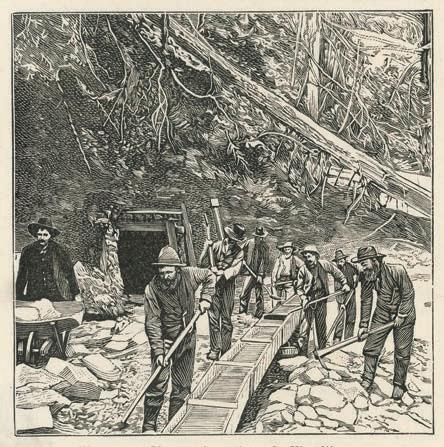
More recent archaeological research has set the record straight on Indigenous miners as innovators in the realm of resource development and technology. Even after the contact period, many Indigenous groups maintained close connections to mining, sharing knowledge of valuable deposits with outside prospectors, selling country food to early-stage exploration camps, cutting seismic lines and timber for heating fuel, and joining the mining workforce whenever opportunities arose to do so. This process has
only accelerated in recent decades as Indigenous communities in Canada have gained more power (through land claims, constitutional rights, impact and benefit agreements (IBAs), etc.) to negotiate the terms on which mining development will proceed.
Of course, Indigenous communities recognize the close historical connection between colonial mining and dispossession from traditional lands, and Indigenous communities will very often oppose individual mining projects that threaten to undermine the health of local people and the land. In northern Canada, where so much mining takes place, development proposal on Indigenous lands will inevitably be weighed against other community priorities, not least Indigenous-led conservation projects that have designated large
areas of land as protected spaces. At the same time, many Indigenous People and communities strongly identify as miners, whether as drillers, heavy equipment operators, managers, or investors.
While it is dangerous to draw too direct a parallel between vastly different mining practices in the ancient and contemporary worlds, it is also important to recognize that Indigenous engagement with mining is, for many cultures, grounded in experiences that stretch back to the deep history of this continent. CMJ

John Sandlos is a professor in the History Department at Memorial University of Newfoundland and the co-author (with Arn Keeling) of “Mining Country: A History of Canada’s Mines and Miners,” published by James Lorimer and Co. in 2021.

MAY 2023 CANADIAN MINING JOURNAL | 59
More recent archaeological research has set the record straight on Indigenous miners as innovators in the realm of resource development and technology.
Copper Inuit, or Kugluktukmiut, digging for copper samples in 1929 at Husky Creek near Kugluktuk, on the Central Arctic coast in the territory of Nunavut (formerly the Northwest Territories.). Library and Archives Canada: (PA-099933). The image is printed with permission from Formac Lorimer Books.
Hopewell copper artifact representing a bird of prey. Hopewell Cultural National Historical Park in the southern part of Ohio. Copper was prized for ceremonial and decorative uses. The image is printed with permission from Formac Lorimer Books.
Klondike gold rush. Date: ca. 1904. CREDIT: ADOBE STOCK/ARCHIVIST
By Peter Kilmurray
new again MAKE THE OLD AND SAVE MONEY
As the costs of doing business keep rising, the thought of purchasing new vibrating screen equipment may seem out of the question this year. However, aggregate and mining producers have another option. Today, many companies find that the best way to stretch their dollar while upgrading operations comes by refurbishing equipment.

With just four simple steps, update old screening equipment with all the bells and whistles of new technology, at nearly half the cost of purchasing a new machine. Here is how it works:
1 Inspection:
First, determine whether to rebuild or replace your screen’s components. A screening specialist will visit your facility and inspect all critical components, giving a recommendation of parts that can be rebuilt or replaced.
2 Upgrade:
Following the inspection, work with your manufacturer to install re-engineered parts. Incorporating newer components improves screening performance without the expense of buying new ones.
3 Testing:
Let certified technicians test your refurbished vibrating screen using vibration analysis technology. This ensures all components work like new and that the equipment runs to OEM standards.
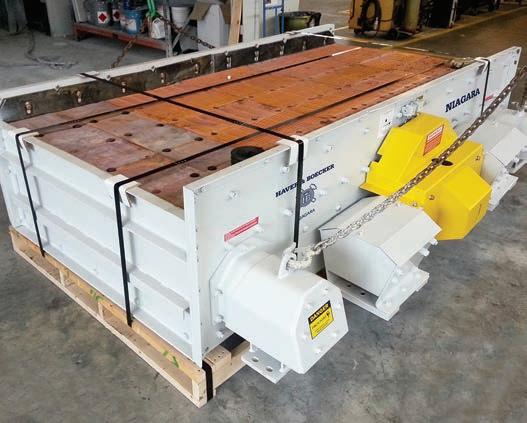
4 Engineered screening studies:
Welcome a technician to visit your facility to evaluate your entire screening process from start to finish. A complete screening consultation results in a smoother, more efficient, and typically, more profitable, operation.
So, when it comes time to upgrade your equipment, consider refurbishment rather than buying new. By doing so, you will receive an even better return on investment (ROI). CMJ
60 | CANADIAN MINING JOURNAL www.canadianminingjournal.com
SCREENS Update
new
at nearly half the cost of purchasing a new
CREDIT: HAVER & BOECKER NIAGARA BEFORE AFTER
old screening equipment with all the bells and whistles of
technology
machine
Peter Kilmurray is Haver & Boecker Niagara’s vice-president of sales for North America and Australia.
ON THE MOVE
Executive, Management and Board Changes in Canada’s Mining Sector
TOP MOVES IN THIS ISSUE
MANAGEMENT MOVES
» Archer Exploration appointed Sherry Roberge as CFO and corporate secretary and Wes Short as VP, corporate development.
» Avalon Advanced named Zeeshan Syed president.

» Beyond Minerals appointed Allan Frame as president and CEO.
R. Stuart
Angus
K92 Mining announced the death of R. Stuart “Tookie” Angus, who served as chair of the company since its inception in 2014. With over 40 years of experience, Angus held management and legal positions at Fasken’s Global Mining Group and served as managing director of mergers and acquisitions for Endeavour Financial. He was also previously Chair of the board of BC Sugar Refinery Limited, a director of First Quantum Minerals, a director of Canico Resource and a director of Bema Gold Corp.

Markus Schmidt has been named president and CEO of Beumer Corporation, the wholly owned U.S. subsidiary of Beckum, Germanybased Beumer Group Schmidt brings more than 30 years of industry experience and 18 years of executive experience and expertise in intralogistics automation, market segment-oriented strategy, and understanding of the unique challenges facing operations throughout North America. Schmidt earned his diploma from the University of Cologne and has sought further education from University of California, Berkeley, the University of Virginia, Darden School of Business and the University of St. Gallen.
Newly named CEO Milad Zareian has been with Nexus Gold as vice president, operation, since September of 2022. He brings over 10 years experience working with both private and public companies in a variety of capacities. He’s been directly involved with IPO, RTO and start-ups, having led financing, IR and business development initiatives for multiple companies, including. Zareian holds a bachelors in Psychology and French from University of South Carolina.
» Carmanah Minerals announced Fraser Rieche as interim CEO and director.
» Centerra Gold appointed Paul Tomory as CEO.
» Ceylon Graphite hired Klaus Leiders as chief mining manager.

» Collective Metals appointed Navin Sandhu as CFO.
» Copper Mountain Mining named Patrick Merrin as president and CEO.
» E-Power Resources appointed James Cross as president and CEO, and Jamie Lavigne as VP of exploration.
» Highlander Silver named Leandro Echavarria as VP exploration.
» Honey Badger named George Davis as president and CEO.
» Iamgold announced Renaud Adams as president and CEO.
» Lode Metals announced Jon Bey as president, CEO, and board member.
» Lundin Gold named Terrence Smith as COO and Chester See as interim CFO.
» Mandalay Resources announced Frazer Bourchier as president and CEO.
» New Energy Metals appointed Nilda Rivera as CFO and corporate secretary.
» Newfoundland Discovery named Jeremy Prinsen as CEO.

» Newpath Resources appointed Douglas Turnbull as CEO.
» Nickel Rock appointed Tim Fernback as president and CEO.
» Nortec Metals named Cameron Bell as VP, exploration.
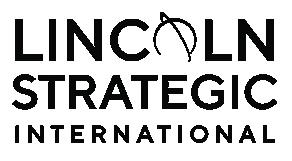
» Northern Graphite appointed Kirsty Liddicoat as COO and Dave Marsh as CTO.
» OceanaGold named Marius van Niekerk as CFO.
» Pacific Bay announced Reagan Glazier as president and CEO.
» Pedro Resources appointed Albina Manaj as CFO.
» Power Metals appointed Gerry Brockelsby as CEO.
» Premium Nickel Resources appointed director Sean Whiteford as president.
» Pure Energy Minerals announced Xavier Wenzel as CFO.



» Ring of Fire appointed Kristan Straub as CEO and Annie Sismanian as CFO.
» RooGold appointed David Melling as CEO.
» Roscan Gold named Jun Cao as CFO.
» Royal Road Minerals announced Ivan Devia as the VP America.
» Sandfire Resources named Lincoln Greenidge as CEO and Sabino Di Paola as CFO.
» Silver Mountain named Alvaro Espinoza as CEO.
» Snowline Gold appointed Thomas Branson as VP exploration.
MARCH 202 3 | VOLUME 4 | ISSUE 3
SPONSORED BY ERIK BUCKLAND Client Director Global Mining Recruitment M: +1 416.854.8468 E: erik.buckland@lincolnstrategic.com W: www.lincolnstrategic.com
Markus Schmidt
“Tookie”
Milad Zareian
MAY 2023 CANADIAN MINING JOURNAL | 61
BOARD ANNOUNCEMENTS MANAGEMENT MOVES

» Solstice Gold announced David Adamson as chair and interim CEO.
» Spanish Mountain Gold appointed Peter Mah as interim CEO.
» Sulliden Mining appointed Rennie Morkel as CEO and a director.
» Teako Minerals appointed Sven Gollan as CEO.
» Vortex Energy appointed Paul Sparkes as CEO and director of the company.
» Wescan Goldfields announced W. Connor MacNeill as interim CFO.
» Western Star Resources appointed Monty Sutton as CFO and Justin Corinella as director.
» West Mining named Natasha Tsai as its CFO.
» Zacapa Resources announced founder and chair, Ian Slater, as CEO.

» A.I.S. Resources appointed Andrew Neale as a director.
» Allied Copper elected Maury Dumba to its board.
» EGR Exploration added David Stevenson to the board.
» Elevation Gold appointed David Peat to the board.
» Filo Mining appointed Joyce Ngo and Peter J O’Callaghan to its board.
» Flying Nickel Mining added Greg Hall to the board.
» Granite Creek Copper added Robert Sennott to the board.
» Green Shift Commodities named Peter Mullens as executive chair and a director.
» Hercules Silver appointed Kelly Malcolm as an independent director.
» Highlander Silver added Graeme Lyall to the board.
» Idaho Champion named Gabriel Pindar to the board.
» Indigenous Resource Network announced John Desjarlais as director.
» Kincora Copper added Luke Murray to the board.
» Lithium One Metals announced James Bahen as a director.
» Lundin Mining named Maria Olivia Recart to the board.
» MP Materials added Arnold W. Donald to the board.
» Millennial Potash appointed Mark D. Stauffer to the board.
» Nevada Vanadium Mining appointed Ron Espell to its board.
» New Energy Metals appointed Keenan Hohol to the board.
» Northcliff Resources added CEO Andrew Ing to the board.
» Prospect Ridge Resources named Michael Michaud and Yan Ducharme as directors.
» Regulus Resources named Adam Burley to the board.

» Rock Tech announces the resignation of former director Jutta Dönges
» Royal Road Minerals announced Hugh Devlin as executive director operations and sustainability.
» Scorpio Gold added Peter Hawley to the board.
» Silver Bull Resources named William Matlack to the board.
» Sixty North Gold appointed John Carter and Tom MacNeill to the board.
» Solaris Resources announced Poonam Puri as an independent director.
» Solis Minerals appointed Matthew Boyes as director.
» Star Diamond named Marilyn Spink to the board.
» United Lithium announced Iain Scarr has joined the board of directors.
» United Lithium named Cathy Fitzgerald to the board.
» Uranium Energy appointed Trecia Canty to the board.
» Valorem Resources appointed Jonathan Victor Hill to the board.
» Visionary Gold appointed David R. Miller to the board.

ADVERTISERS INDEX AMC Consultants 62 www.amcconsultants.com BBA Engineering 45 www.bba.ca Brandt Group 7 www.brandt.ca CR Mining 53 www.crmining.com Eriez Manufacturing 55 www.eriez.com Haver & Boecker 47 www.haverniagara.com/pro-check Hepburn Engineering 22 www.hepeng.com Hercules Sealing 64 www.herculesca.ca HRH Workforce 44 www.hrhworkforce.com JH Fletcher 15 www.jhfletcher.com Maestro Digital Mine 5 www.maestrodigitalmine.com Martin Engineering 25 www.martin-eng.com 10 www.redpathmining.com 20 www.richwood.com 35 www.rosta.com 32/33 www.rocktechnology.sandvik 64 www.sidedump.com/ce 2 .............................. www.smsequip.com 39 www.sofvie.com 27 www.sprs.com 57 www.srk.com 42 www.titanenviro.com 13 www.vega.com/radar BUSINESS DIRECTORY Cylinder Repair Seals, Kits & Cylinder Repair Parts For Mining Equipment. STOCKED FOR SAME DAY SHIPPING! BARRIE, ONTARIO T 800.665.7325 | F 800.565.6990 barrie@HerculesCA.ca MONTREAL, QUEBEC T 800.565.6534 | F 800.263.9533 montreal@HerculesCA.ca Online Ordering www.HerculesCA.ca 1,800+ CLIENTS | 8,000+ PROJECTS 38+ YEARS’ EXPERIENCE Corporate Consultancy Geotechnical Engineering Geology Mining Engineering amcconsultants.com 1,800+ CLIENTS | 8,000+ PROJECTS 38+ YEARS’ EXPERIENCE Corporate Consultancy Geotechnical Engineering Geology Mining Engineering amcconsultants.com 1,800+ CLIENTS | 8,000+ PROJECTS 38+ YEARS’ EXPERIENCE Corporate Consultancy Geotechnical Engineering Geology Mining
amcconsultants.com
CLIENTS | 8,000+ PROJECTS
EXPERIENCE Corporate Consultancy Geotechnical
Geology
62 | CANADIAN MINING JOURNAL www.canadianminingjournal.com
Engineering
1,800+
38+ YEARS’
Engineering
Mining Engineering amcconsultants.com
EQUIP YOUR TEAM WITH THE
Leverage the industry knowledge of mining’s leading news and data channels to super charge your sales team with a TNM NEWS + DATA Group Membership
Keep your team up to date and in the know with unlimited access to every story from
+
Help clients discover your products and services and boost your SEO with a featured listing on

Uncover the right prospects with trusted market intelligence on thousands of companies, properties, and personnel from

Easily manage your team’s access through our intuitive Group Admin interface on
Get All of These Features and More, Plus Save Up to 45% With a Group Membership
LEARN MORE AT MEMBERSHIP.TNM.GLOBAL/ENTERPRISE

sidedump.com/ce 800-779-8099 Learn about our cost estimator Hauling ore more than 7 km? Try double tub tipper mine trailers





















 By Joseph Jalasi, Rachel Howie, and Diora Ziyaeva
By Joseph Jalasi, Rachel Howie, and Diora Ziyaeva

















































































































